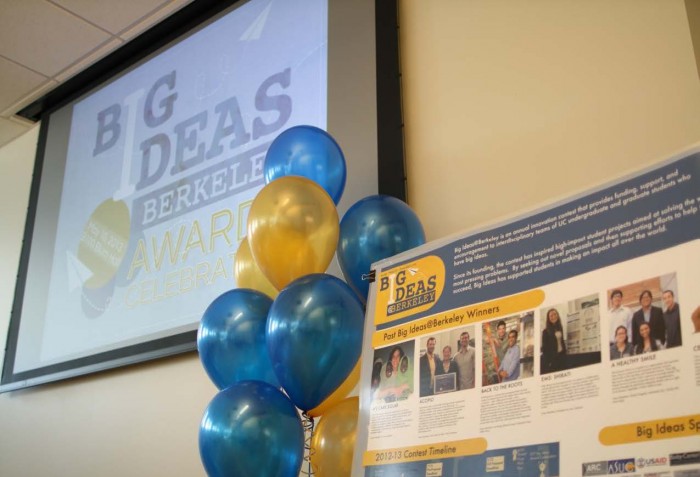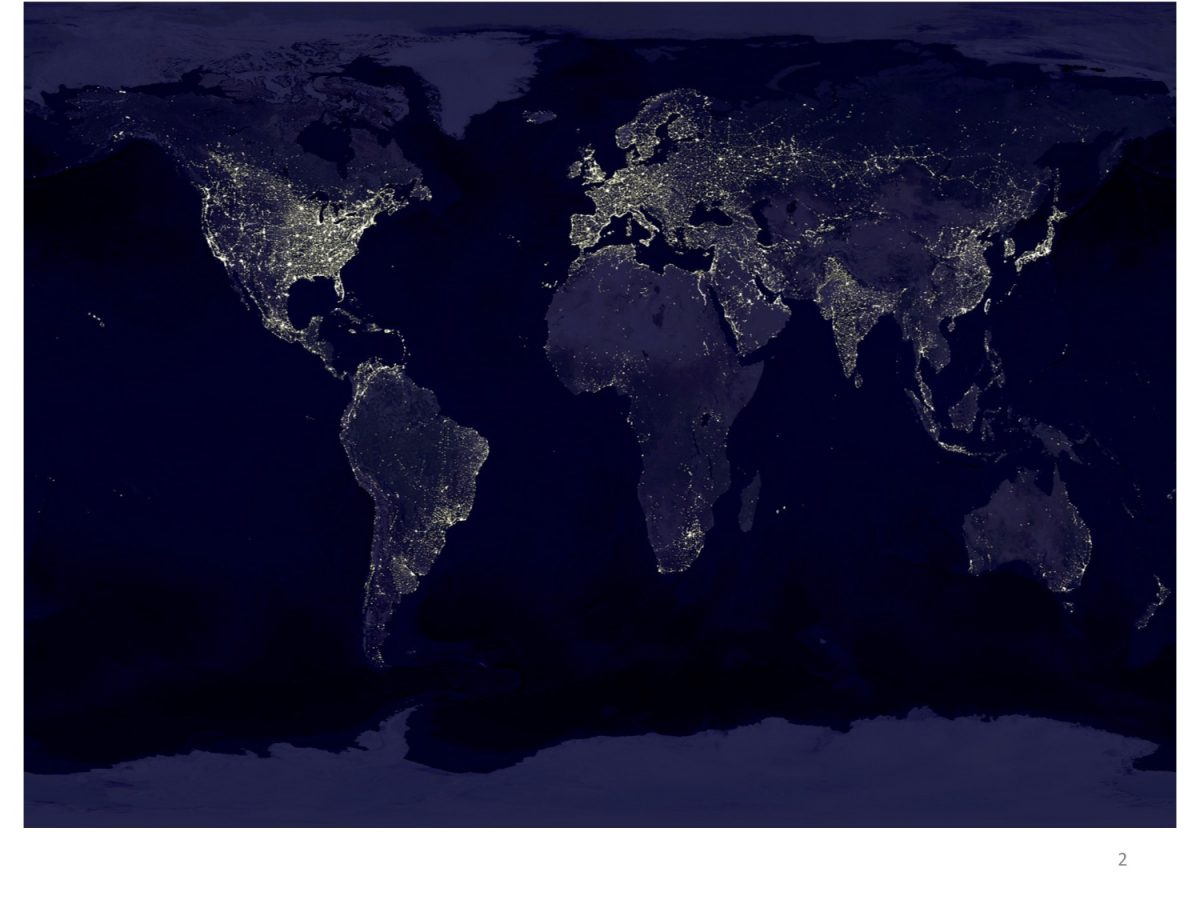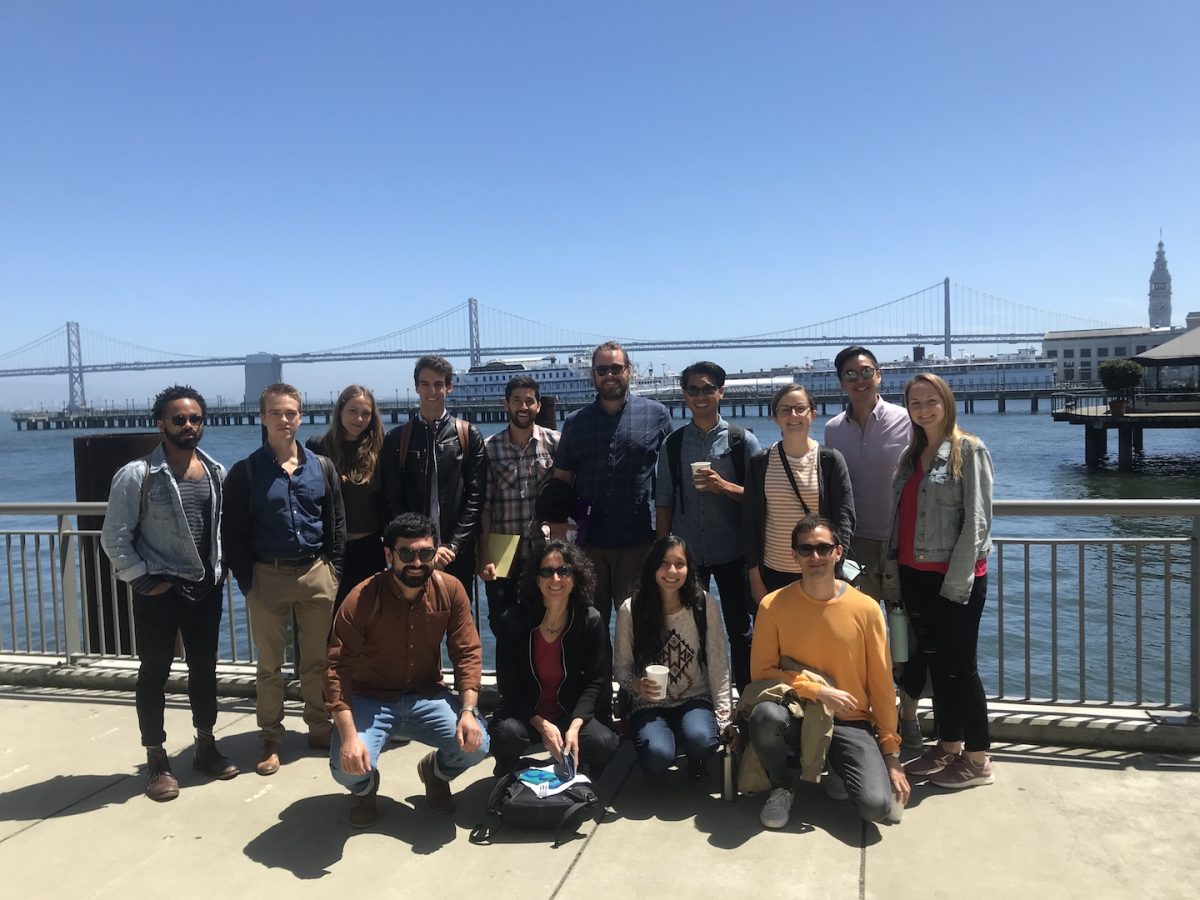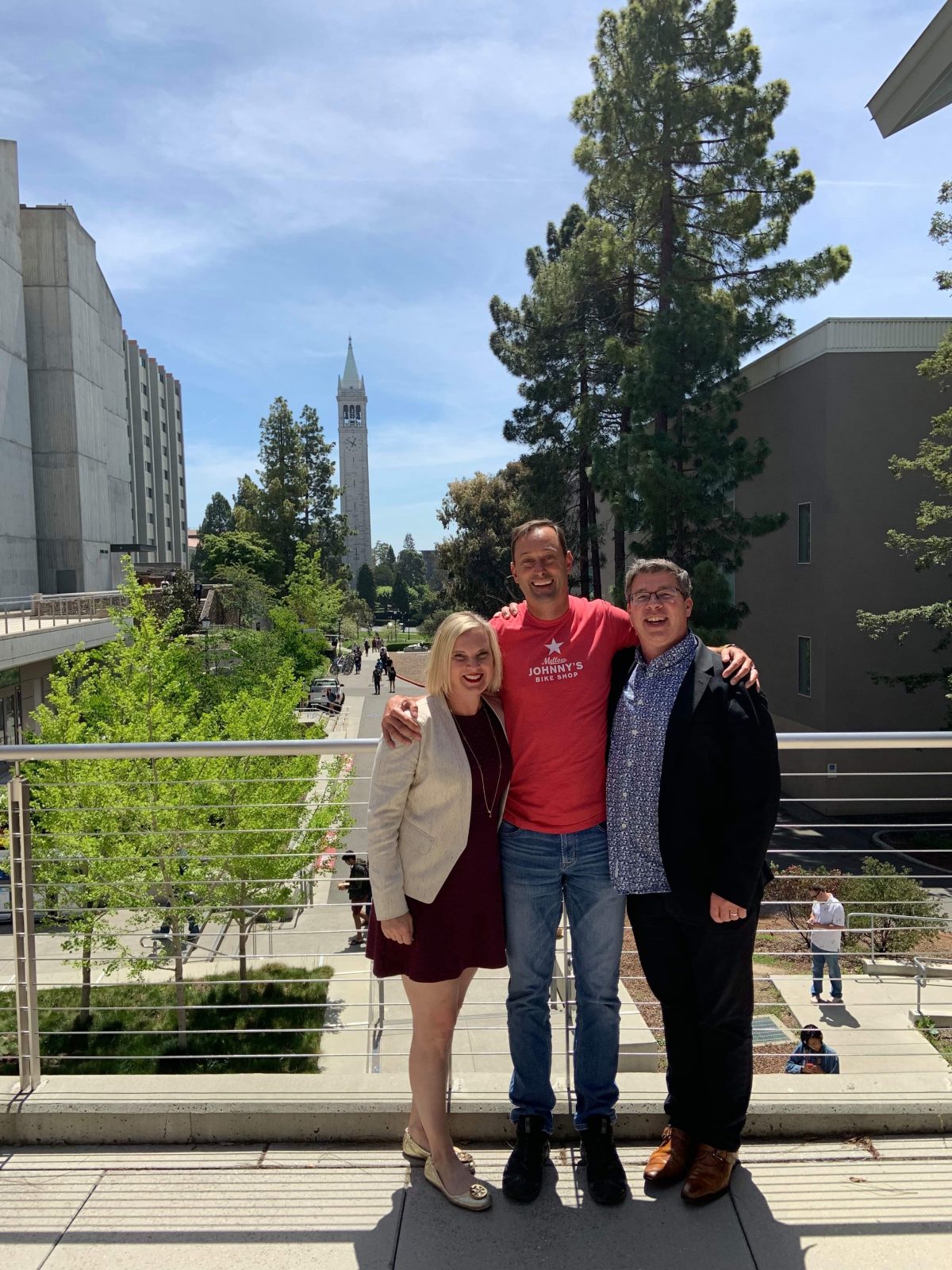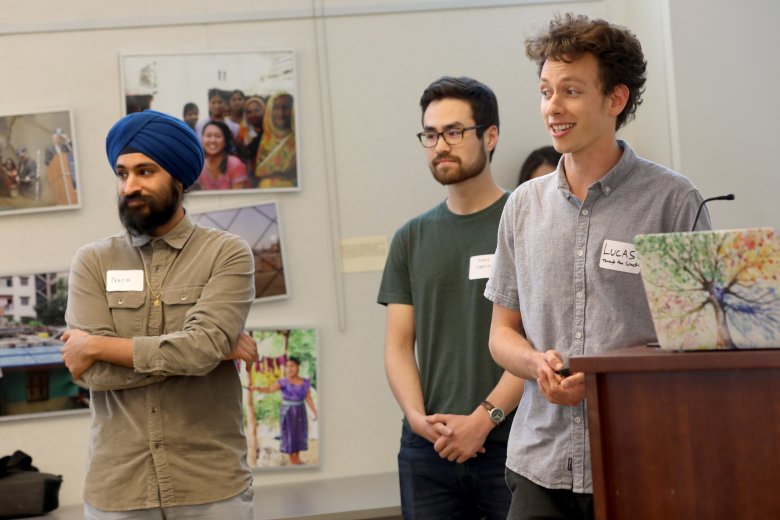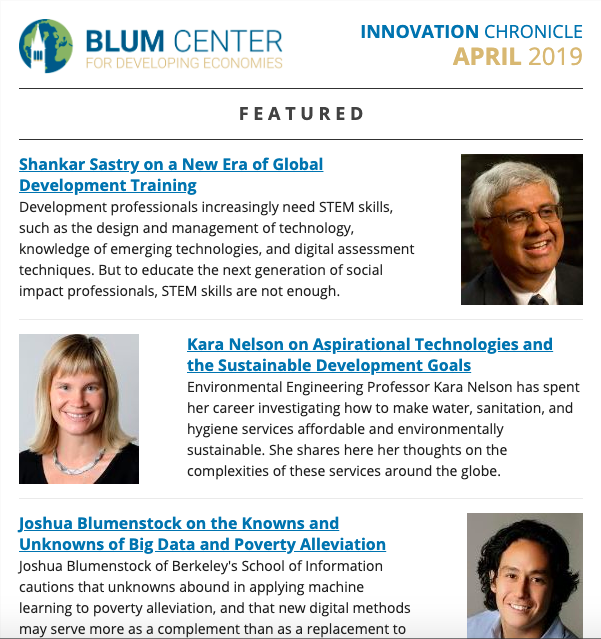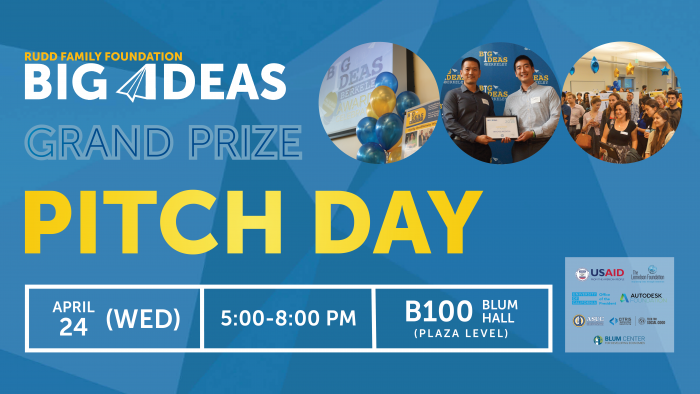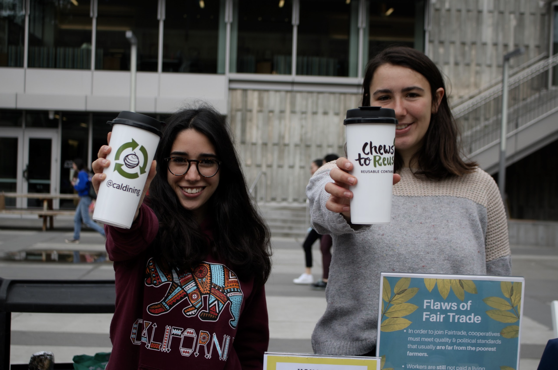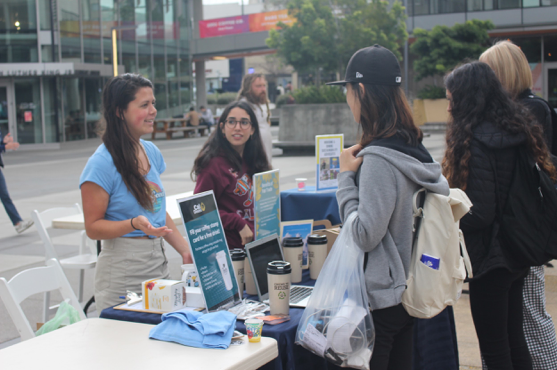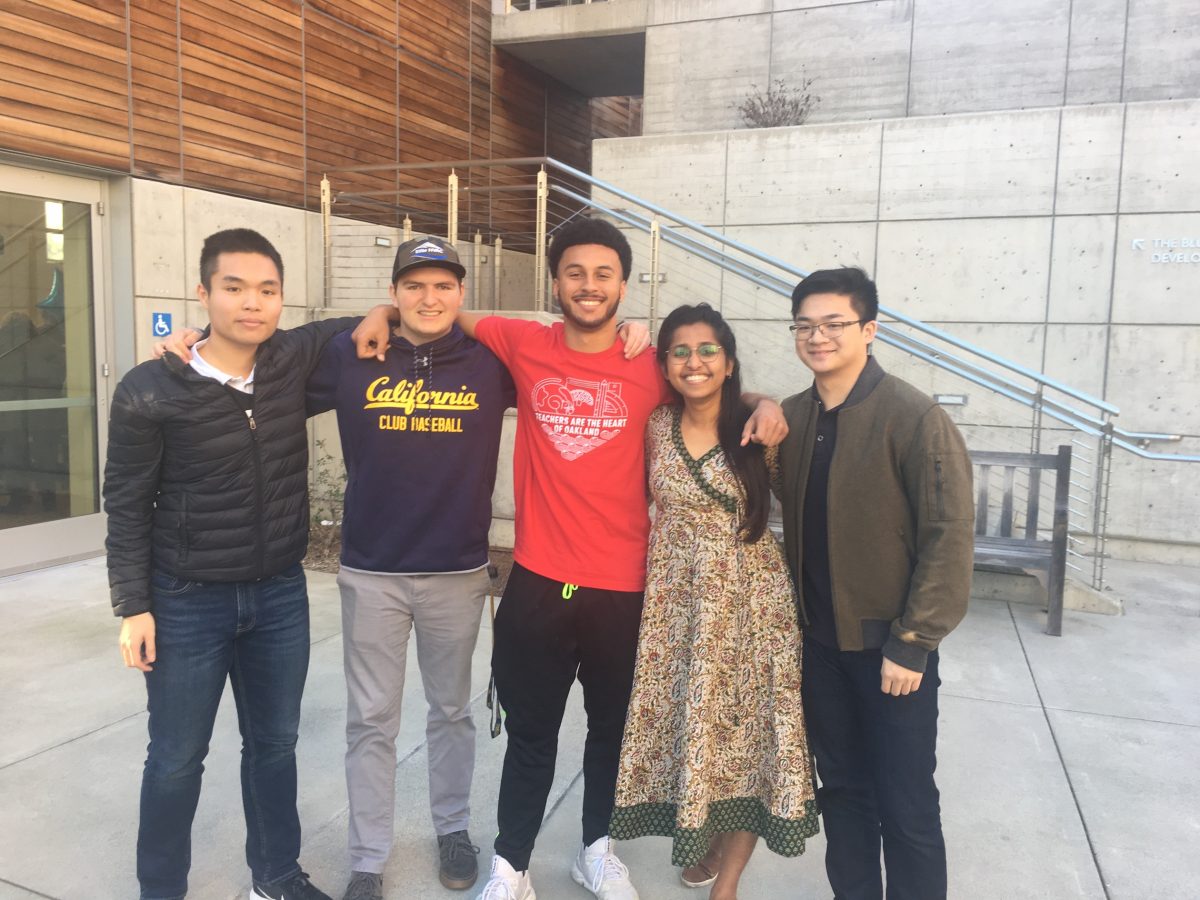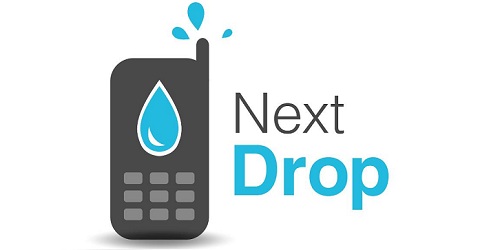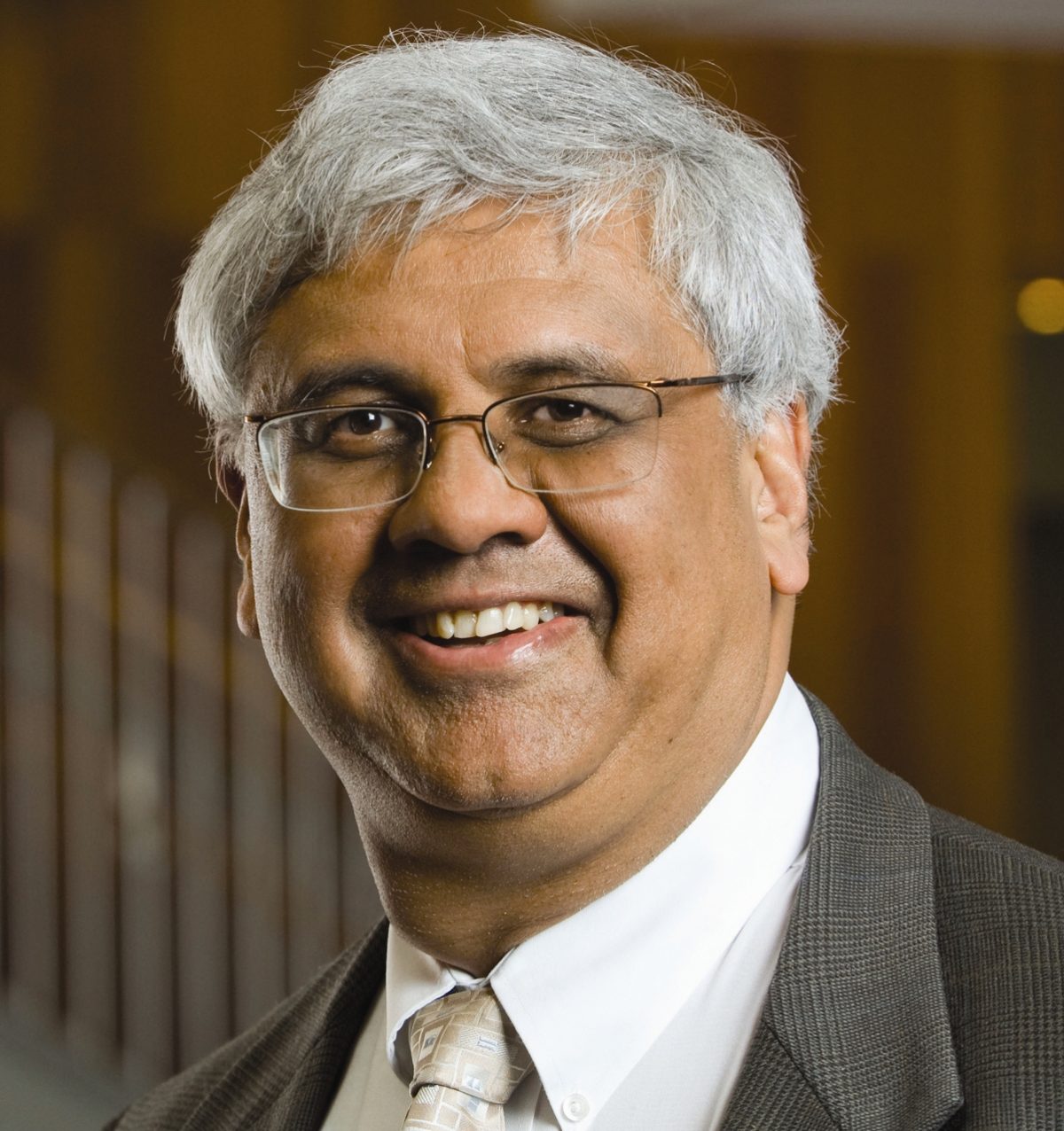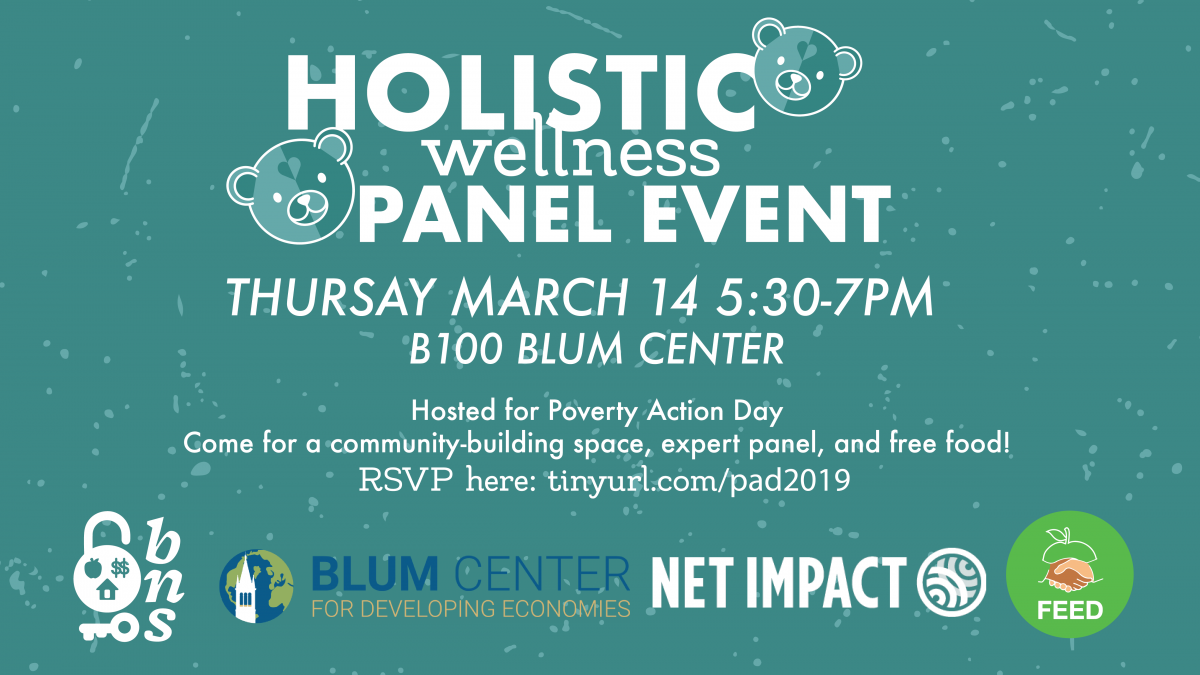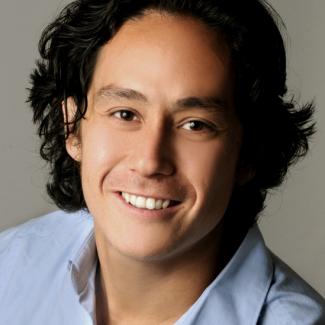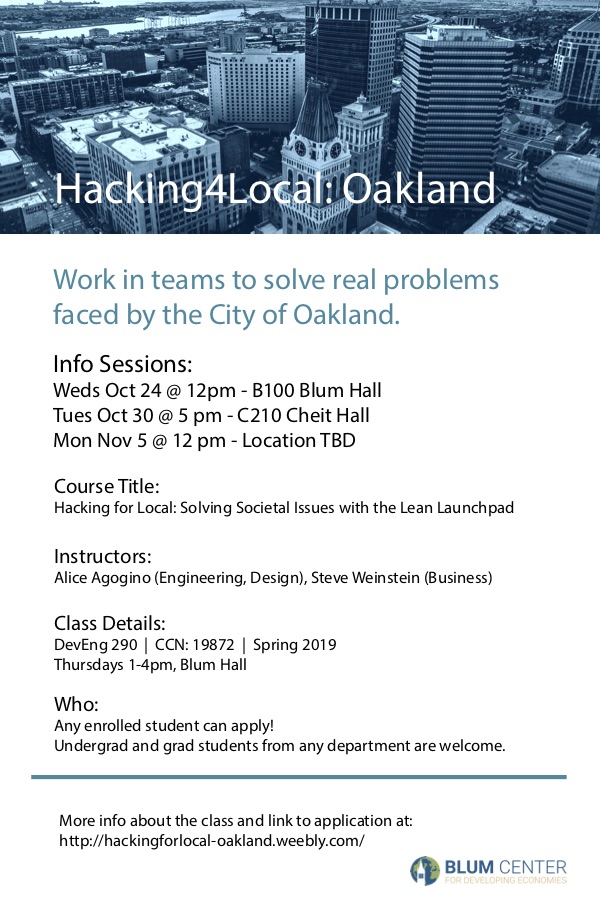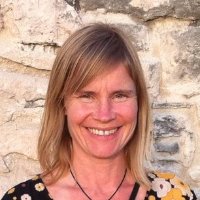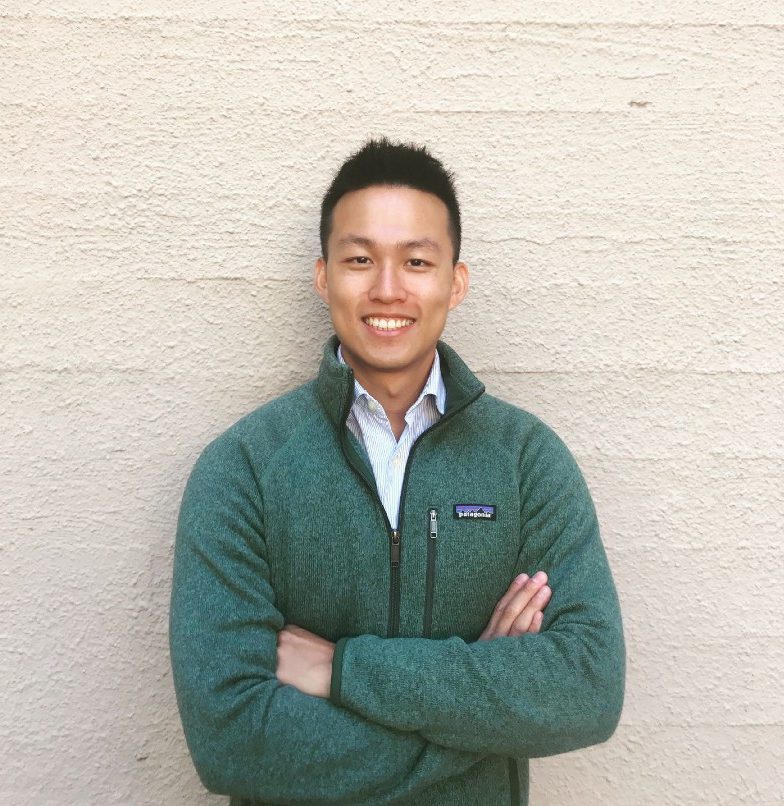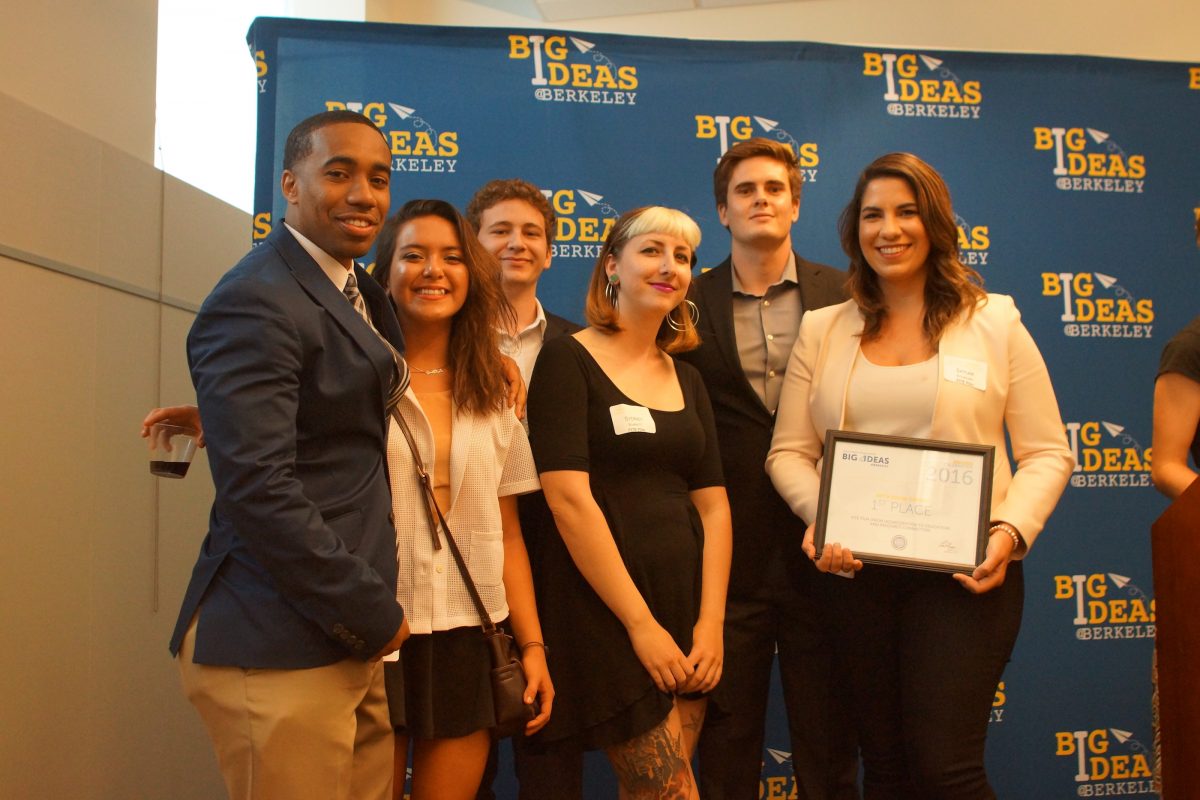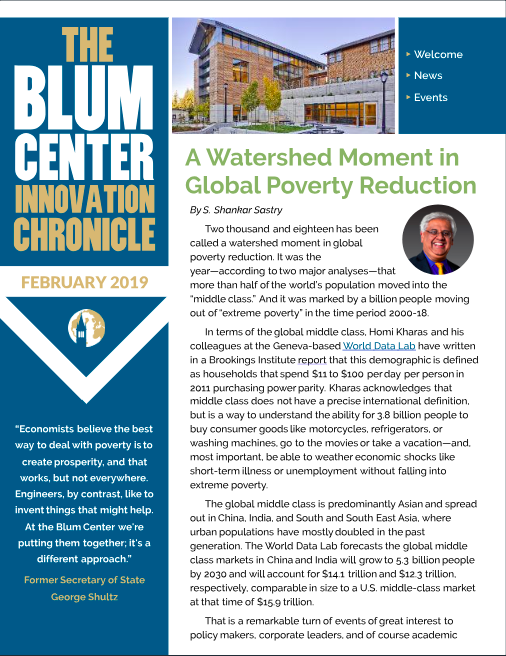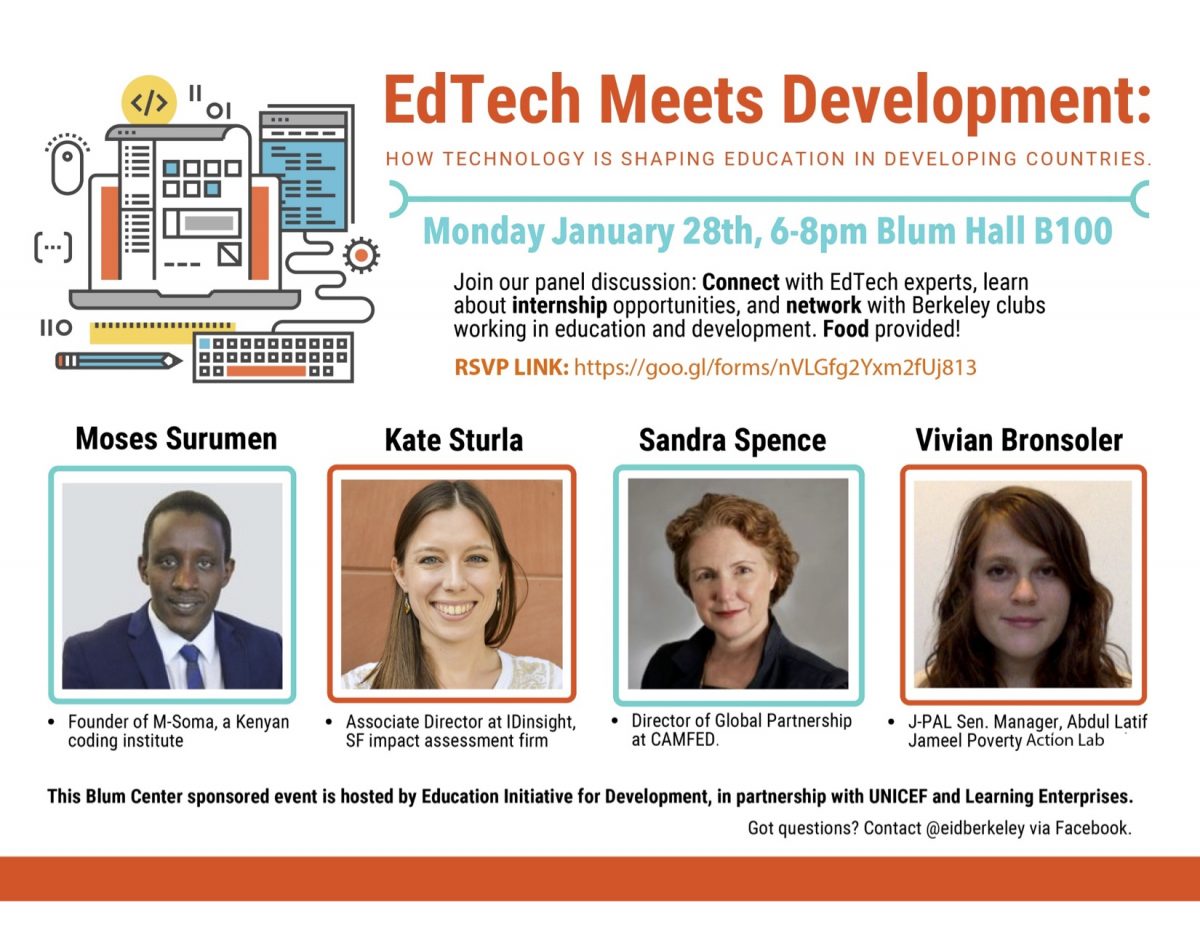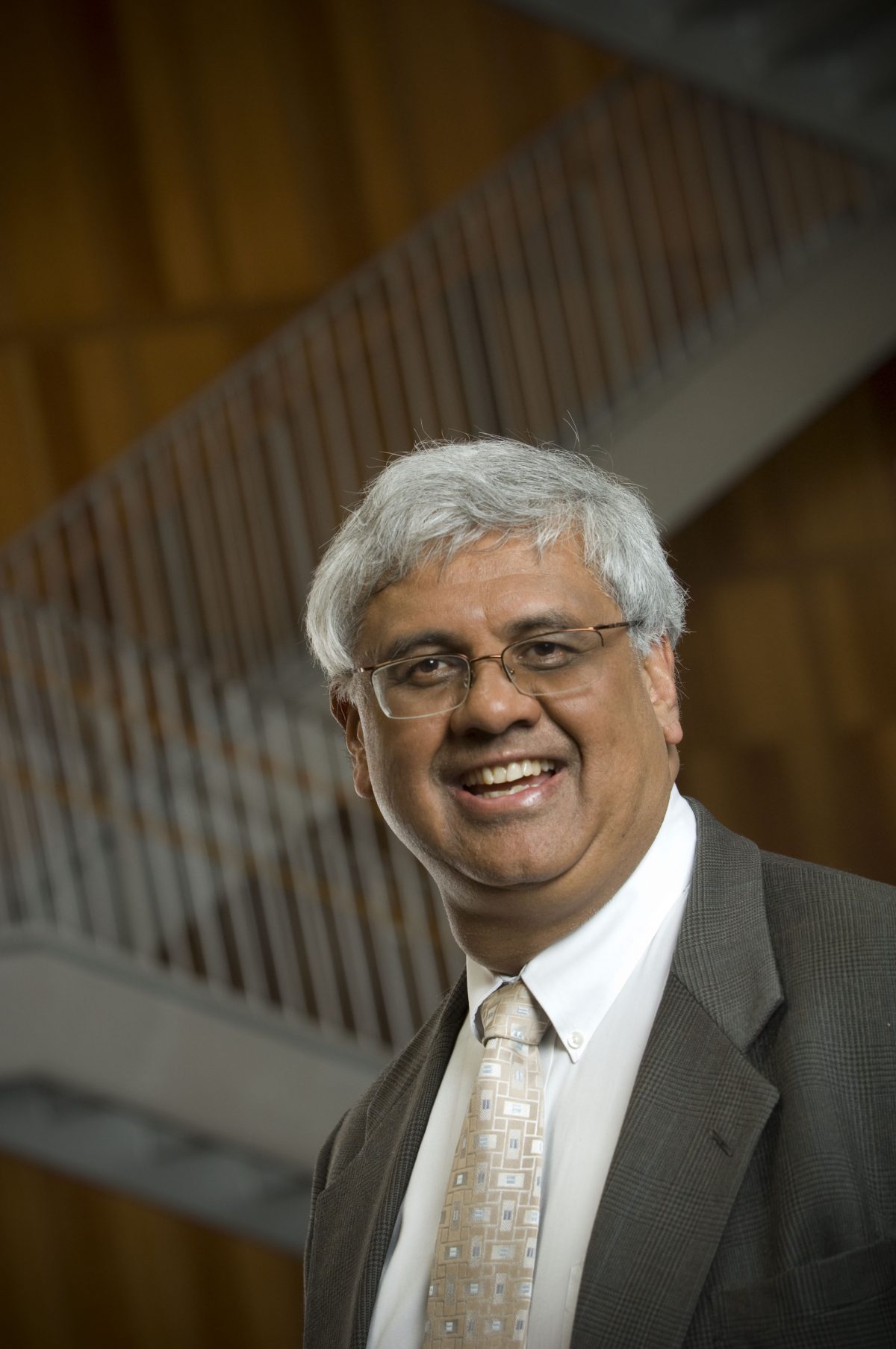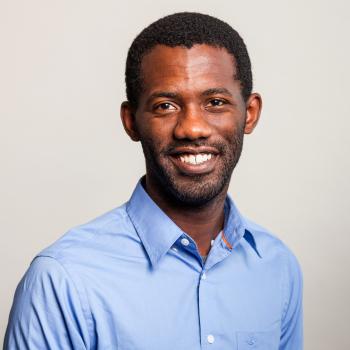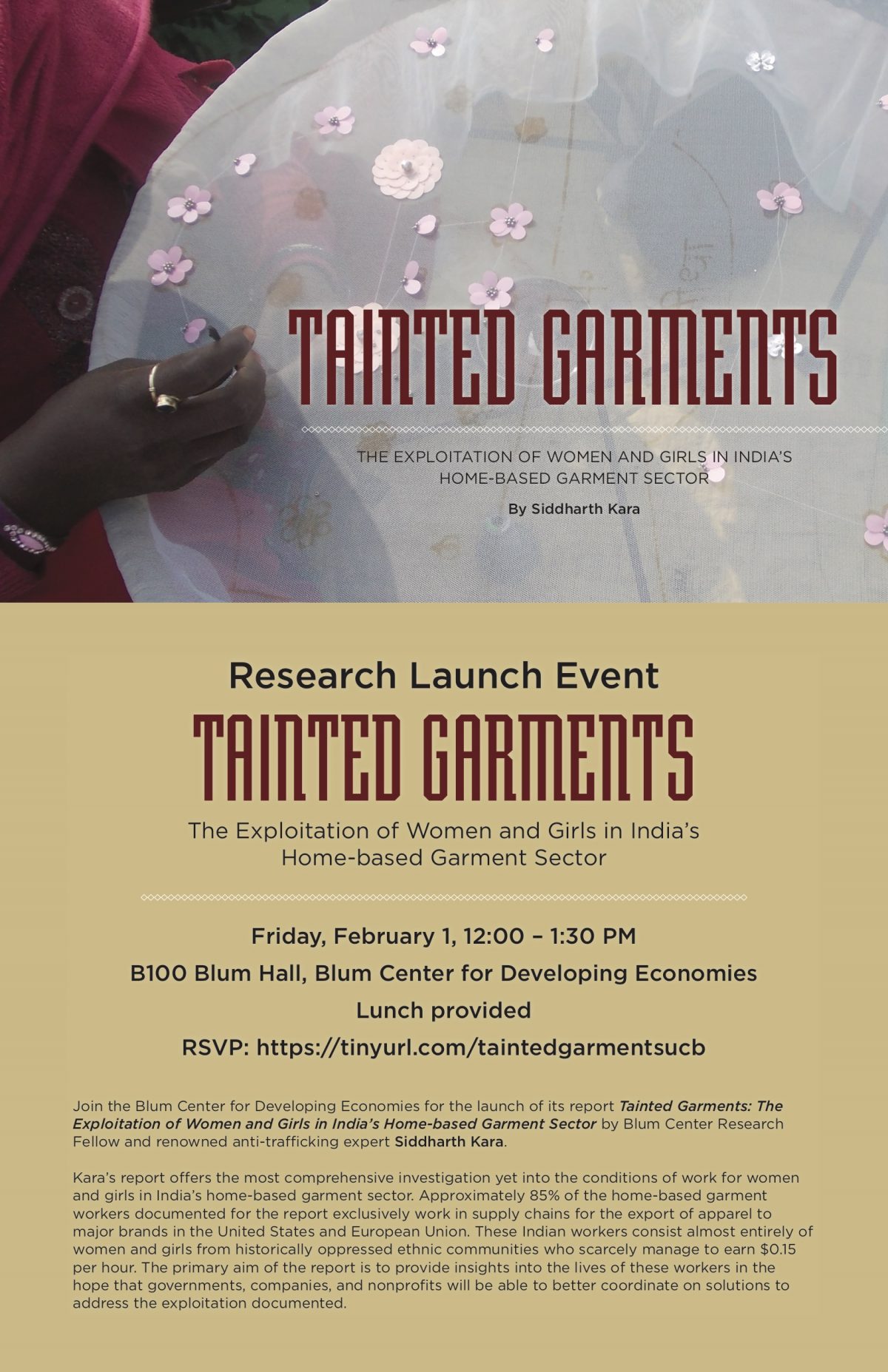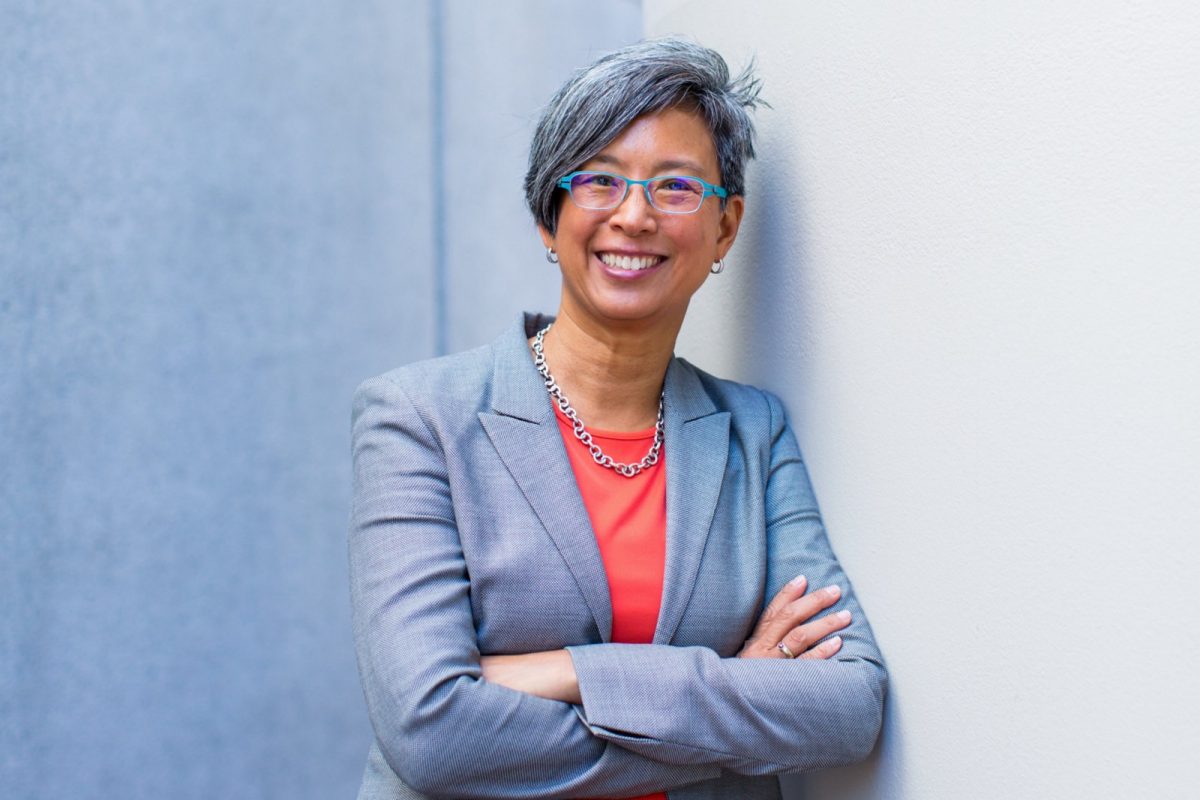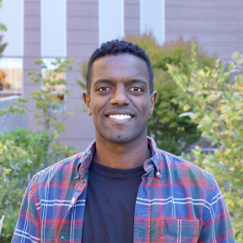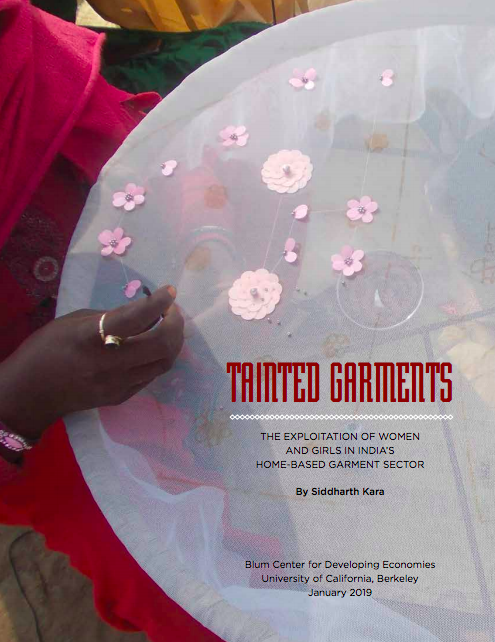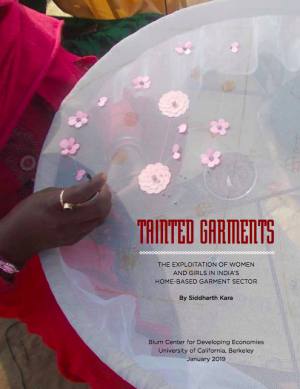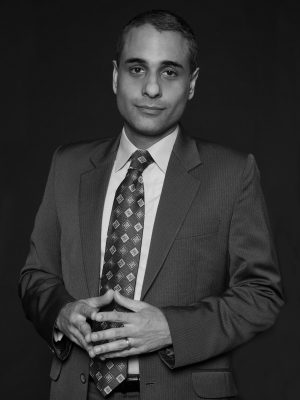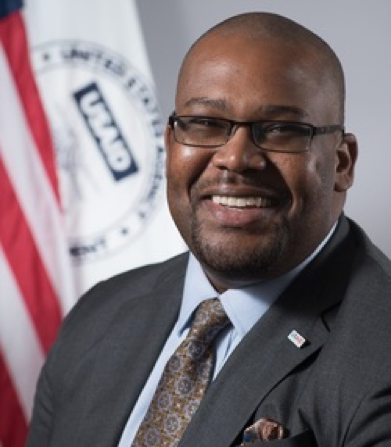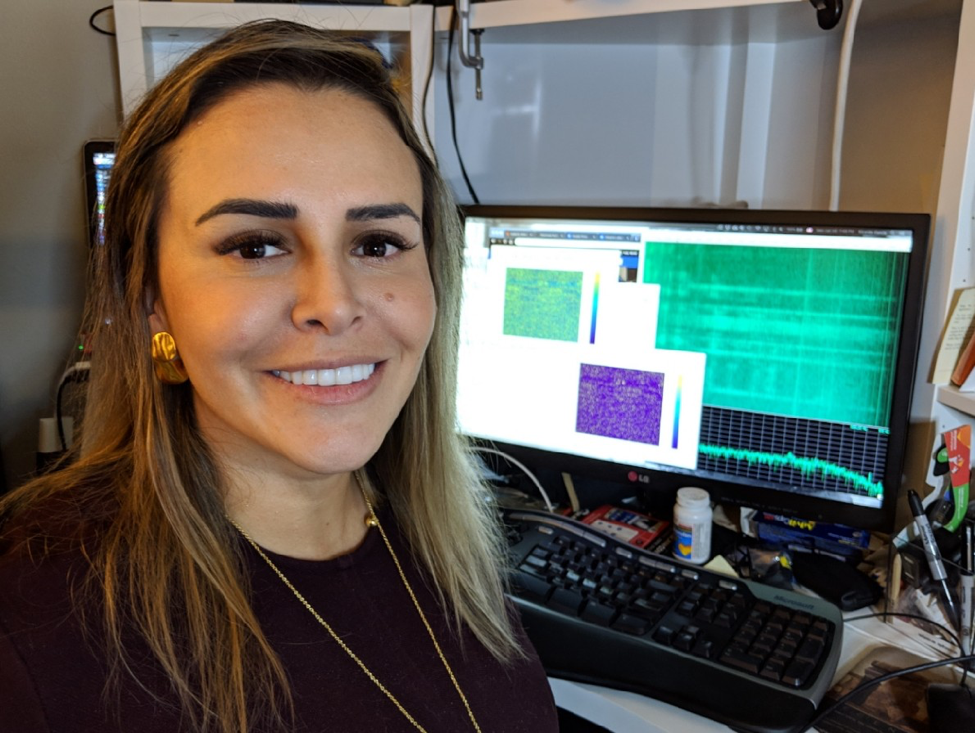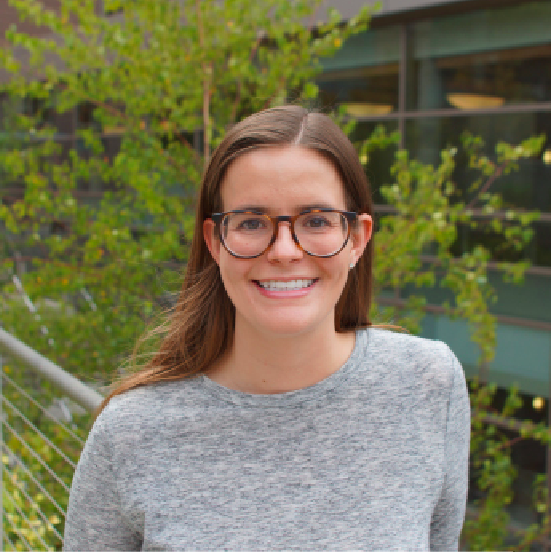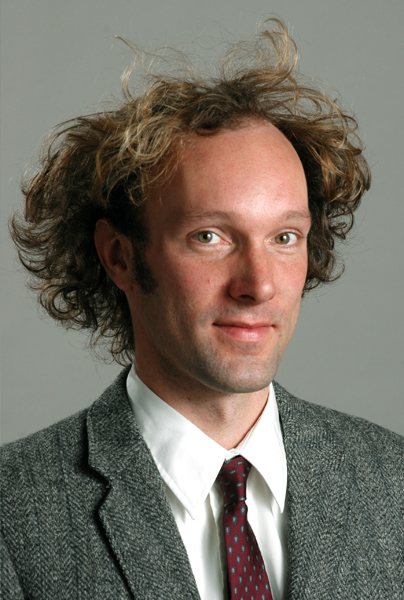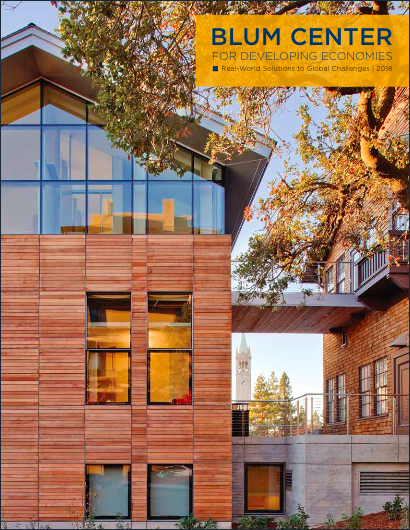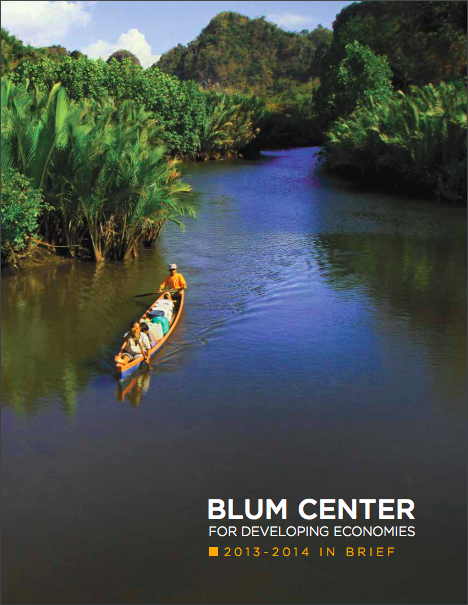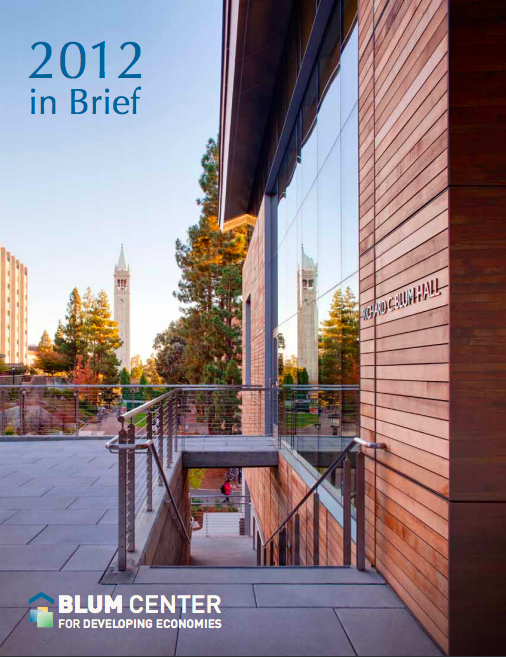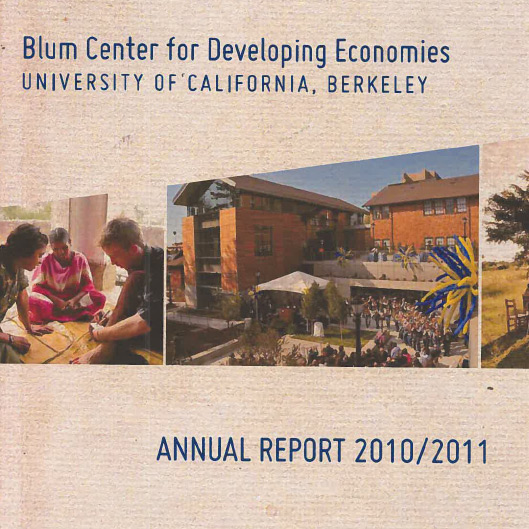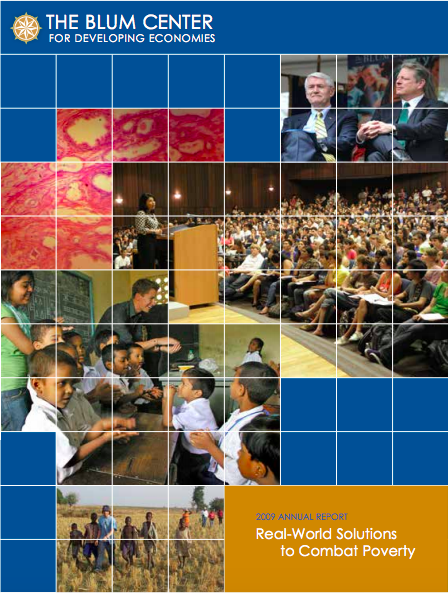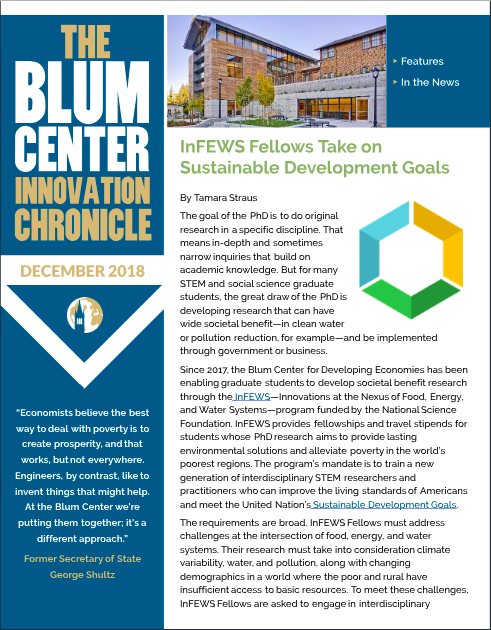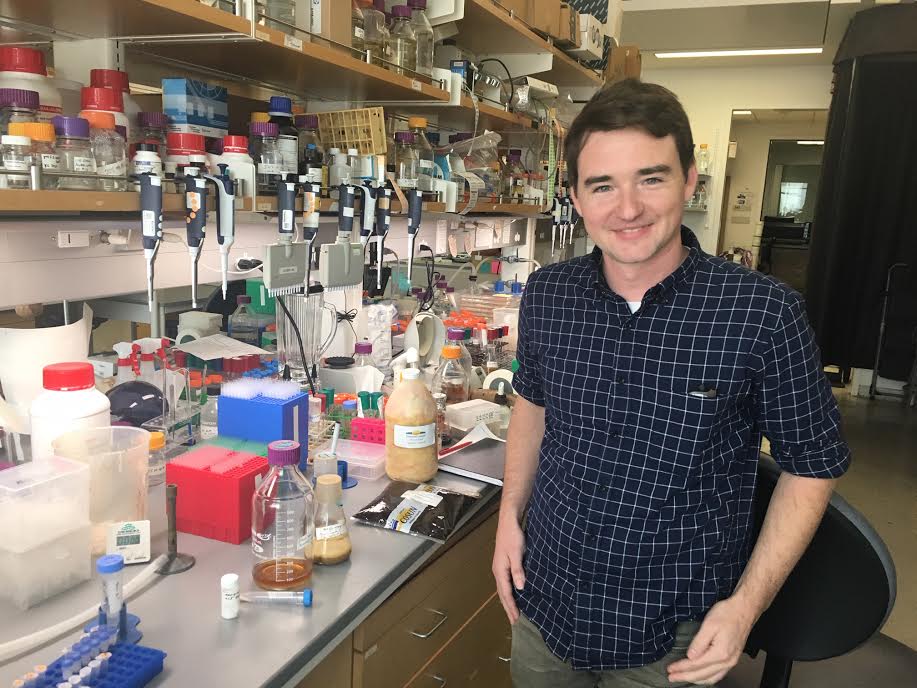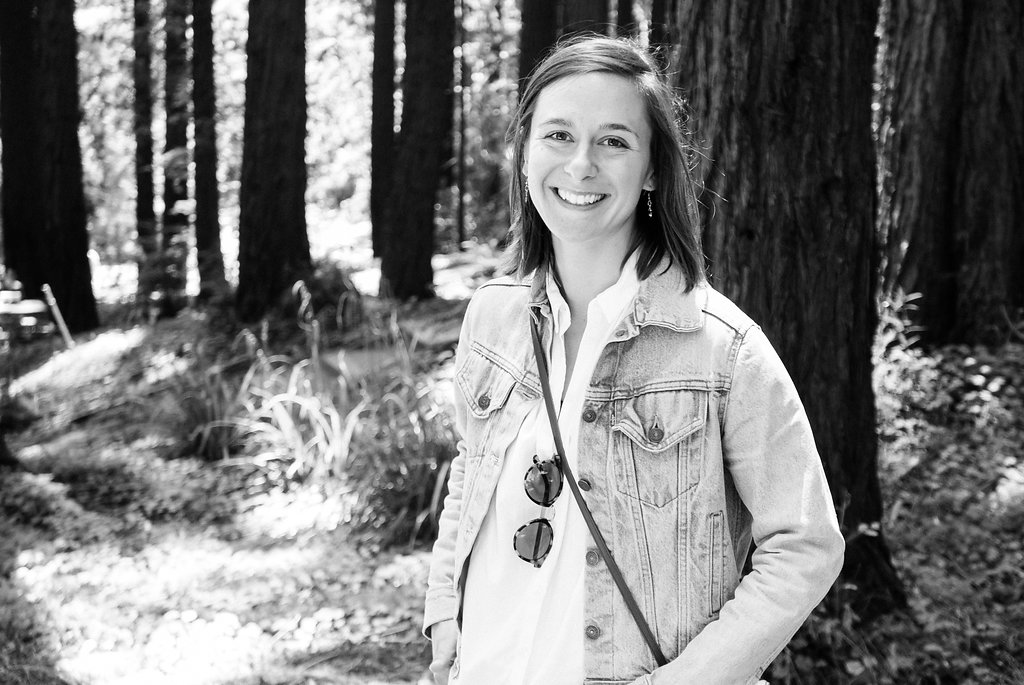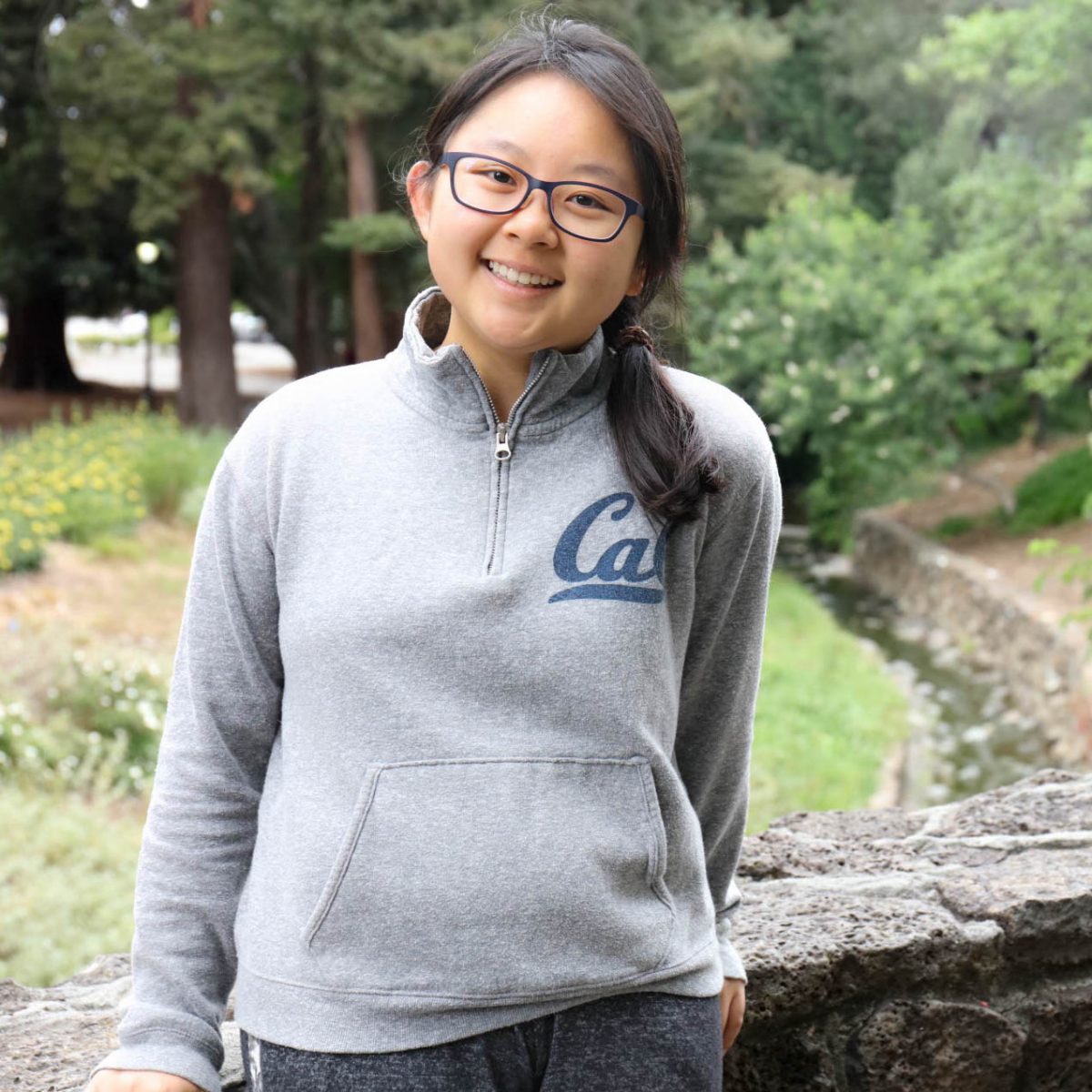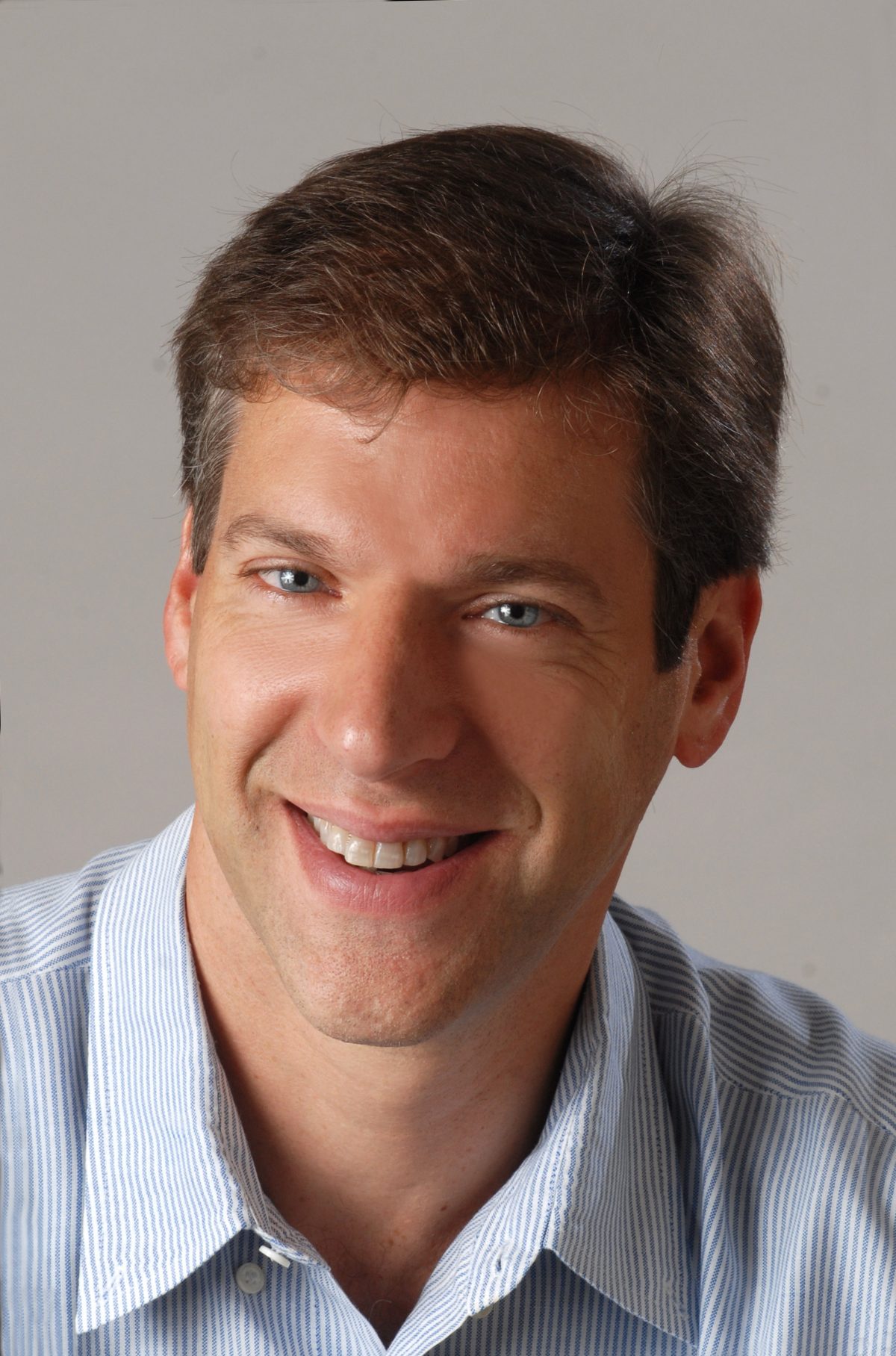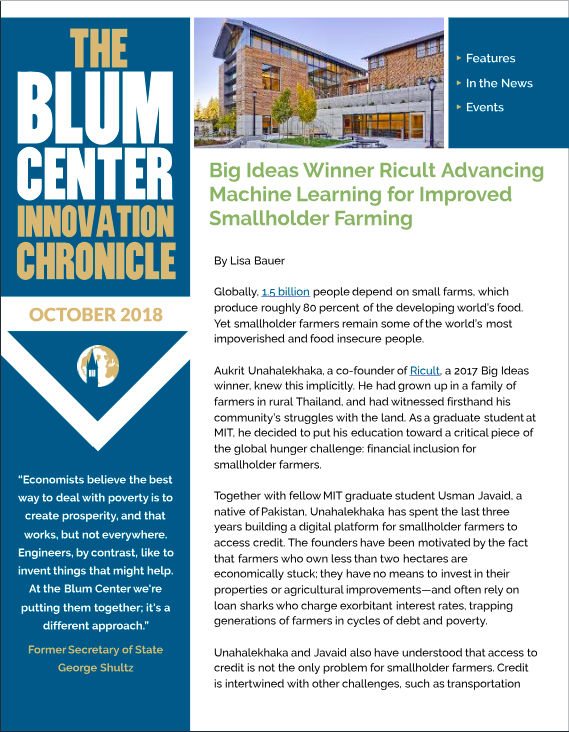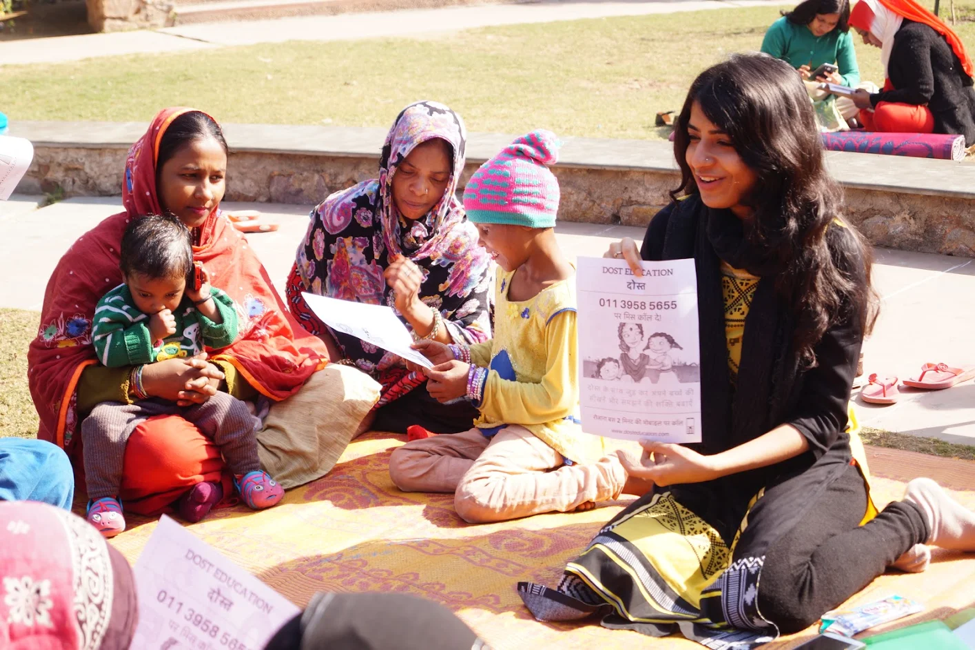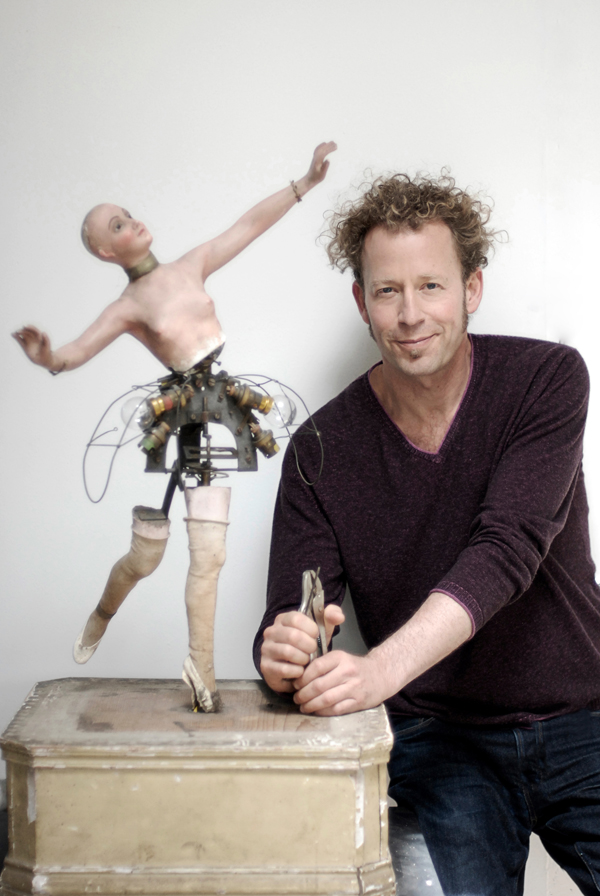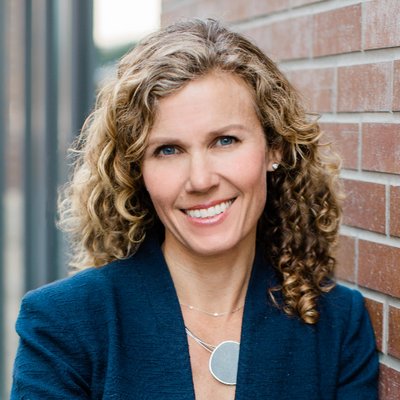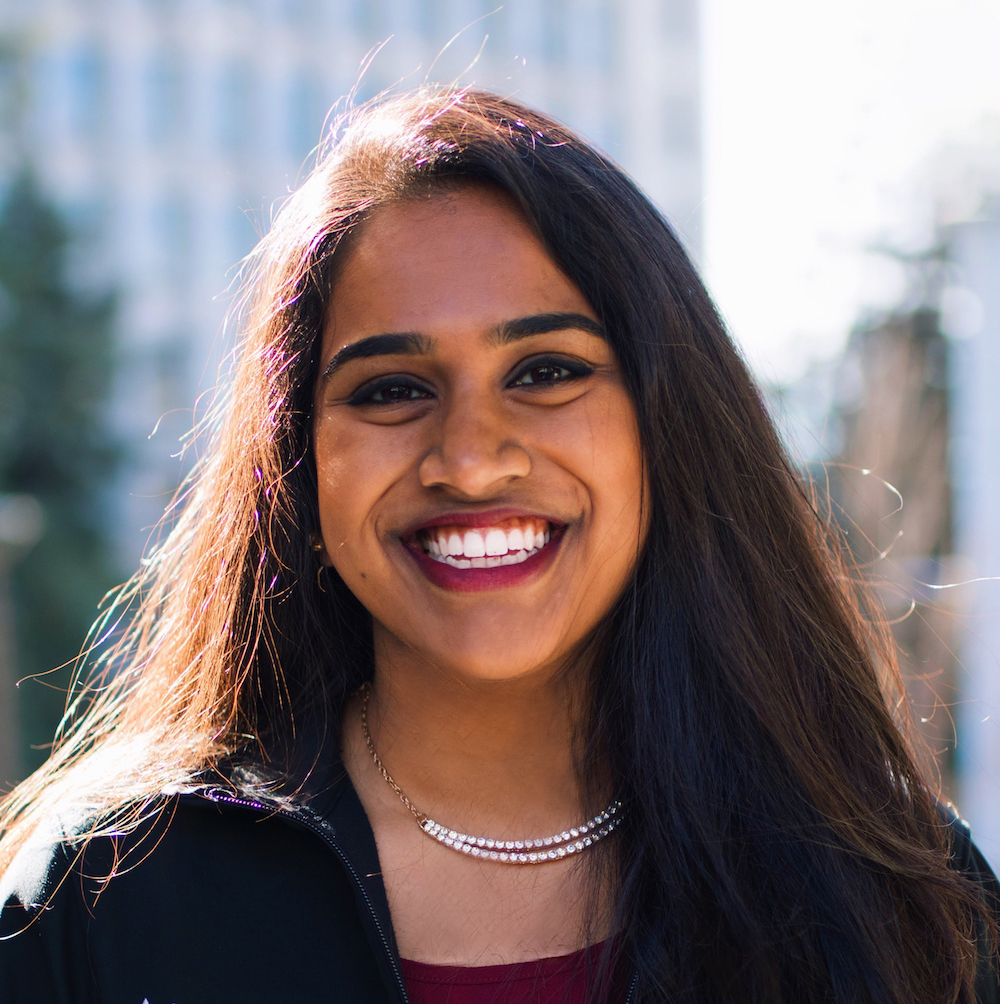How do you become a social entrepreneur? The question has been the subject of many articles, books, and TED talks. For applicants to the Big Ideas social innovation contest, however, the answer is fairly simple: motivation and mentorship.
Author: Kap Stann
Development Engineering Graduates Producing Solutions Scholarship
Engineers have the potential to play an instrumental role in helping marginalized communities improve their living conditions. That is because engineers are adept at applying the principles of science and math to develop socio-economic solutions. For much of the 20th century, people trained in history, law, and sociology were seen as the primary actors for alleviating poverty. Increasingly, engineers who can assimilate these and other disciplines are today’s poverty alleviation strategists—aware that today’s technological leaps forward are creating inequalities that need multiple forms of redress.
The Development Engineering PhD designated emphasis was launched with this in mind. An interdisciplinary training program for UC Berkeley doctoral students from any field, the program requires dissertation research on the application of technology to address the needs of people living in poverty. Originally seeded by USAID, the Development Engineering field is growing. During the 2018-2019 academic year,18 additional students enrolled in the program representing a growth of more than 160 percent from the previous year. They include nine students from the College of Engineering, six students from the College of Natural Resources, two from the College of Environmental Design, and one from the School of Education. Beyond this disciplinary heterogeneity, the program attracts a diverse pool of students: 50 percent of the incoming cohort are women and 25 percent are underrepresented minorities.
Now in its fifth year, the Development Engineering program is producing a wide range of scholarship and its graduates have gone on to positions in academia, industry, the nonprofit sector, and their own enterprises. Below are summaries of recent graduates’ dissertation research.
Inspecting What You Expect: Applying Modern Tools and Techniques to Evaluate the Effectiveness of Household Energy Interventions (2016)
Author: Ajay Pillarisetti, Postdoctoral Researcher at UC Berkeley
Advisor: Kirk R. Smith, Professor of Global Environmental Health
Many low-income families in North India rely on solid fuel use for household cooking, heating, and lighting. Use of these fuel sources result in exposure to fine particles (called PM 2.5) and is one of the leading causes of ill health globally (approximately 4 million premature deaths). This dissertation examines the rollout of PM sensors in these environments, the deployment of 200 advanced cookstoves to pregnant women in India, and examines the adoption rates of various cookstoves in rural districts.
Quantifying the Crisis of Cooking: Next Generation Monitoring and Evaluation of a Global Health and Environmental Disaster (2016)
Author: Daniel Wilson, CEO, Geocene: Sensors and Analytics Connected
Advisor: Ashok Gadgil, Professor of Civil and Environmental Engineering
Since the beginning of the modern Darfur conflict in 2003, violence has forced Darfuri families from their homes.The impetus for the Berkeley-Darfur Stove (BDS) is to reduce the burden and danger IDP women face when acquiring fuel in and around the camps. The BDS’s improved thermal efficiency allows women to cook food using less fuel than a traditional three-stone fire.
In the Global South, cooking stoves’ contribution to human disease is comparable to dirty water and is responsible for more annual deaths than AIDS, malaria, and tuberculosis combined. While biomass-burning stoves generate over 1 billion tonnes of carbon dioxide annually, the shipping of resources to communities often increases carbon dioxide use. Though estimating carbon dioxide use is often a flawed science, quantifying this ecological and health problem is a first step to addressing the solutions.
Health, Human Capital, and Behavior Change: Essays in Development Microeconomics (2016)
Author: Angeli Kirk, Affordable Internet Research Manager at Facebook
Advisor: Elisabeth Sadoulet, Professor of Agricultural and Resource Economics
This dissertation combines three empirical studies of household behaviors as they relate to investment in health and human capital in developing countries. The first explores how changes in children’s nutrition in Uganda correspond to household income. The second studies measurement activities in a cookstove intervention in Darfur, Sudan, with insights into what may be missed in traditional evaluation approaches as well as how technology adoption may benefit from an unintended “nudge.” The third evaluates the impacts of a conditional cash transfer program in El Salvador, with a focus on how program compliance and benefits change time allocations among household members.
Case Studies of IDEO.org and the International Development Design Summit (2016)
Author: Jessica Vechakul, Designer and Social Innovation Strategist
Advisor: Alice Agogino, Professor of Mechanical Engineering
In the social sector, programs often fail due to a lack of understanding of the norms, knowledge, and needs of the people who execute and benefit from the solutions offered by those programs. Human-Centered Design (HCD) offers a broadly-applicable problem-solving framework and methods for developing an in-depth understanding of people who are directly impacted by development challenges, generating creative ideas, and rapidly learning from small-scale pilots. This dissertation characterizes two drastically different approaches for teaching and practicing HCD for Social Impact: that of IDEO, a company that pioneered the HCD approach, and that of the International Development Design Summit program, in which students and members of low-income communities learn to design appropriate technologies and launch social enterprises.
Effects of Air Flow Modifications on Biomass Cookstoves (2016)
Author: Kathleen Lask
Advisor: Ashok Gadgil, Professor of Civil and Environmental Engineering
Since biomass cookstoves use wood, charcoal, crop residues, and/or animal dung as fuel, emissions from cooking lead to possibly fatal health effects. When researching the effects of the Berkeley-Darfur cookstove, a design said to pollute less, measurement sensors are often designated far away from the source, which miss the cookstove’s combustion efficiency. This dissertation focuses on the pollutant production, measured by the opacity or soot volume fraction of both the Berkeley-Darfur and conventional cookstoves to paint a more detailed comparison between the two.
Designing and Evaluating Novel Approaches to Nitrogen Recovery from Source-Separated Urine (2017)
Author: William Tarpeh, Assistant Professor of Chemical Engineering, Stanford University
Advisor: Kara Nelson, Professor of Civil and Environmental Engineering
Cattle breeding is a major contributor to greenhouse emissions, using about 30 percent of the Earth’s land surface and producing about 70-120 kg of methane per cow. Recovering nitrogen from collected urine can reduce the costs and environmental impact of mass animal raising. Focusing on how to strip nitrogen with 93 percent efficiency, this dissertation examines a new approach that holds promise for creating greener agriculture.
Harmonizing Technological Innovation and End-of-Life Strategy in the Lighting Industry (2017)
Author: Rachel Dzombak, Blum Center Researcher and Lecturer
Advisor: Arpad Horvath, Professor of Civil and Environmental Engineering and Sara Beckman, Professor Haas School of Business
Climate change and a growing global population are placing considerable constraints on material, water, and energy resources. Tracking the product life of LEDs may provide insights as to how products are managed throughout the lifecycle as well as their end-of-life fate. Primarily, this dissertation examines current end-of-life strategies, how various design choices and failure modes influence a product’s options at end of life, and how economic costs and environmental impacts vary among end-of-life strategies.
Designing a Scalable and Affordable Fluoride Removal (SAFR) Process for Groundwater Remediation in India (2017)
Author: Katya Cherukumilli, CEO, Co-founder, and Technical Lead, Global Water Labs and University of Washington Commercialization Fellow
Advisor: Ashok Gadgil, Professor of Civil and Environmental Engineering
Globally, 200 million people are at risk of adverse health effects from drinking groundwater contaminated with geogenic fluoride concentrations exceeding the World Health Organization’s maximum contaminant limit. Although many defluoridation technologies have been demonstrated to work in lab, most have proven inappropriate for developing countries because they are cost-prohibitive, require skilled labor, or are difficult to scale. Activated alumina (AA) column filters are widely used by the upper middle class but production of AA remains costly in terms of money, energy, and greenhouse gas emissions. Eliminating these energy-intensive steps in refining bauxite, a ubiquitous aluminum-rich ore ($30/tonne), to AA ($1,500- $2,000/tonne), has the potential to reduce the annual per-capita material cost of treated water significantly. The purpose of this dissertation is to ascertain the use of bauxite as a potentially inexpensive defluoridation technology through experimental studies characterizing globally diverse bauxite ores and tradeoffs associated with mild processing steps to enhance fluoride removal performance.
Demand-side Knowledge for Sustainable Decarbonization in Resource Constrained Environments: Applied Research at the Intersection of Behavior, Data-Mining, and Technology (2017)
Author: Diego Ponce de Leon Barido, founder of Three Stone Analytics
Advisors: Daniel M. Kammen, Duncan Callaway, and Alexey Pozdnukhov
The global carbon emissions budget over the next decades depends critically on the choices made by fast growing emerging economies. However, few studies exist that develop country-specific energy system integration insights that can inform emerging economies in this decision-making process. High spatial- and temporal-resolution power system planning is central to evaluating decarbonization scenarios, but obtaining the required data and models can be cost prohibitive, especially for researchers in low, lower-middle income economies. Among other things, this dissertation investigates the role and importance of high-resolution open access data and modeling platforms to evaluate fuel- switching strategies. Oil price sensitivity scenarios suggest renewable energy to be a more cost-effective long-term investment than fuel oil, even under the assumption of prevailing cheap oil prices.
Elucidating Liver Fluke Transmission Dynamics: Synthesizing Lab, Field, and Modeling Methods (2018)
Author: Tomas Leon, Postdoctoral Researcher at UC Berkeley School of Public Health
Advisor: Robert C. Spear, Department of Environmental Health Sciences
In northeast Thailand, infection with the Southeast Asian liver fluke Opisthorchis viverrini is a public health priority, infecting over 50 percent of the population in some villages and causing 5,000 excess cancer cases per year. People acquire the parasite by eating raw or undercooked fish, a deeply embedded local cultural and culinary tradition. Health education is essential to preventing and controlling the disease, but the environment also plays a major role in enabling and catalyzing transmission between hosts. An emphasis on disease ecology and the environmental determinants of transmission is useful and necessary for public health understanding and for informing and designing future treatment and control interventions. This dissertation takes that approach, investigating each disease host and linkage for the role of the environment in influencing transmission.
Power Isn’t Water: Learnings from Kenya’s Rural Electrification Efforts
In Sub-Saharan Africa, two out of three people, or 600 million individuals, still lack access to electricity. Given the massive scale of energy poverty, several large foreign aid institutions have launched major initiatives aimed at connecting millions of rural residences to the grid.
In 2013, the United States Agency for International Development commenced one of the largest public-private partnerships in development history, Power Africa, allocating more than $54 billion in commitments from more than 150 public and private sector partners. In 2015, the UK’s Department for International Development launched Energy Africa, an initiative to help Africa achieve universal energy access by 2030 through market-based off-grid energy to rural households. And in 2016, the African Development Bank started the New Deal on Energy for Africa, a partnership-driven effort to increase clean, renewable energy solutions and achieve universal energy access across the continent by 2025.
This massive push in foreign investment dollars is largely motivated by the assumption that rural electrification is a primary pathway out of poverty. However, new research from UC Berkeley demonstrates that, at least in the medium term, rural electrification may not be the silver bullet many think it is, especially if rural Africans are expected to pay a sizable portion of their income to get connected.
At an April Blum Center Faculty Salon, Ted Miguel, Oxfam Professor of Environmental and Resource Economics, and Catherine Wolfram, Cora Jane Flood Professor of Business Administration, shared their findings from a multi-year study in Kenya, funded by the Development Impact Lab.
“We noticed a lack of experimental evidence on the economics of rural electrification,” explained Miguel, founder and faculty director of the Center for Effective Global Action. “We hoped our study would establish rigorous evidence in this space and improve the effectiveness of such massive investments.”
Together with Kenneth Lee from the Energy Policy Institute at the University of Chicago, Miguel and Wolfram designed a randomized control trial in western Kenya in 2012 with the goal of answering the question: Does electricity help lift households out of poverty? (Randomized control trials, originally used for medical evaluations, are considered the gold standard of evidence for informing development policy.)
In Kenya, the electrical grid is unevenly distributed. To describe households located close to the grid (within a half mile) but unconnected, the research team coined the term “under grid.” The researchers created a dataset of over 20,000 geotagged homes across 150 rural under grid communities in western Kenya and partnered with Kenya’s Rural Electrification Authority to randomly select treatment and control groups from among 2,200 of these households. The treatment group received free electricity service or subsidized service at a 30 percent or 60 percent discount; while the control group households were not given any special incentives and expected to pay $400 per connection. The cost to the REA for the household connections was ultimately over $1,000, an amount subsidized by foreign aid donors.
The research team conducted a pre-survey and 18 and 32 months later a post-survey to collect data on 11 primary social welfare outcomes. Measured outcomes included changes in energy consumption, productivity, wealth, food, health, security, political knowledge, and education. The team also administered detailed English and math tests on children to measure if access to evening electricity improved academic performance, a widely held notion.
“We were very taken aback by the results,” said Miguel.“We found no meaningful medium-run impacts on economic, health, and educational outcomes or evidence of spillovers to unconnected local households.”
Their results showed that while the treatment group did experience a modest increase in electricity consumption, that group was no better off socioeconomically than the control group, even after nearly three years. Perplexed by these findings, which seem to contradict the rationale for current large-scale rural electrification investment projects, the researchers set out to analyze why those given free electricity did not experience any of the predicted benefits.
One startling finding was an overall lack of demand for household electricity, consistent with the result that demand for electricity connections falls sharply with price.
“We predicted demand would be twice as high as it actually was,” said Miguel. “Yet very few households connected at the 60 percent subsidy rate and still fewer connected at the 30 percent subsidy rate.”
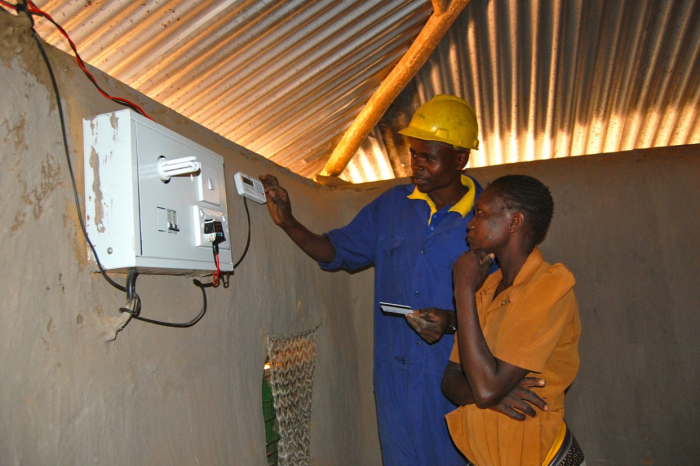
The team, assisted by data and support from the Kenyan utility as well as REA, was able to trace out the demand and economics cost curve to more thoroughly interpret the data.
Wolfram and Miguel found several interacting negative factors in their research results. First, they postulated rural households were too poor to do much with electrical power once connected. Unlike the 1936 Rural Electrification Act, which provided federal loans for the installation of electrical distribution systems in rural areas of the United States—along with subsidies for productivity-increasing electrical appliances—Kenya’s electrification efforts have not fully been funded by its government or aid organizations. Households still face an upfront cost for rural residential connections, and there are no government subsidies for appliance purchases. In addition, rural Americans in the 1930s were several times wealthier than contemporary Kenyans; in other words, Americans were in a greater position to take advantage of the socioeconomic benefits of electrification, because they were rich enough to make complementary investments in appliances.
Said Miguel: “The cost of connecting, even when heavily subsidized, is still a significant burden for many of these households that have average annual cash earnings of $205 and three quarters of which practice subsistence agriculture.”
Miguel went on to explain that few of the Kenyan households were interested in or able to buying commercially valuable electrical appliances, like welding equipment, that would lead to greater economic benefit.”
Indeed, Miguel and Wolfram’s data found that the connected households used the equivalent of only $2/month on electricity, mainly for basic lighting and to charge a mobile phone. In addition, the researchers found other barriers to rural electrification: credit constraints, bureaucratic red tape, low grid reliability (frequent blackouts), and evidence of corruption such as over-invoicing for service.
“In the first year of our study, 19 percent of village transformers failed with a median repair time of four months. Thus, even if households could afford to pay for electricity, it was not reliable,” said Wolfram.
Wolfram added that unreliable grid quality can significantly inhibit economic growth for entrepreneurs and small businesses.
“Power isn’t like water,” concluded Miguel. “It isn’t like turning on the tap and getting something that improves your livelihood. Power requires you to connect to an appliance. But if you are too poor to buy something to connect to power, the hypothesized effects are not there.”
Wolfram and Miguel believe their research opens the door to at least two main lines of inquiry: 1) the extent to which electricity connection costs are too high and require further subsidization; and 2) the extent to which demand is being suppressed by poor service quality. There is also the larger question of whether, as Miguel put it, “We are too focused on power as a solution for development outcomes.”
“The research to date has been intellectually fascinating but disheartening; we are not maximizing positive development outcomes,” said Wolfram. “The billion people without power are also the world’s poorest billion. These are people who are struggling to meet their daily basic needs. Perhaps, to really benefit from electricity, we need diversified investments across multiple sectors.”
—Lisa Bauer
Configurable Microfactories: Autodesk’s San Francisco Technology Center
There are only a handful of Autodesk Technology Centers around the world—in the United Kingdom (Birmingham), Canada (Toronto), and the United States (Boston and San Francisco). Each location explores different aspects of the future of making, from construction to advanced manufacturing to artificial intelligence and generative design. And all of the spaces are designed to foster innovation and advance Autodesk’s vision is to help people imagine, design, and make a better world.
Autodesk’s San Francisco location, at Pier 9, serves as a hub for the exploration of the future of manufacturing. Its focus is “configurable microfactories,” also known as iterative manufacturing, and offers a range of advanced manufacturing equipment, robotics, general shop facilities, and workspace to research and develop ideas that push the boundaries of the built environment.
On April 25, the Autodesk Foundation invited Blum Center-affiliated graduate students to meet with Autodesk experts on the future of sustainable design. Fifteen Development Engineering students, InFEWS Fellows, and Big Ideas Hardware for Good participants explored ways to apply their technical skills to the future of manufacturing.
Zoé Bezpalko, who heads Autodesk’s sustainability strategy for the design and manufacturing industries, presented several tools, including CNC machines, 3D printers, woodworking tools, and laser cutters. Autodesk develops the software that runs on these tools and is developing and promoting software solutions and workflows that work either in the design phase, or with these hardware tools, in the manufacturing phase, to reduce material and energy consumption. The result is a reduction in the environmental impact of product design and manufacturing industries.
Bezpalko presented a display of 3D printed objects, including a replica of Van Gogh’s Starry Night and facial sculptures made from paper. A few highly intricate coral replicas caught the attention of several students. Bezpalko explained the coral model was an output from Autodesk Foundation grantee The Hydrous, a startup that uses reality capture and photogrammetry to create high resolution 3D models of coral reefs as part of a multi-pronged conservation effort. Given the severe impacts of climate change on marine ecosystem health, the 3D printed coral reefs help The Hydrous raise awareness and provide ways to collect data, analyze, and monitor coral reefs without the risk of exposing them to further damage.
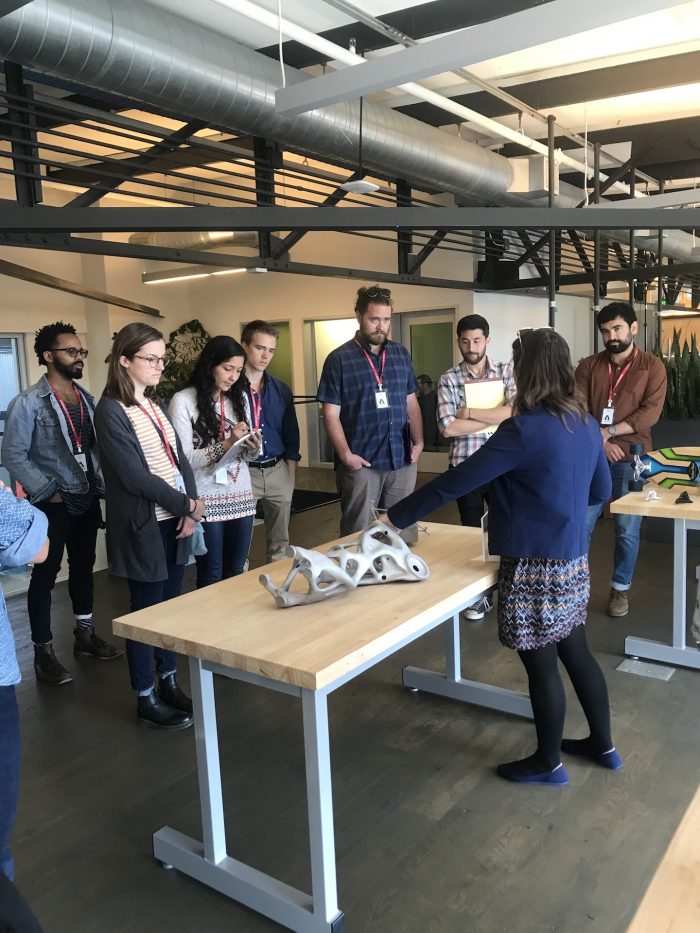
The Blum Center group also visited the robotics lab where two large robotic arms were building a tower from Legos. The group discussed the future of robotics and the many challenges in teaching a robot to complete simple human tasks. Bezpalko showed the group a photo of a 3D printed bridge in Amsterdam, called MX3D, which will soon be installed at one of the city’s oldest and most famous canals. The 3D printed MX3D bridge is a fully functional stainless steel bridge, completed in just six months through robotic additive manufacturing technology.
Over lunch, the group was joined by two senior staff members from Autodesk. The first was Michael Floyd, Autodesk’s AEC Sustainability Strategy Manager, who incubates and promotes novel and existing solutions, largely for high performance buildings, zero-waste construction, and smart, resilient cities. Floyd explained that to decrease the environmental impacts of construction, Autodesk is supporting integration of BIM 360, Autodesk’s building design & construction platform, with EC3, an embodied carbon calculator for buildings. EC3 provides data about the “cradle-to-gate” embodied carbon of locally available building materials, providing data on greenhouse gas emissions associated with raw material extraction, logistics, and manufacturing of specific in-market materials. Green building practices, now widely adopted across the United States and European Union, are still nascent in many developing countries. Floyd hopes that by helping building professionals make informed decisions to minimize the embodied carbon of their projects, Autodesk can catalyze green building practices in the global North, and in developing countries alike.
Morgan Fabian, who leads machine learning research and development for Fusion 360 at Autodesk, talked to the Blum Center group about generative design and how it relates to sustainability. The recent Cal Industrial Engineering graduate explained how the fusion of machine intelligence and creative work can maximize innovative design and function. For example, Autodesk’s Fusion 360 software has generative design capabilities allowing designers to explores alternative design permutations. By providing designers and engineers with a wider array of options, they can select a final design that reduces environmental impact by filtering for specific constraints including materials, cost, and manufacturing methods.
To demonstrate the impact of generative design, Fabian used the example of WHILL, a client that designs and manufactures electric wheelchairs. According to WHILL’s market research, users wanted lighter wheelchairs that are both more affordable and portable. To meet these standards, WHILL used Fusion 360’s generative design capabilities to output dozens of alternative designs that would meet these demands while maintaining the device’s mechanical integrity. The result exceeded expectations; WHILL was able to lighten the frame by more than 30 percent, making it easier to lift and load the wheelchair into the trunk of a car.
George Moore, a UC Berkeley PhD student in Mechanical and Development Engineering, said that the highlight of the Pier 9 visit was learning about Autodesk software to support collaboration and joint decision-making for sustainable design solutions.
Dr. Yael Perez, a researcher at the Blum Center, noted that there are many students like Moore who collaborate with communities, such as the Pinoleville Pomo Nation in northern California, to develop sustainable designs for housing, energy, and education.
“By making software available to students for free, as well as providing other types of supports, Autodesk is bringing local and professional knowledge to the design table for collaborative innovations,” she said.
—Lisa Bauer
The Role of Data Science and Machine Learning to Combat Human Trafficking
The International Labour Organization estimates that there are 40.3 million victims of human trafficking globally. With the rapid adoption of social media platforms, human traffickers have the potential to target more vulnerable children. Yet artificial intelligence and machine learning also have the potential to thwart more predators and protect potential victims.
On April 26, the Anti-Trafficking Coalition at Berkeley, a Blum Center IdeaLab, gathered researchers and advocates from academia, industry, and the nonprofit sector to discuss how AI can help prevent child exploitation and combat human trafficking. The panelists included: Bob Rogers, expert in residence for AI at the UCSF Center for Digital Health Innovation; Lisa Thee, vice president of Bark.us, a child monitoring app; and Roger Martin, former Chief IP Strategist of Qualcomm and co-founder and CEO of the charity platform Enduragive.
Martin explained that preventing initial online communications between vulnerable children and suspected traffickers is a significant intervention. “Since 2015, the number one recruiting tactic into the sex trade happens online,” he said. “But there was a huge gap in using technology in prevention.” Predators were deciding whom to approach by looking at public profiles online and gauging vulnerability. If these vulnerabilities were modeled, Martin said, machine learning could be coded to detect which children were most likely to be approached.
Once a child goes missing, time is of the essence. In 2016, the National Center for Missing and Exploited Children employed 25 analysts receiving and disbursing about 8 million reports to law enforcement. Cases determined as “urgent” were automatically dispersed to a government agency, while others went to a 30 day backlog. Machine learning was introduced as a key part of the pipeline in 2017, automating the IP addresses and cell phone information of victims and predators. Since then, case backlog is down to 24 hours, and the time saved has allowed analysts to focus more deeply on specific cases.
When creating data sets to be fed to algorithms to prevent human trafficking, concerns about diversity and inclusion are life and death issues. As Thee of Bark.us explained, “Traditional facial recognition tools are good at identifying those who are white, adult, and male—which is almost the opposite of human trafficking victims. Pairing the grainy pictures of missing children with actual faces was our initial challenge.”
Finding technology companies to partner with the panelists’ initiatives presented significant challenges. “Storytelling has significant power,” Rogers said. “Press about how Intel can use its AI technology to save lives is powerful. But you have to be comfortable with rejection. Funding is always going to be a issue here—You have to be ready for a marathon and not a sprint.”
The panelists underscored that AI and machine learning are proving to be extremely helpful tools for this important human rights work. They also noted that the potential for student involvement is great, as this generation of university students are increasingly fluent in computer science, which can be put toward protecting vulnerable children around the world.
“Young people growing up online are in the midst of one of the largest social experiments in history,” said Thee. “This is labor intensive work, but in many ways you can work to save yourselves and your peers.”
—Veena Narashiman ’2020
In this College Class, the Assignment Is to Solve a Local Problem
How do you convince people to drive less? When a team of University of California-Berkeley students considered the problem in the city of Berkeley–where traffic is increasing despite the city’s reputation as a bastion of progressive politics–they focused on how to improve the experience of riding the bus.
Here’s What Happens When UC Berkeley Students Try to ‘Hack’ the Housing Crisis
After a semester studying housing, transit and other issues plaguing the Bay Area, a group of UC Berkeley students has some unexpected solutions. Free buses, anyone? How about a podcast on homelessness?
April 2019
Big Ideas Grand Prize Pitch Day Showcases Inventions of Top Student Teams
In 2006, the Big Ideas Contestlaunched at UC Berkeley to catalyze and support an interdisciplinary and diverse network of student entrepreneurs to develop game-changing innovations. No longer would entrepreneurship be ensconced within just engineering and business schools and accessible to only a few. The time had come to “open-source” entrepreneurship to include the range of perspectives and interdisciplinary expertise necessary to develop well-rounded solutions to the world’s greatest challenges.
From Bean to Cup: Anti-Trafficking IdeaLab Develops App for Ethically Sourced Coffee
By Chloe Gregori
Whether students are cramming for late night exams, needing a spike of energy during a 9 am lecture, or studying at a local Berkeley cafe—coffee embodies the college experience. In fact, 54 percent of Americans over the age of 18 drink coffee every day. Coffee is worth over $100 billion worldwide, placing it ahead of other global commodities like gold, natural gas, and oil.
However, this massive and lucrative industry is not without social cost. The complex supply chain—from coffee bean to cup—tends to funnel money to corporations in wealthy countries from farmers in poorer countries, where the beans are arduously picked by hand. In 2016, two of the world’s biggest coffee companies, Nestlé and Dunkin’ Donuts, admitted that beans from Brazilian plantations using slave labour may have tainted its coffee products. Overall, coffee is one of the most notorious industries for human rights abuses. Workers are vulnerable to low wages, exploitative work conditions and, at worst, forced labor and human trafficking.
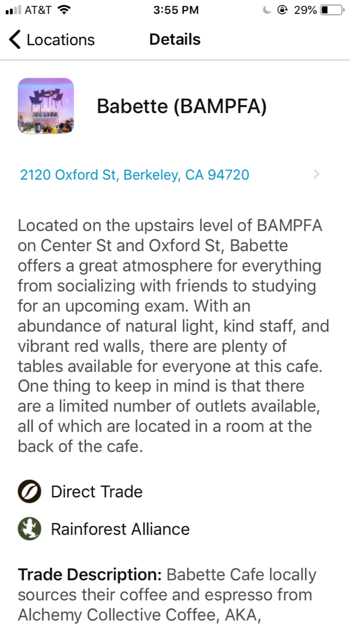

The Berkeley Coffee Project, an initiative under the Anti-Trafficking Coalition, which is a Blum Center-sponsored IdeaLab, is aiming to empower students to become more conscious consumers and educate them about labor practices connected to their everyday purchases. As the Berkeley Coffee Project Planning Chair Sophia Arce states, “To minimize human rights violations within this industry, it is up to us, the consumers, to demand products that hail from a fair, transparent supply chain.”
Arce, a senior Global Studies major, led a team of over 30 students from diverse disciplines to develop “Conscious Coffee”—an app that allows students to easily find ethically sourced coffee near the UC Berkeley campus. The app includes a list of 30 partner cafes sorted by distance from user’s location, sourcing certifications (along with explanations of their meaning), and links to each cafe.
To launch the app, the team hosted Coffee Festival in early April, an event for students to learn more about local companies that use ethical sourcing and get their fair share of free coffee products. The festival featured campus vendors, such as CalDining (which sells Fair Trade coffee via its partnership with Peets) and Equator and local businesses like COBA, Sweet Maria’s, FORTO, and Rebbl. Students also learned from Berkeley Coffee Project representatives about the difference between fair trade, direct trade, USDA Organic, and a range of sustainability labels.
“Understanding the labels is a basic step, but there are so many ways for products to be ethically sourced,” Arce explained. “It’s important not to accept labels at face value and do your research.”
The Berkeley Coffee Project plans to recruit more cafes to be listed in the app and create a purchasing rewards feature.
“There is a perception that products with labels like Organic or Fair Trade are too expensive for the general population to afford, let alone college students scrambling to afford Bay Area housing costs and overpriced textbooks,” said Arce. “If the goal of ethically sourced products is to empower economically marginalized populations, shouldn’t they be accessible to consumers who also struggle financially?”
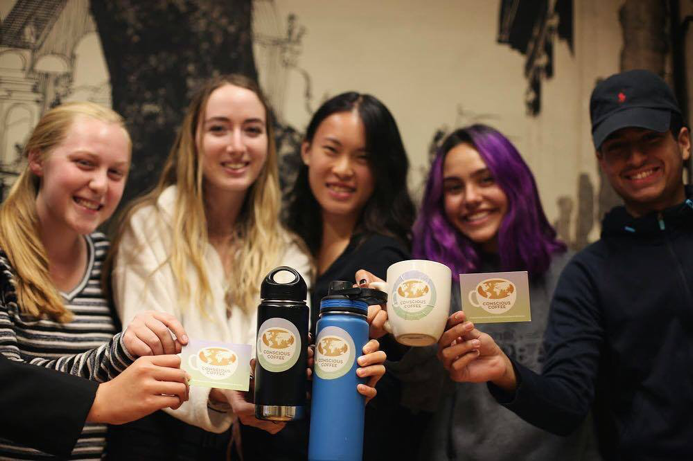
Arce said this irony inspired her to add a rewards system for future app development.
“Not only do I want to provide Cal students with the information they need to make conscientious consumption choices, I want to give them the financial resources to make these choices viable.”
Want to learn more about ethically sourced coffee near campus? Download the Conscious Coffee for Android here or on the Apple App Store.
A Course for Addressing Wicked Problems in the Bay Area
When fourth year media studies student Erik Phillip came across a flyer for the Blum Center’s Development Engineering course Hacking4Local, he was interested but wary.
“I thought I’d be the only undergraduate and the only non-engineer,” he said. “That was a terrifying combination.”
But Phillip, who was born and raised in Oakland and is proud member of its African American community, decided to go to the course’s information session anyway because of the changing economics and demographics of his hometown. He quickly learned two things: first, that the instructors of Hacking4Local sought students from multiple disciplines; and second, the course’s aim was to teach students how to design solutions for Oakland on complex topics such as homelessness, low-cost housing, and high-quality education.
Phillip had no delusion that he would walk away from the course in May with a solution to the affordable housing crisis, which was the subject he chose to focus on with a team of five students. Rather, he said, his expectation was and remains “to learn how the affordable housing crisis came about and how the systems around it works.”
Mostly, he said, he has been amazed how much he has learned due to course’s unusual approach, which combines pedagogies in interdisciplinary project-based learning, human-centered design, the flipped classroom, and student team learning as well as input from a half dozen professors and instructors, including Public Policy Professor Dan Lindheim, former City Administer of Oakland, and guest lecturers such as Steve Blank, whose Lean Launchpad and Lean Startup methodologies have been embraced by Silicon Valley startups and the National Science Foundation Innovation Corps.
Hacking4Local is a hacking course only in name. Its first priority is framing a problem to be solved. While some of the student teams exploring local transportation emissions, equitable health access, and Oakland hills fire mitigation are using algorithms and data analysis in their inquiries—the primary method of the course is gathering information through research and interviews (at least five per week), synthesizing that information into eight-minute presentations (during which the instructors serve as a council of critics), and iterating and refining ideas.
Students get the real-world experience of working on problems identified by local government agencies, nonprofits, or companies. And at the end of the course, they must deliver their solutions, which can vary—a physical product with a bill of materials cost and a prototype, a web product with users, a mobile product with working code and users, or a service or policy solution with an implementation plan and anticipated cost of delivery.
The instructors—Development Engineering Lecturer Rachel Dzombak, Mechanical Engineering Professor Alice Agogino, Public Policy Professor Dan Lindheim, and Haas School of Business Entrepreneurship Lecturer Steve Weinstein—have assembled a reading list that familiarizes students with how to work on complex social issues, consider their historical and political contexts, and engage with communities affected by a variety of overlapping problems. The class introduces students to methodologies such as the “mission model canvas,” “customer discovery,” and “agile engineering,” and exposes them to guest speakers who have experience in Oakland communities and politics.
“The course is about design for the public good and helping students hone their skills on both qualitative and quantitative methods for understanding stakeholder needs and getting community feedback on possible solutions,” said Agogino, who serves as chair of the Graduate Group in Development Engineering and the Blum Center’s education director. “Students learn to value the complexities of government, the people it serves, and other stakeholders. They learn that as with any organization, there is a difference between formal power and informal power.”
Added Dzombak: “The class challenges students to think through the root cause of problems, the systems in which problems exist, and to understand potential consequences of interventions. Students are learning to navigate ambiguity using a human-centered process and gaining critical knowledge about politics and governance, which is rare for an engineering course.”
During one four-hour class in March, Phillip and his affordable housing teammates—Surabhi Yadav, a master’s student in Development Practice, Ben Truong, an undergraduate cognitive science student, and Andre Balthazard, an undergraduate operations research and management sciences student—presented their findings on why affordable housing in Oakland has been inadequate and what they might devise for their client, the Strategic Urban Development Alliance (SUDA). The team, which has conducted over 60 interviews with Oakland residents and community stakeholders, argued that one of the key problems in Oakland real estate is the lack of involvement from residents on issues of equitable development.
To this point, Steve Blank quipped: “The joke about community meetings about real estate development is they’re filled with retired people and stakeholders.”
The team members nodded. Phillip pointed out that since 2010, the Bay Area has added 722,000 jobs but only 106,000 housing units.
Blank pressed the group: “Yes, but there are multiple housing crises. Which one are you solving for?”
In an interview after the class, Surabhi Yadav said her team is aiming to solve for longtime residents who feel they are at risk of eviction or their children will be unable to live nearby. Yadav noted that although many longtime residents do not have individual financial or political power, they could have collective power.
“Unionizing power is time consuming to create,” noted Yadav. “Still, we’re questioning whether we can develop tools that will help Oakland residents harness their collective power. And we’re trying to figure out if we can help SUDA measure and develop what effective community development looks like.”
Yadav, who co-designed and co-taught a similar course for engineering students at the Indian Institute of Technology Delhi, said classes that involve multiple disciplines and hands-on learning are good at developing students’ professional skills in communication, teamwork, managing priorities, and navigating ambiguities.
“You have to learn how to take feedback in these kinds of courses and go with the flow,” explained Yadav. “It’s about structuring uncertainty, because the logistics and pedagogy and learning outcomes of the class are very different.”
Barbara Waugh, an executive in residence at Haas, Oakland resident, and guest lecturer for Hacking4Local, sees another strength of the course: higher team performance.
“Diverse teams under- or outperform homogeneous teams depending on whether they ignore or leverage their diversity,” she said. “Shared passion for a project can be a great lever and our Hacking4Local teams demonstrate both the passion and the higher performance that leveraging diversity offers.”
—Tamara Straus
Learning from Failure: NextDrop’s Water Information Pilot in Bangalore
Access to clean, reliable drinking water remains one of the biggest challenges in developing countries, and public water services in India are no exception. There, over 150 million people are served by intermittent piped water systems. In many Indian cities, water is available roughly four hours per day; while several cities report that water may flow through pipes to homes and businesses only once every five to ten days.
At the March Blum Center Faculty Salon, Professors Isha Ray of the Energy and Resources Group and Alison Post of the Political Science Department shared their analysis of the effects of the Development Impact Lab-supported social enterprise NextDrop, which designed a mobile phone intervention to alert Indian households via text when to expect water supply.
NextDrop was designed not so much to solve India’s water provision problems but to give Indian citizens back their lost time. Co-founders Thejo Kote, Emily Kumpel, Ari Olmos, Anu Sridharan, and Anish Jhinail piloted the project in 2010 in Hubli-Dharwad, a city of 1.1 million people in the state of Karnataka, where water can take up to eight days to arrive via pipe and faucet. They estimated that individual households lost seven days a year waiting for water and regularly needed to rely on unsafe sources.
With support from Big Ideas and the USAID-supported Development Impact Lab, the NextDrop team moved forward with piloting their service. In its first implementation phase, the team sourced real-time information about the distribution of water from valvemen, the individuals charged with turning water valves on and off in neighborhoods. NextDrop provided these valvemen with in-kind rewards for sending SMS notifications. In turn, NextDrop notified residents in the neighborhood, also via text, that their water would arrive within roughly 30 minutes. After piloting in Hubli-Dharwad, NextDrop began operations in Bangalore and Mysore.
That is where Professors Alison Post, co-director of the Global Metropolitan Studies Program, and Isha Ray, co-director of the Berkeley Water Center, became involved. Post and Ray worked with NextDrop in Bangalore so that the efficacy of its solution could be evaluated through a randomized control trial (RCT).
Post explained that the research design for the NextDrop RCT involved selecting a mixed-income study site that was representative of Bangalore’s demographics. The aim of the RCT was to capture the extent to which 3,000 households in the study area benefited from NextDrop’s system.
“We had several reasons to anticipate positive impacts on household welfare, particularly for household members charged with managing water supply,” said Post. “We hypothesized that improved predictability of water would decrease water wait times, and free up time for other tasks, earnings, community and family events. Additionally, we predicted that the intervention would have a positive psychological impact by decreasing stress related to water scarcity. We also expected receipt of NextDrop notifications to increase the frequency with which citizens contacted the utility directly with service problems, rather than going to informal intermediaries. These impacts were expected to be most notable among low-income households.”
However, the results of the RCT revealed a very different story. The study—two years in planning and execution—showed NextDrop’s SMS services had a null-to-modest impact on household welfare.
“The most evident program impact was a modest reduction in stress levels related to managing household water supply among low-income households,” said Post. “Other than that, there was very little impact.”
Ray and Post then set out to understand why the results were not as positive as expected. A major reason was that the Bangalore valvemen upon which NextDrop’s system depended were not reporting accurate water valve opening and closing times. During the Hubli-Dharwad pilot, NextDrop used in-kind and recognition-based incentives to encourage valvemen to send water release notifications. And since the community was more close knit in Hubli-Dharwad and the city much smaller (by more than 9 million people), NextDrop was able to develop one-on-one relationships with individual valvemen.
However, when NextDrop launched its system in Bangalore, the enterprise dropped its incentive program and asked the city’s water utility to require valvemen to send reports to NextDrop. This new hierarchical reporting system was arguably more sustainable at a larger scale, but proved to be less effective for keeping the valvemen on board. Analyzing their survey data and NextDrop’s internal data with Political Science Ph.D. student Tanu Kumar, Post and Ray found that valvemen reported only 70 percent of the time and 63 percent of the reports were inaccurate.
A parallel ethnographic study with graduate student Christopher Hyun shed light on how Bangalore’s valvemen operated and how they interacted with NextDrop’s information system. Hyun, a development engineering student pursuing a PhD from the Energy and Resources Group, discovered that valvemen in Bangalore generally had limited time to report when they turned on the water. The valvemen were constantly putting out fires—fixing broken pipes and rushing around the city trying to get water to residents with minimal resources and backup. Notifications, if sent at all, were often sent during tea breaks or during other downtime.
Analysis of survey data collected for the RCT revealed an additional reason the NextDrop system was not generating benefits in Bangalore: many women waiting for water at home didn’t own their own cell phones. The devices were often with their husbands at work or with their children at school or doing errands. NextDrop failed to understand a key aspect of its information value chain: the intended beneficiaries of their information didn’t have the means to receive it.
Kumar, Post, and Ray created a causal framework—an “information pipeline” with six nodes to mark where informational interventions can stop working.
“The framework is especially useful for helping practitioners consider all the necessary steps when scaling or replicating a development intervention in a new setting,” said Post. “It points out realistic challenges in a human information chain and shows the many ways in which informational interventions can break down.”
To further understand the RCT results, Ray and Post conducted a literature review, comparing their results across the broader landscape of the development intervention literature, specifically looking at the roles of last-mile human intermediaries. They found a surprising lack of discussion on the topic.
“Prominent studies in development literature seem to omit these key players,” said Ray. “There is little emphasis on the frontline actors and on what motivates them. It is absolutely essential to understand the role of human intermediaries and how drastically the conditions and results of an intervention can change from one setting to the next. Clearly, our RCT results demonstrate a need to place greater emphasis on considering the human element: these critical factors are usually not discussed unless the study failed, but should be taken seriously in all evaluation models of development work.”
—Lisa Bauer
A New Era in Global Development Training
Shankar Sastry
Higher education is having a disruption moment. Not so much in the sense that universities will no longer be physical places where professors instruct students—as has been the case since 859 when Fatima al-Fihri founded the University of Al-Qarawiyyan, which became the world’s first higher education institution to award degrees in mathematics, grammar, and medicine. No, higher education is in a period of intense transformation due to the increasing pace of new advances in STEM (Science, Technology, Engineering, and Mathematics)—and the way the fields mutually reinforce each other to transform and advance society.
Why are we at a STEM moment? To put it simply, these four fields have done more to generate economic growth, advance scientific innovation, and create jobs than many others. Mind you, I do not think STEM inventions have been free of negative consequences. However, many of the beneficial technological advances of the decade plus—mobile phones, GPS, the Cloud, CRISPR, generative adversarial networks, machine learning, AI-based predictive analytics, electric vehicles, chatbots, and mass production of solar arrays—have originated in STEM fields.
Yet with each passing year it becomes obvious that the STEM fields need far tighter integration with the social sciences, arts, and humanities, especially for graduates focused on local and global challenges and seeking to advance socioeconomic mobility, jobs and sustainable manufacturing, and access to clean water and affordable health care. As Kofi Annan so eloquently said, “Education is a human right with immense power to transform. On its foundation rest the cornerstones of freedom, democracy, and sustainable human development.”
With this in mind, we at the Blum Center have been looking at the changing profession of global development. In speaking with former students and current employers, we have noted a distinct rise in the need for societal benefit professionals with advanced technology skills. But the story is more complex than that. Development professionals—whether at UN departments, municipal government agencies, multinational companies, foundations, or nonprofits—report the need for a combination of skills, such as the design and management of technology, knowledge of emerging technologies, evidence-based assessment techniques, economic development, social problem solving, and cross-cultural collaboration and community engagement.
The recent report “Next Generation Professional” published by USAID and Devex, for example, states: “Development professionals a decade from now will not look the same. One reason is technology. It’s easy to envision a time when drones streamline every agricultural development program, when every health worker is equipped with high-tech mobile diagnostics, and when artificial intelligence provides real-time data to guide humanitarian assistance and disaster relief. The shifting development finance outlook is another factor. Program managers, resource mobilizers, and partnership professionals might continue to seek grants from bilateral aid agencies, but they may also partner with private sector corporations, attract impact investment funds, or manage crowdfunding campaigns targeting specific causes. Tying all these together are the softer skills—like communicating across cultures and working in teams—that make the industry truly unique.”
I mention all this because the Blum Center has begun thinking about how to build upon its courses for the Global Poverty & Practice minor and the Development Engineering designated emphasis, to provide these in-demand professional skills in a time effective manner. We have seen many STEM students and professionals who are looking for careers with impact, but have few avenues to get the right tools for framing and solving societal scale problems. And we have seen many non-STEM students and professionals who need the technical skills the future development sector demands. These constituencies want us to offer a professional education with a focus on problem solving skills for complex societal problems at the nexus of new technologies, new business models, and changing communities and their needs.
What do you think of this? What are we missing? Come talk to us about this new era of global development training.
Shankar Sastry is Faculty Director of the Blum Center for Developing Economies and NEC Distinguished Professor of Electrical Engineering and Computer Sciences at UC Berkeley.
SACEPI Poverty Action Day Focused on Student Food Insecurity
Veena Narashiman ‘2020
According to a December 2017 report of the University of California Global Food Initiative, 44 percent of UC undergraduates experience some type of food insecurity, meaning they lack consistent access to nutritious food while they are students. And 5 percent of UC undergraduates experience homelessness, a figure that doubles when narrowed to UC Berkeley because of the Bay Area city’s high cost of living.
These problems don’t exist in a vacuum, an issue that representatives from the Student Action Committee for the Eradication of Poverty and Inequality (SACEPI) acknowledged in a March 14 event hosted by the UC Berkeley and UC Merced Blum Centers at Blum Hall. The discussion of about 70 students, faculty, and staff was moderated by Sara Tsai, program coordinator of the Basic Needs Community Program, and featured Kiyoko Thomas, case manager of the Berkeley Basic Needs Center, and Joyce Lee, a Campus Food Equity and Inclusion Policy Fellow of the Berkeley Food Institute.
Tsai, a third year student majoring in business administration, explained the Basic Needs Center was founded in February 2019 to fill a gap on campus. The center defines a basic need as food, housing, and wellness security, which collectively affect the mental, emotional, and physical health of students. The intersection of these needs, said Tsai, provide the backbone for the success and overall well being of any student or Berkeley resident.
Thomas agreed with this description, adding, “Holistic wellness is the connection of your mind, body, and spirit. All parts of our being are important—and it’s time to recognize that.”
Thomas, who is earning a Master of Social Work, said she joined the Basic Needs team last September, because she felt the the student service experience is fragmented.
“Students are expected to go to the Office of Financial Aid for one issue, Cal Housing for another, Counseling and Psychological Services for mental wellness—the efforts aren’t necessarily coordinated.”
Thomas pointed out that some Cal staff are also food insecure and are welcome to use the Food Pantry, which is located in the basement of the Martin Luther King Jr. Building. The pantry is open 10AM – 7PM on weekdays and 10AM- 2PM on weekends.
“Many workers are currently making minimum wage, but the cost of living is rising a lot,” she said. “Those who serve students also need to be served.”
The panel also discussed how academic pressure and Berkeley’s competitive environment can affect under-resourced students and staff. Thomas argued we need to “denormalize the idea that lack of sleep or working through the night is always good and helpful.” She advocated students check in with their friends and not abet their bad health habits. ”Make the norm about health, not about finishing assignments,” she said.
Lee added: “Ultimately, what’s in your environment should be good for you. If things become too much, seek help.”
Tsai advocated that students join the Food Pantry. She said it currently has 65 volunteers and needs more, as the program is the only student-run food source open seven days a week.
“We have Pop Up Pantries every Wednesday and Thursday at Moffitt and Wurster,” she said. “Come join us!”
Joshua Blumenstock: The Knowns and Unknowns of Big Data and Poverty Alleviation
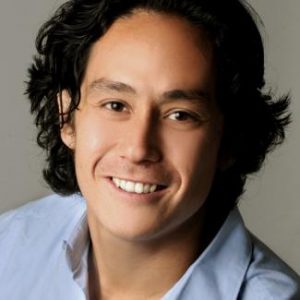
In international development circles, the application of machine learning to monitor and alleviate poverty has become a much discussed aspiration. However, Joshua Blumenstock, assistant professor at the UC Berkeley School of Information and director of the Data-Intensive Development Lab, cautioned at a recent Blum Center Faculty Salon that unknowns abound and new digital methods may serve more as a complement than a replacement to traditional approaches, especially in the area of economic assessment.
At the salon, Blumenstock highlighted two ways big data is altering the field of international development: first, in measuring quality of life and welfare in low-income countries; and second, in offering financial inclusion applications for poor populations. His colleague Moritz Hardt, assistant professor of electrical engineering and computer science, provided a lead response, drawing from his decade of research on fairness and machine learning. Together, they highlighted that over the past five years big data sets—from mobile phone companies, satellite imagery, social media platforms, and international development organizations—paired with advances in machine learning technology, have generated fascinating and controversial work.
“Over less than a decade we have experienced a global explosion of data, bringing us to this fairly nascent intersection of big data and poverty alleviation efforts,” said Blumenstock. “With the mass availability of large-scale data sets, we now have access to new sources of data on previously remote, low-resource settings.”
A key contributor to these new data sets is the stunning rise in cell phone adoption. According to the World Bank, more households in developing countries own a mobile phone than have access to electricity or clean water, and nearly 70 percent of the bottom fifth of the population in developing countries owns a mobile phone (note: not a smartphone). An increase in satellite and remote sensing data has also contributed to the data explosion. The combination of these data sources, with machine learning, means that data can be synthesized and applied in new ways.
Blumenstock said that satellite imagery in particular is becoming a key source for development research because it reveals basic physical infrastructure and quality of life trends, such as roof material, road quality, and land plot size. This information can help researchers estimate the basic traits of a town, including average household wealth and population density. Blumenstock is currently conducting research with Facebook to provide a publicly available map of micro-regional estimates of wealth and poverty.
“Leveraging machine learning to analyze these forms of data, we can draw conclusions about certain aspects of quality of life with nearly the same accuracy as traditional, multi-million dollar field surveys,” Blumenstock explained.
Given the time and cost savings, international multilateral organizations like the World Bank and United Nations are eager to start applying these big data applications. Likewise, many governments in developing countries are eager to bypass traditional data collection methods in favor of machine learning-assisted data analysis because of the large time and monetary costs of national census surveys.
Blumenstock is hopeful that by supplementing traditional poverty indices with high-frequency estimates based on satellite and digital data, development practitioners can have low-cost options for impact evaluations and project monitoring. He said this data-plus-machine-learning approach could help open up major innovations in three areas: 1) targeting specific populations for program implementation; 2) monitoring and mitigating the effects of natural disasters, health epidemics, and migration patterns by allowing, for example, aid workers to deliver needed resources to hard-hit areas; and 3) enabling different approaches to impact evaluation, specifically randomized control trials, which can costs millions of dollars.
Financial inclusion was the other area Blumenstock highlighted as potentially benefiting from algorithm-based decision making. He pointed out that globally 1.7 billion people lack a bank account, half of whom are women in poor, remote regions—yet about two-thirds of this population have access to a mobile phone. Companies like M-Pesa, launched in 2007 in Kenya, are engaged in wide-scale mobile phone-based money transfering, financing, and micro-financing services. As a result, there has been a surge in “digital credit” banking led by the private sector in low-income countries, which is increasing financial inclusion for populations without formal credit.
Using data to analyze phone use patterns, some banks and intermediary financial technology (fintech) companies are testing ways to develop alternative digital credit scores to provide uncollateralized loans to the unbanked. By aggregating digital trace data that includes Internet searches, emails composition, even browser and smartphone choices, and then using machine learning to assess the data, banks can formulate digital credit scores that predict who is most likely to default on a loan. One of the largest entitles to use this approach is a Kenyan digital savings and loan product called M-Shwari, which is built on M-PESA and run by the Commercial Bank of Africa and the mobile network operator Safaricom. Using M-Shwari, customers who lack a bank and credit history can take out loans. Beyond increasing accessibility to loans, digital credit also has the potential to dramatically reduce transaction costs and provide immediate disbursement.
Providing loans to previously unbanked populations can stimulate critical economic growth. Yet Blumenstock was quick to point out that the concept of digital credit scoring and it’s rapid growth across developing economies raises several concerns. First, most of these loans are short-term with very high interest rates, which can indebt customers. Second, leaning too heavily on algorithms to churn out credit scores can create a variety of biases.
Blumenstock recently visited Kenya to gain greater insight into the mobile banking process, where digital loans have quickly risen in popularity. According to a 2018 study led by FSD-Kenya, more than one in four Kenyans have taken out a digital loan over the past five years, comprising an estimated 6 million Kenyan borrowers. At the time of the study, more than half of these digital borrowers had at least one outstanding loan, and 14 percent had digital loans from multiple banks. Among the long-term implications to digital credit-based loans are credit bubbles, over-indebtedness, and the overall impact on social welfare.
“There’s a lot of allure to using AI to leapfrog traditional methods, from digital currency to data collection,” said Blumenstock. “But it creates a silver bullet fallacy problem. We’re still grossly unaware of its impacts and what exacerbating issues it could lead to.”
Lead discussant Moritz Hardt spoke on the limitations of machine learning, particularly in relation to gender and race biases, and their corresponding consequences to everything from credit scores to healthcare predictions to providing child services to decisions in the criminal justice system.
“It’s not easy to define discrimination in algorithmic decision-making processes,” said Hardt. “We are at a sobering stage right now; people are becoming aware of the limitations and questioning possible structural issues.”
Hardt provided an example of how risk assessment algorithms are used as a predictive tool to determine which individuals are at high risk for missing their court date following an arrest. If deemed as pretrial “high risk” by the algorithm, an arrested individual is held in jail until their court date, with often dire consequences for their income and family circumstances. Such predictive algorithms are similarly used to inform criminal justice officials decisions on how high to set the bail, sentencing, and who gets early release.
“What is often neglected in designing algorithms are the structural and complex socio-cultural challenges unique to each person,” Hardt said.
Blumenstock responded that “we need to endogenize social sciences into machine learning,” warning that taking off-the-shelf algorithms for ad targeting and plopping them into poverty targeting would have obvious negative results.
“Off-the-shelf tools typically assume that the social processes being modeled are static,” he said. “But these processes are inherently dynamic, changing over time and over subpopulations. The appropriate use of machine learning in such contexts requires a more nuanced understanding of the people who are being targeted, and what assumptions might be reasonable or, more often, totally implausible.”
—Lisa Bauer
Solve the Bay Area Housing Crisis, Fight Climate Change and More, All While Earning College Credit
San Jose Mercury News
The 25 students enrolled in UC Berkeley’s newest class are shooting for more this semester than a good grade. In addition to earning an “A,” they intend to help solve the Bay Area’s housing shortage, prevent wildfires in the East Bay hills and slow climate change.
Kara Nelson on Aspirational Technologies and the Sustainable Development Goals
In 1990, at the age of 20, Kara Nelson found herself in a refugee camp in Zimbabwe, just months before the independence government lifted a 10-year ban on land redistribution. The UC Berkeley biophysics student was taking a gap year to see what life was like as a non-student, and the realities of what she chose to see hit her hard.
“For six months, part of my work was with refugees from the independence war who were living in an informal settlement just outside the capital city of Harare. I became exposed to the fact that they didn’t have access to any type of basic infrastructure we take for granted in the United States, including water and sanitation.”
Nelson, now a professor of civil and environmental engineering at UC Berkeley, didn’t realize then that water and sanitation would become the focus of her career. Yet when she returned to campus, she shifted her coursework toward more applied science and took classes in African American and peace and conflict studies, while looking for opportunities to connect the science she was doing to the issues she cared about. She came to realize that engineering had the set of tools for applied research that could address critical infrastructure challenges in the developing world.
At University of Washington, while earning a M.S.E. in environmental engineering, Nelson looked for classes on the intersection of development and engineering but they didn’t exist. So she created a summer class on water and sanitation in low-income countries with a group of fellow students and a few professors. The experience further confirmed her interests. And she told herself she would pursue a PhD only if she could do dissertation work outside the U.S. Although it took Nelson several years to put together the funding, research, and logistical pieces, the UC Davis PhD managed to spend 20 months in Mexico as part of a research group at the National Autonomous University of Mexico, exploring low-cost, low-energy wastewater treatment systems.
“In Mexico, I developed a contextual understanding of the similar challenges that low-income countries confront and how the problems change based on local drivers and conditions,” said Nelson. “The barriers to solving water and sanitation problems around the world are huge, and they can’t be surmounted with just money.”
Nelson recounted this from her office in Davis Hall, where she has a bird’s eye view of the San Francisco Bay, framed paintings of water scenes, and photos of her two sons. Nelson may be a leading scholar on global water and sanitation research, with more than 90 journal papers to her name and a resume that extends 23 pages, but she does not boast her achievements. She speaks in a measured cadence that indicates a habit for meticulous thinking. Among her recognitions are a Presidential Early Career Award for Scientists and Engineers (2003), a National Science Foundation CAREER Award (2003), an Award of Merit from the Water Environment Foundation’s Disinfection Committee (2011), and a Fulbright Fellowship in Colombia from the US Information Agency (2014).
Close to 30 years in water, sanitation, and hygiene (“WASH”) research have taken the professor from Oregon to India, Kenya, China, Ghana, Panama, back to Mexico, and around the United States. These time and travel commitments have made her wise as well as careful about how to make WASH services affordable and environmentally sustainable. As a new professor, she participated in a project in Mexico teaching rural communities how to build their own water treatment devices with locally available materials. This was in line with the philosophy of “appropriate technology,” an engineering approach popularized by German economist E.F. Schumacher that advocated human-scale, decentralized, and often village-based technologies for poor communities.
“This sounds like a great idea,” explained Nelson, “but who wants to spend every week for a month building a water treatment system for your house when you’ve got other priorities?”
Nelson advocates “aspirational technology,” the idea that development engineers like herself should be designing not for poor people, but for people. “Aspirational technology is what people want for meeting their drinking water or sanitation needs,” she explained. “They want it to be exciting the way a smartphone is exciting—something you are proud to share with your neighbors and in-laws and make you feel you’re creating a better world for your children. One of the shortcomings of the appropriate technology movement is that it was sometimes perceived as designing technologies for poor people, as if they were different than technologies for rich people and that poor people had different aspirations. They don’t.”
Nelson adds that these solutions, even if they are aspirational, must not require implementation and maintenance from individual households. A shortcoming of many appropriate technologies is that they rely on low-income households to, for example, purify their own water or safely remove human waste from their households, when this is not something expected of people in the Global North. Nelson advocates that when engineers design technologies—whether for densely populated neighborhoods in Bangalore or small towns in California’s Central Valley—they must think of a whole package of household services at an affordable cost.
Increasingly, Nelson’s applied research is focused on hybrid solutions to water and sanitation in industrialized and developing countries. That is because in developing country cities, centralized systems will likely never meet universal water and sanitation needs—and in developed countries, the large, centralized, infrastructure-heavy systems are not adaptable enough to be environmentally sustainable.
Through the U.S. National Science Foundation Engineering Research Center ReNUWIt (Reinventing our Nation’s Urban Water Infrastructure), where Nelson leads the engineering research thrust, she is studying approaches to recycle wastewater in buildings to conserve both water and energy. Another project, in Kenya and started with her former graduate student William Tarpeh, involves recovering nutrients from urine for fertilizer. Nelson is also a leading expert on intermittent water supply, a ubiquitous problem in developing countries, in which drinking water pipes deliver water only periodically. And yet another project involves turning wastewater back into drinking water through a series of advanced treatment steps, with applications for Southern California and other water-scarce cities.
Nelson is also focused on using recycled waste water to irrigate food crops—both in the U.S. and in developing countries—because the looming food crisis is tightly connected to the unfolding environmental crisis. She explains that many of our food systems are not sustainable due to the runoff of fertilizer, which is polluting surface water and in some cases ground water. Nelson is convinced that across the globe hybrid water and sanitation solutions can improve livelihoods and reduce environmental pollution.
“In industrialized countries, we have great opportunities to offset more pristine waters by using recycled water to irrigate food,” she said. “In developing countries, about 10 percent of the world’s food is irrigated with wastewater, which allows farmers to increase their productivity, but it’s inadequately treated so it exacerbates public health problems.”
Nelson is the rare full professor under 50 who pursued doctoral work in engineering solutions for low-income communities and has made it a continued focus. As a result, graduate students have been flocking to UC Berkeley to follow in her footsteps. They are among the first cohort of “development engineers”—engineers who pursue interdisciplinary technological interventions in low-resource settings.
Nelson’s development engineering PhD students who have gone on to academic careers include: William Tarpeh, an assistant professor of chemical engineering at Stanford University whose Kenya-based work focuses on extracting nitrogen from urine for producing liquid fertilizer; Emily Kumpel, an assistant professor of civil and environmental engineering at University of Massachusetts, Amherst, whose work focuses on water quality monitoring in Sub-Saharan Africa; and Andrea Silverman, an assistant professor of civil and urban engineering at New York University, who studies low-cost wastewater treatment in sub-Saharan Africa. In the NGO sector, she has mentored: Fermin Reygadas, executive director and co-founder of Fundacion Cantaro Azul, a nonprofit that develops and implements point-of-use ultraviolet water disinfection solutions in Mexico; and Ashley Murray Muspratt, founder of Pivot, a dual sanitation and renewable fuel company in Rwanda.
Said Nelson: “I feel strongly that the field of development engineering has to grow dramatically if we’re going to impact the development challenges around the world. Right now, we have the vast majority of our researchers at top universities focusing on issues that are important but often not the biggest priorities for the world’s low-income populations. If we’re going to make progress on the Sustainable Development Goals, we need many more researchers in the science and technology fields to be working on problems that people in low-resource communities face.”
Nelson is busy these days. In addition to her research and teaching commitments, she is the Associate Dean for Equity and Inclusion for the College of Engineering. In this role she is leading initiatives to diversify the student body and faculty in engineering, such as the Advancing Faculty Diversity Initiative and the pipeline program NextProf. Another major emphasis is improving equity and climate across the college so that everyone has the support they need to reach their potential.
She said what continues to motivate her in the classroom is helping students think about water and sanitation from a systems perspective—connecting the technical and societal pieces and showing how engineers need to be working in teams that have expertise in public health, agriculture, energy, and policy. Along with Research Engineer Dr. Jennifer Stokes-Draut, she developed a popular class in 2017 called “Water Systems of the Future,” which aims to provide tomorrow’s water leaders with the skills needed to overcome barriers to innovation in the risk-averse water sector.
“We all aspire to improve livelihoods, so we should be designing technologies that truly meet people’s needs and expectations,” said Nelson. She paused to carefully consider her words: “I’m a techno optimist. I think our ecosystems are in crisis. But I do think technologies will help us get out of the mess that we’re in, if we can work together to transform our institutions and political will.”
—Tamara Straus
Big Ideas Winner Po Jui “Ray” Chiu, co-founder of BioInspira Inc., named in the Forbes 30 Under 30 Energy category
In July 2014, a series of natural gas explosions ripped apart Kaohsiung, a Taiwanese city where Po Jui “Ray” Chiu, MEng ’14 (BIOE) had lived with relatives just a year before, while he was completing his compulsory military service.
How Universities Can Support Women-Led Entrepreneurship
When Maria Artunduaga won a University of California award in 2017 for her team’s technology to manage pulmonary disease, she noted a critical factor in the victory: contest-organized mentorship from Jocelyn Brown with the Rice 360˚ Institute for Global Health.
February 2019
http://pub.lucidpress.com/cf2314aa-5977-4fb4-a6d9-94891b5a2e8e/?src=em
Tread Carefully: Education Technology’s Role in Developing Countries
By Veena Narashiman ‘2020
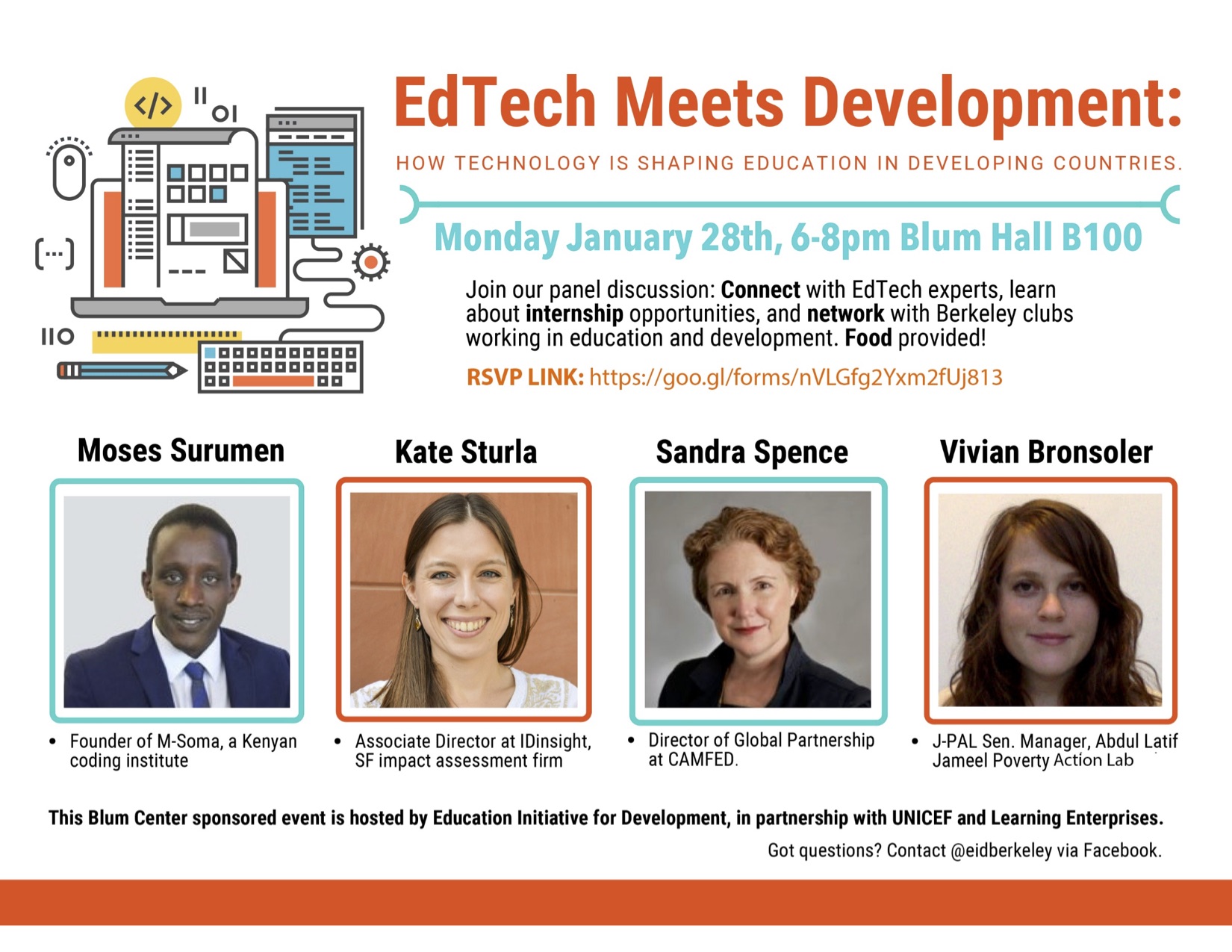 Education has long been considered a means to move out of poverty. Edtech—teaching and learning that makes use of technology—has in recent years become a multi-billion dollar sector for both developed and developing countries. And an emerging category in the sector are nonprofit organizations, backed by investors eager to spread tech literacy to improve livelihoods throughout the globe.
Education has long been considered a means to move out of poverty. Edtech—teaching and learning that makes use of technology—has in recent years become a multi-billion dollar sector for both developed and developing countries. And an emerging category in the sector are nonprofit organizations, backed by investors eager to spread tech literacy to improve livelihoods throughout the globe.
On January 28, Berkeley’s Education Initiative for Development (EID) IdeaLab, a group of interdisciplinary undergraduate and graduate students passionate about education and development, hosted four nonprofit education technology professionals to spark dialogue and provide updates on edtech’s evolution. Three of the panelists graduated from UC Berkeley and one is a current student.
The panelists included:
Kate Sturla (B.A. ‘09) associate director of IDinsight, a San Francisco-based impact assessment firm that uses data and evidence to help leaders combat poverty worldwide. Sturla manages projects in education, health, and agriculture.
Moses Surumen (B.S. ‘19), a fourth-year Cal engineering and computer science student, is founder of the Kenyan coding institute M-Soma, which teaches Kenyan high school students computer science. M-Soma currently instructs a cohort of 47 students.
Sandra Spence (MPH ‘09) is a UC Berkeley School of Public Health graduate and director of global partnerships for CAMFED, a nonprofit whose mission is to eradicate poverty in Africa through the education of girls and the empowerment of young women.
Vivian Bronsoler (MPP ‘14) is senior manager of J-Pal (Abdul Latif Jameel Poverty Action Lab), a nonprofit global research center based at MIT devoted to reducing poverty by ensuring that policy is informed by scientific evidence. With a network of 171 professors at universities around the world, J-PAL conducts randomized impact evaluations to answer questions in the fight against poverty.
The EID panel, moderated by student Paige Balcom, focused on common pitfalls of edtech to inform students about new directions in the field.
How is technology being used to support education in developing countries? How is it different urban or rural areas?
Kate Sturla: Edtech often operates in resource-poor environments—schools may not even have chairs or tables, let alone electricity. So we must be cognizant not only of physical limitations, but also that there is a thoughtful theory of change mapped out for any given edtech intervention.
Sandra Spence: When CAMFED started thinking about incorporating tech in schools, we knew it had to be very basic, especially in rural schools. In Malawi, we gave each school e-readers. The schools were able to negotiate the rights to get books for a discounted rate, which increased student exposure. In the beginning, the schools were scared the Kindles would be broken or stolen and it was hard for students to electrically charge the ebook. We encountered several hurdles to making the technology practical as we moved along.
Vivian Bronsoler: Technology can be used in innovative ways, but we have to be careful. Technology should not be a substitute for teaching or for cognitive practices while studying. For example, One Laptop Per Child [a nonprofit that creates and distributes educational devices for the developing world] had a broad goal to teach kids how to use computers. However, it hasn’t helped student learning or attainment of knowledge—it’s not a substitute. In other words, technology should be seen as a complement to teaching.
For example, technology can be helpful in less obvious ways that simplify the process of education. A website could could allow students to access homework assignments online, or a database could organize scholarships resources. A teacher could use an app to take attendance for large classes, and keep better track of grades—while parents could also access this information to be more involved in their child’s education.
What is a common misunderstanding people have about edtech in developing countries?
Sandra Spence: You can’t just drop technologies into an environment. You need to ask: What is the human platform that will support it?
Kate Sturla: People often conflate computer literacy skills with edtech. For example, access to computers can help students become more literate in how to actually use the device (i.e., typing) versus helping a student actually learn a subject, like math. We should also make sure we teach at the correct level and give teachers the tools to target students at different learning levels.
Vivian Bronsoler: Edtech is attractive to people who want quick solutions—it can seem like a solution, but money can often be better spent better somewhere else. It’s wrong to copy and paste an intervention from one context to another or say you have an innovative idea without actually testing it.
How do you think Berkeley students can make a difference in edtech?
Moses Surumen: Take an education class. We can’t develop apps without understanding of how people learn.
Vivian Bronsoler: During your college career, you learn the tools and theories to get trained on various poverty interventions. But then, once you are in the professional world, various realities exists and challenges arise. Volunteer anywhere you can to get some real-world experience—really be engaged. Learn as much as you can— you can use it in practice.
Sandra Spence: Don’t get swept away by technology. Be part of the wave that is thoughtful about the application of technology. Ask: How does technology fit into the environment? Is it empowering? Are you listening to the people closest to the problem?
Kate Sturla: IDinsight began as a graduate project. Being a student is the best time to build bridges across disciplines and majors and take classes to get different perspectives. Push yourself to take a class outside of your major to get a different angle.
Interested in joining the Education Initiative for Development IdeaLab? Contact IdeaLab Co-Directors Samuel Cabrera (samuel_cabrera@berkeley.edu) and Bei Zhang (bzhang_1900@berkeley.edu).
A Watershed Moment in Global Poverty Reduction
Shankar Sastry
Two thousand and eighteen has been called a watershed moment in global poverty reduction. It was the year—according to two major analyses—that more than half of the world’s population moved into the “middle class.” And it was marked by a billion people moving out of “extreme poverty” in the time period 2000-2018.
In terms of the global middle class, Homi Kharas and his colleagues at the Geneva-based World Data Lab have written in a Brookings Institute report that this demographic is defined as households that spend $11 to $100 per day per person in 2011 purchasing power parity. Kharas acknowledges that middle class does not have a precise international definition, but is a way to understand the ability for 3.8 billion people to buy consumer goods like motorcycles, refrigerators, or washing machines, go to the movies or take a vacation—and, most important, be able to weather economic shocks like short-term illness or unemployment without falling into extreme poverty.
The global middle class is predominantly Asian and spread out in China, India, and South and South East Asia, where urban populations have mostly doubled in the past generation. The World Data Lab forecasts the global middle class markets in China and India will grow to 5.3 billion people by 2030 and will account for $14.1 trillion and $12.3 trillion, respectively, comparable in size to a U.S. middle-class market at that time of $15.9 trillion.
That is a remarkable turn of events of great interest to policy makers, corporate leaders, and of course academic researchers at the Blum Center. Questions include: What are the products and services that this global middle class needs and wants? What are the implications for food, energy, and water production, and laterally, for climate change due to this socioeconomic growth? What skills and education are required for this rising population to sustain its progress? How will societal digital transformations, such as AI and automation, thwart or abet the billions climbing the economic ladder? And to what degree is this new global middle class sustainable?
Rohini Pande of Harvard’s Evidence for Policy Design Initiative, pointed out in a recent New York Times article that the decline in poverty in Indian and China “has fed an erroneous belief in the West that economies rising into middle-income status are on track to end extreme poverty and no longer need assistance.” She warns that a “redirection of global aid risks neglecting the hundreds of millions who may never escape poverty despite living in countries that are becoming relatively rich.”
Some of Pande’s analysis is in reaction to the other big global demographic story of 2018, published in the Bill and Melinda Gates Foundation’s “Goalkeepers” report, which tracks progress on 18 key United Nations Sustainable Development Goals. According to “Goalkeepers,” extreme poverty (US $1.90/day) is on the decline, with 50 million people’s lives being saved due to advances in medicine since 2000. One aim of the Gates report is to warn that extreme poverty is becoming heavily concentrated in Sub-Saharan African countries. By 2050, that region is where 86 percent of the world’s extremely poor are projected to live, with the majority (more than 40 percent) living in just two countries, the Democratic Republic of the Congo and Nigeria.
The Gates Foundation advises: “the world’s priority for the next three decades should be the third wave of poverty reduction in Africa.” It also warns that if large numbers of poor people in the poorest countries are denied opportunities, the result will be “insecurity, instability, and mass migration …. Investing in young people’s health and education is the best way for a country to unlock productivity and innovation, cut poverty, create opportunities.”
As we at the Blum Center mull all this, we are asking: What can be done to sustain global middle class progress in Asia and enable economic and technological development in Sub-Saharan Africa? What can we as stewards of the world’s leading public research university do to improve livelihoods worldwide? How best can we train the next generation of leaders in equality, innovation, and global problem solving? And what are the research areas on which we should make our big bets?
On January 8, 2019, Blum Center faculty and staff met with our counterparts from CITRIS and the Banatao Institute, Sutardja Center for Entrepreneurship & Technology, Haas Institute for Business and Social Impact, and Jacobs Institute for Design Innovation to think through our response to these and other questions. Most of these centers came out of the revolutionary changes that technology, globalization, and engineering advances have brought to high education and society over the past decade plus.
Since 2001, CITRIS has focused on creating interdisciplinary information technology solutions for California and beyond. Since 2005, the Sutardja Center has taught thousands of engineers and scientists to innovate, lead, and commercialize technology within a global economy. Founded in 2013, the Haas Institute for Business and Social Impact has addressed critical challenges facing the world through creative business solutions. Opened in 2015, the Jacobs Institute is as an interdisciplinary hub for learning and making at the intersection of design and technology. And founded in 2006, the Blum Center serves as the campus’ interdisciplinary hub for understanding and acting on devising solutions for global poverty and inequality.
These five UC centers have much in common because of the way they intersect on issues of technology and engineering, business and entrepreneurship, equality and social impact, and design innovation. Because of these commonalities, leadership from the five centers have decided to explore educational and research collaborations. We will be reporting on joint initiatives in future reports.
So please stay tuned, and let us know your ideas and projects that address this pivotal moment in global poverty reduction.
Shankar Sastry is Faculty Director of the Blum Center for Developing Economies. He is a Professor of Electrical Engineering and Computer Sciences, Bioengineering, and Mechanical Engineering.
“Imagining the Future Helps Us Engineer Toward that Future”: A Q&A with Will Tarpeh
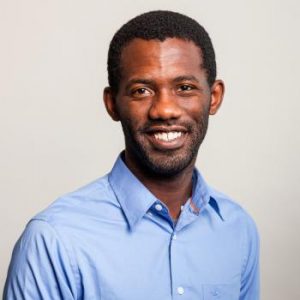
When Will Tarpeh was an undergraduate at Stanford University, he didn’t know if it was possible to be a research engineer who works in the developing world. His global interests started in high school, when he learned that more than 2 billion people lack access to adequate sanitation. And they expanded throughout college, as he studied chemical engineering and African studies and interned at Sarar Transformación, a Mexican nonprofit focused on sanitation. “That’s when I got interested in ecological sanitation,” he said, “which is just the idea of using waste as fertilizer.”
Tarpeh, now an assistant professor in chemical engineering at Stanford, says his professional turning point happened at UC Berkeley in 2013, the year the Development Engineering program started. The Blum Center sat down with Tarpeh to learn more about his views of Development Engineering and how his research combines electrochemical engineering, global sanitation, and resource recovery.
How did Development Engineering shape your academic work in global sanitation?
It was extreme serendipity. Development Engineering started the year I got to Berkeley and made a lot of things possible. It gave me a formal structure—having a chapter in my dissertation that was explicitly about Development Engineering and about my sanitation work in Kenya. If it weren’t there and if I hadn’t gone to Berkeley, I might not have explored this part of my academic identity in as much detail. Now it’s such a crucial part, I can’t imagine being an academic without it.
What else drew you to Cal?
I wanted to work with Professor Kara Nelson, because she has a process engineering focus for achieving sanitation goals. She had a Gates Foundation grant that was part of their Grand Challenges exploration, and she and a post-doc were working on the idea of using ammonia from urine to disinfect feces. I tagged along and went to the Gates Foundation’s Reinvent the Toilet Expo, which was my dream at that time. I got to see all these cool toilets, and realized there was a large community of academic researchers who shared my interests.
How did your own research develop?
My first year in graduate school I reviewed journal papers and focused on unanswered questions. That’s when we landed on urine and recovering nitrogen. We chose urine because there were lots of motivations for separating out urine and feces. And from a chemical engineering perspective, we thought nitrogen from urine could be useful because nitrogen fertilizers are central to modern society—they’ve helped feed a growing population. We focused on what we could borrow from other subfields, such as the extraction of nitrogen from wastewater in the U.S., and also on what we could dream up on our own to address sanitation access.
How do you see your academic contributions?
My first paper as a PhD student compared materials that adsorb or concentrate nitrogen in urine. We compared four different adsorbents. Then we took the work to the field and published it in the Development Engineering journal—which meant characterizing the technology in lab, bringing it to the field, and in between looking at the operating and design parameters to show the trajectory as a contribution. Another contribution is in electrochemical nitrogen recovery. Electrochemistry and wastewater treatment have met in earnest over the past decade or so. I’ve been part of the first group of people to apply electrochemistry to urine and to extract nitrogen in a new way we call electrochemical stripping. It’s set some records in terms of nitrogen recovery efficiency and resulting energy efficiency.
You said in a previous interview that “a lot of the solutions to the world’s most pressing problems are in the minds of children who are simply preoccupied with survival.” Why are children a place to understand the world’s grand challenges?
Grand Challenges are really interesting because they are descriptive in nature. Through them, academics, UN representatives, and others try to describe a reality that millions of people experience. But I think the expertise really lies in the communities who experience the problems. We as scientists can try to lend our technical expertise in other communities—but the people who live in those communities are the real experts. That’s how I approach my work. This comes in part from growing up in a low-income household in the U.S., and knowing that resource-constrained communities have valuable skills and life experiences to solve their own problems.
How new is the field of Development Engineering?
It’s not new in some ways. People have been doing this kind of engineering for as long as there’s been inequality. What’s new is that we’re studying how we do it and thinking about better ways to do it. Ten years ago, it was news to people that you need to engage the community when you design for it. It really was. We would learn about implementation failures all the time—and be surprised that engineers didn’t remember to ask people about their sanitation needs and, as a result, the new toilets got turned into closets because they had roofs. Now, I see the frequency with which that kind of thing is reported going down, which tells me there’s value in the Development Engineering enterprise. It formalizes things in a way that engineers who don’t focus on development can appreciate.
How important is field work to Development Engineering?
It’s a crucial site of learning. Going back and forth into the field has been extremely valuable to my research. Maybe the traditional model of humanitarian engineering was: you develop something in the lab about a problem in a developing community; you say, I have an answer for that; you characterize it in the lab; and you go out and say, here it is. But then you realize you were designing for constraints that didn’t reflect reality in the community. Development Engineering is about iterating. Over the course of my PhD, I went to Kenya and worked with Sanergy. That’s when I realized they were collecting urine but not yet creating value from it. Then I tinkered in the lab on the urine research, and spent the next four years going back and forth to see what worked and made adjustments, which allowed for the rigorous study we expect in academic communities.
Is being a Development Engineer a liability in academia?
I don’t think it is the liability it was five or ten years ago. It’s attractive now to do Development Engineering because of the huge impact you can have. Another part of this is students are demanding training to try to solve development problems. I have engineering students who say global sanitation really gets them moving and motivated. From a disciplinary perspective, Development Engineering is one of the ways we stay relevant to our students and to the Grand Challenges that people are facing around the world.
Are you seeing more academic engineers like yourself who do applied research in developing countries?
I do feel there’s a generation of professors tying loose ends together and thinking about ways to leverage skill sets that are no longer within one discipline. Alice Agogino always talked about the wicked problems that refuse to be classified in one silo and that demand multiple approaches. Many professors now have multiple skill sets and are oriented toward solving wicked problems. I feel I’m part of this, combining electrochemical engineering, global sanitation, and resource recovery.
Do you think it’s significant that most of your mentors have been women?
Yes, and that was a recent epiphany. After Berkeley, I did a post-doc at University of Michigan, where I also was advised by two women—Nancy Love and Krista Wigginton. Female professors have impacted me, particularly by seeing the extra obstacles they have to go through and the strategies they use to succeed. Being supportively mentored by advisors who are different than me has prepared me to support students from diverse backgrounds in my own career.
How do you advocate for STEM inclusion and equality now that you’re a professor?
I recommend students and colleagues for awards, formally by writing recommendation letters and informally by suggesting people for collaborations and so on. Also, being a black male, I try to serve as a role model for students. At Stanford, I give lunch talks with minority or under-represented students. It doesn’t take a lot of time and it could be a high impact intervention for one of them. I also work to design impactful programs. Kara [Nelson] and I were involved in the Graduate Pathways Symposium at Berkeley for underrepresented minorities to apply to grad school. I also make sure when I work in Kenya, I give author credit to the local researchers on my academic papers.
When will we achieve global sanitation?
There are some estimates that low and middle-income countries are not going to fully address the problem by 2050. One argument is that we won’t get there because of the barriers to creating centralized wastewater treatment facilities. But there are other options, namely resource efficiency. A paper I’m working on argues that if we take resource recovery one step further and bake sustainability into every process we do, we can minimize the inputs for everything we produce. The paper encapsulates the idea of the circular economy, of resource recovery. Of course, being a urine researcher, I believe separating urine has a role to play in that. I believe imagining the future helps us engineer toward that future.
—Tamara Straus
Siddharth Kara’s Garment Research Receives International Press Attention
Ann Mei Chang Advises a Lean Innovation Strategy to Maximize Social Impact
By Lisa Bauer
Ann Mei Chang, former chief innovation officer at USAID and former senior engineering director at Google, thinks that mission-driven organizations should act more like Silicon Valley startups. At a presentation at the Blum Center, she outlined her recent book, Lean Impact: How to Innovate for Radically Greater Social Good–which builds off Eric Reis’ best-selling Lean Startup, a veritable bible for iterative business development.
Chang is in a unique position to analyze how and why innovation works across sectors. In addition to working at USAID and Google, she has served as chief innovation officer at Mercy Corps, senior advisor for women and technology at the State Department, and director of product development at Intuit.
“Lean Impact is a strategy for maximizing social benefit in the face of complex societal challenges,” she said.
Chang presented three guiding principles for change-makers, nonprofits, and social enterprises to achieve social innovation: 1) Think Big–set an audacious goal to achieve exponential growth; 2) Start Small–run fast experiments to accelerate the pace of learning, save time and money, and minimize risk; and 3) Relentlessly Seek Impact–fall in love with the problem, not the solution, and accept failure as a natural part of the process.
For each principle, Chang provided examples from her book, which includes interviews with over 200 leaders of successful nonprofits worldwide.
Chang highlighted NexLeaf Analytics, a nonprofit that builds and deploys wireless sensors. NexLeaf’s goal was to increase the use of clean cookstoves to reduce harmful emissions in rural parts of India. To do so, the nonprofit installed sensors on the cookstoves to measure usage and found there was no correlation between self-reported usage and the actual usage; users had both underreported and overestimated their usage.
Through this example, Chang stressed that observing user behavior is far more accurate than asking hypothetical questions and talking to focus groups, as users will often say what they think you want to hear or inaccurately predict their own reactions.
Chang also highlighted a Kenyan company called Copia Global, which set out to make affordable consumer goods accessible to remote villages in Kenya. To get the company off the ground, the founder began testing what low-income villagers most wanted to buy. He asked: Would they be receptive to ordering from a catalog? What goods would they want? Which agents would be most effective? Though a series of iterations, the founder determined that people would order from catalogs, determined the most popular products, and identified the most effective selling agents. Copia Global now calls itself “the best of Amazon plus Fedex plus a healthy dose of emerging market expertise for underserved communities.”
Chang emphasized that scaling a social innovation is not easy. But she assured the audience that big goals and continual iteration are key.
“Be ambitious,” she told UC Berkeley students. “Don’t be afraid to set an audacious goal and relentlessly seek impact by falling in love with the problem.”
Big Ideas Innovation Ambassadors Nurturing Ideas into Enterprises
By Lisa Bauer
Founded in 2005 at UC Berkeley, Big Ideas has become one of the largest and most diverse student innovation competitions in the country. The contest supports the next generation of social entrepreneurs–providing mentorship, training, and the diverse resources required to support big ideas from their earliest stages. In 2017, to ensure the contest remains accessible to the widest number of students across UC’s ten campuses, the Big Ideas team designed an Innovation Ambassador program.
Tainted Garments
Pursuing a Career in Engineering Co-Design: A Q&A with Ryan Shelby
By Tamara Straus
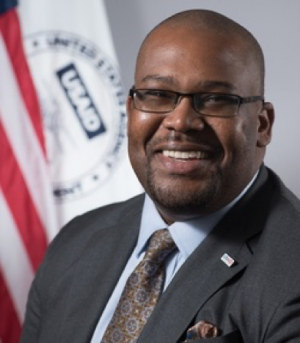 When Ryan Shelby left UC Berkeley with a PhD in Mechanical Engineering in 2013, he and his advisor considered his dissertation unusual. Shelby’s PhD research went beyond traditional engineering. It presented design theory and methodologies and was based on his involvement in building sustainable housing and renewable power systems with the Pinoleville Pomo Nation in Ukiah, California.
When Ryan Shelby left UC Berkeley with a PhD in Mechanical Engineering in 2013, he and his advisor considered his dissertation unusual. Shelby’s PhD research went beyond traditional engineering. It presented design theory and methodologies and was based on his involvement in building sustainable housing and renewable power systems with the Pinoleville Pomo Nation in Ukiah, California.
“Looking back, I was a bit of an odd duckling,” said Shelby, now a Diplomatic Attaché and Foreign Service Engineering Officer at the United States Agency for International Development in Haiti. “I wanted to do PhD work that was applied and more meaningful in a development context.”
Shelby failed his first qualifying exam. But the setback forced him to delve beyond engineering and become a technology for development polymath. He steeped himself in business, environmental science and policy, ethnographic studies, development theory, information technology, and the history of Native American tribes. When Ryan was handed his diploma, he continued along this interdisciplinary path. During the summer of 2013, he served as a Science, Technology & Innovation Fellow at the Millennium Challenge Corporation. He then worked in Sub-Saharan Africa and other emerging regions as a senior energy advisor for the U.S. Office of Energy and Infrastructure, landing in 2016 the position as a USAID foreign service engineering officer.
At USAID, Shelby has been developing and managing Haiti’s Build Back Safer II program, for which he recently won an award. Build Back Safer II provides local job training and material sourcing for hurricane-resistant building structures. To date, the program has resulted in 4,000 home roof repairs, the training of over 2,000 people (60 percent women) in roof rehabilitation techniques, and the completion of scores of handwashing and toilet facilities in areas damaged by Hurricane Matthew. Build Back Safer’s II next stage of repairs will focus on microgrid rehabilitation, water point upgrades, and sanitary block restoration in health clinics.
At UC Berkeley, Shelby remains a model for engineering Berkeley PhDs who want to do interdisciplinary research in low-income regions and use their technology skills. The graduate program in Development Engineering comes in part out of his quest to do applied engineering at the dissertation stage. To learn more about his trajectory as well as his views on engineering co-design, the Blum Center spoke with Ryan Shelby from his USAID office in Port-au-Prince, Haiti.
How did your upbringing influence your academic and career pursuits?
I grew up in really rural Alabama, in Letohatchee, where there were about 600 to 700 people. My Dad had a farm there. I always liked to tinker—mess around with my Dad’s tractor, take apart my Mom’s vacuum cleaner. Luckily, my parents indulged me and I had a natural affinity for math. They let me to go to Alabama Agricultural & Mechanical University, an historically black college that had a very good engineering program. I majored in mechanical engineering with a focus on propulsion systems. It was 2003/2004 when President Bush talked about going after more alternative, sustainable energy approaches. That was pretty exciting to me, but Alabama A & M didn’t have an energy program. That’s when the dean of my university, Dr. Arthur J. Bond, told me about UC Berkeley and Professor Alice Agogino. He made the connection for some mentoring with her, and she encouraged me to apply. She said I could pursue design, energy, and engineering work.
Would you advise engineering PhD students to do applied work while in university?
In academia, there’s a lot of amazing ideas and technologies. But transferring those ideas into a practical technology that can be built and implemented at scale and have impact within a short time horizon—that’s not something easily done. Still, I would encourage people do this in an academic setting, because it’s a lot easier to do theoretical and applied work and fail and learn from those mistakes, as opposed to when you’re out in the policy world or in industry. The more you ideate, the more you fail, the more information you gather. It allows your next version to reach a more optimal solution.
How does USAID view university-incubated innovations?
The applied work university researchers do makes it a lot easier for us on the government side to say, “It’s been peer-reviewed and tested. Now let’s learn from what the Ivory Tower has done and integrate the work into our projects.” That’s how USAID under the Obama administration and now under the Trump administration is approaching university innovators. We realize universities have great ideas; they may be too high risk for industry to fund. But the U.S. government is willing to make informed decisions to invest in these technologies, so we can grow them and integrate them into our work—and ideally leapfrog pitfalls some countries face in their self-reliance and overall growth.
Are you working with universities in your Build Back Safer II program in Haiti?
Yes, we are partnering with the American University of the Caribbean in Les Cayes, Haiti and the Swiss Development Corporation to develop training programs on rehabilitation techniques and housing upgrades for homes and other vertical structures that were damaged by Hurricane Matthew. We identify masons and carpenters and others in the community who have some technical skills and interest in learning new vocational skills, and train them in hurricane repair and making proper foundations. We’ve combined that with vendors in the area, to source the right materials, so they can go out and implement a lot of these repairs—on roofs, water distribution points, and on two solar microgrids in the southern part of Haiti.
What combination of skills did you deploy to develop this program?
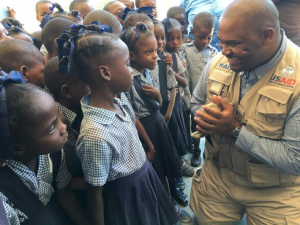 I designed this program because of my experience with the Pinoleville Pomo Nation. Coming in and putting in a solution that does not fit the cultural context is not the best way to ensure sustainability and self-reliance. Rather, you need to understand community needs, understand situated knowledge. In Haiti, we want to give community members access to the latest technology and building techniques. For me, this requires learning the Haitian way of building, and co-creating a shared knowledge base of how we can go out and do housing repair work that pulls from these knowledge bases. One the traditional building techniques here is called clissage, where you weave pieces of wood of varying tensions to create strong foundations and vertical structures. What we’re doing is showing Haitians how they can bolt onto clissage more modern and hurricane-resistant techniques for roof design and installations.
I designed this program because of my experience with the Pinoleville Pomo Nation. Coming in and putting in a solution that does not fit the cultural context is not the best way to ensure sustainability and self-reliance. Rather, you need to understand community needs, understand situated knowledge. In Haiti, we want to give community members access to the latest technology and building techniques. For me, this requires learning the Haitian way of building, and co-creating a shared knowledge base of how we can go out and do housing repair work that pulls from these knowledge bases. One the traditional building techniques here is called clissage, where you weave pieces of wood of varying tensions to create strong foundations and vertical structures. What we’re doing is showing Haitians how they can bolt onto clissage more modern and hurricane-resistant techniques for roof design and installations.
Is there a fairly straight line from your doctoral work to your current USAID work?
I told Alice [Agogino] it’s like déjà vu. My work in Haiti is almost a mirror image of the dissertation work I did at Berkeley. It’s still housing, design, and rehabilitation work, and it’s also energy systems to provide electricity to support economic growth. This is the exact thing I did with the Native American tribe. I’m using the same research techniques and codesign methodology with these Haitian communities. If I hadn’t done this dissertation work at Berkeley with Native American communities in California, I would find my job at USAID hard to do. I wouldn’t have the theoretical background or the tangible experience to prepare me for this work.
Which thinkers would you recommend to students in development engineering?
I highly recommend [UC Santa Cruz Professor] Donna Haraway’s work on situated knowledge as a core tenet of co-design and co-creation. Situated knowledge pulls from environmental science policy and feminist theory, and provides an intellectual framework for understanding and utilizing people’s knowledge bases. I also recommend [Harvard Professor] Sheila Jasanoff’s work on the co-production of knowledge and [Rutgers University] Frank Fischer’s work on citizens as experts of the environment. Dr. Fisher writes about how communities work with outsiders to understand environmental impacts and how to try to design and implement solutions.
How has the field of development changing, particularly for the U.S. government?
It really hasn’t changed that much between Administrations. Both the Obama and Trump Administrations have pushed to work with nontraditional actors, including universities. One big difference with development under the Trump Administration is we’ve increased the focus of self-reliance and co-creation. Our goal is to partner with a host country governments and co-design solutions with them, so that the host country itself can do the implementation work and not have to rely fully on the U.S. government. Under the Trump Administration, USAID is committed to streamlining our procurement approaches and increasing the usage of co-creation design approaches within new awards by 10 percentage points in Fiscal Year 2019. We want to continue to partner with universities, partner with private sector, partner with religious groups, partner with other nontraditional actors—so we can get the best technologies, solutions, and innovations to fit the needs of a host country government and get it out in the field as quickly as possible. The aim is to improve their resiliency and self-reliance and reduce their overall dependency on U.S. foreign aid as well as eventually open up new markets for American goods and services.
What would you recommend to Development Engineering students who want to work for USAID and other governmental organizations?
The transition from a more research background into development or the policy arena can be as perilous as crossing the sea with the sirens Scylla and Charybdis on either side. To navigate this path, I would recommend engaging in more applied research while at Berkeley with professors like Alice [Agogino], Alastair [Iles], Ashok [Gadgil], and Dan [Kammen] to get a better understanding of this space. Next, I highly recommend that students consider pursuing science and technology policy fellowship programs, such as the Christine Mirzayan Science & Technology Policy Graduate Fellowship Program at the National Academies, the California Council on Science and Technology, or the Institute for Defense Analyses Science and Technology Policy Institute (STPI) Fellowship. These programs are designed to help Bachelor, Master, and PhD candidates and recipients to understand how science is utilized in development and policy making. My experience as a Fall 2012 Mirzayan Fellow was instrumental in helping me land my job at the Millennium Challenge Corporation and USAID, as the National Academies taught me how to translate science and engineering speak into the language and format of a policy brief. Moreover, I was able to use my time at the National Academies to conduct informational interviews with development professionals within government as well as in for-profit and nonprofit organizations, to better learn which technology gaps and other seemly intractable problems that were encountering. These interviews and the knowledge that I gained were instrumental in helping me find and land a position at USAID.
Maria Artunduaga’s Mission to Manage Chronic Lung Disease
By Tamara Straus
On February 26, 2018, Maria Artunduaga had a eureka moment that medical entrepreneurs dream of. In the office of UCSF Professor Mehrdad Arjomandi, she was soliciting advice about a wearable prototype she had developed to monitor oxygen in patients with chronic obstructive pulmonary disease (COPD). Dr. Arjomandi—a clinical professor and foremost expert on COPD—was telling her about an air trapping investigation he had been doing for over a decade. He was bemoaning the enormous time and expense involved in testing patients with COPD, the third leading cause of U.S. deaths.
Graduate-Undergraduate Student Mentorships Grow
When Chancellor Carol Christ released UC Berkeley’s strategic plan for 2019-2029, two overarching goals were relevant to the Global Poverty & Practice minor and the Blum Center’s graduate program, Development Engineering.
The first goal was to “empower engaged thinkers and global citizens to change our world. Specifically, Christ wrote: “Acts of discovery—self-initiated projects that create new knowledge—will be a focal point of undergraduate study. Engagement with the world beyond campus, and reflection on the meaning of an education, will also be key to the Berkeley experience. Master’s students will see increased investment in their knowledge and skill-building, and doctoral students will receive added training, mentorship, and financial support.”
The second goal was “focusing on the good: innovative solutions for society’s great challenges.” Christ explained, “Faculty, staff, students, alumni, and our larger community will come together to address the great challenges of our time that Berkeley is particularly well suited to address, including technological change and artificial intelligence; environmental sustainability; the future of democracy; inequality; human health; and the future of public higher education.”
These two goals are already integrated into Global Poverty & Practice (GPP). They also are being exercised in several new mentoring arrangements between GPP and Development Engineering students focused on socioeconomic solutions with community groups and NGOs.
Take the Pinoleville Pomo Nation collaboration. Since 2017, several GPP and Development Engineering students have been working with a Native American tribe of 300 people based in Ukiah, California and an interdisciplinary UC Berkeley group called CARES—Community Assessment of Renewable Energy and Sustainability—to co-design STEM education activities for native students.
For George Moore, a UC Berkeley Mechanical and Development Engineering graduate student, the project has been a means to further educational equity and gain teaching skills. He recounted that both graduate students and undergraduate students, such as GPP student Arielle Dollinger, were able to co-design the 2018 STEM education workshop with community members.
“Among the decisions we collectively made were to teach engineering design through Pomo Pinoleville basket-making techniques and to engage students in 3D printing designs from local art and nature,” said Moore.
Dollinger said the CARES-Pinoville Pomo Nation project was appealing for her GPP Practice Experience because she wanted to work locally and in an interdisciplinary vein.
“It was really up my alley because I’ve taken Native American Study classes and I am committed to environmental justice and social equity,” said Dollinger, who added that the Development Engineering team was “very open to undergraduates contributing input and insights and opinions. We conducted weekly meetings throughout the spring semester, and I felt I was part of the development of the project. Also, just having the opportunity to work with a California indigenous community was a huge privilege and honor.”
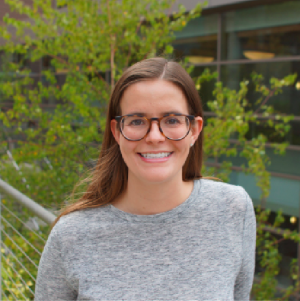
Another recent mentoring collaboration between Development Engineering and GPP students involves Visualize, founded by Mechanical Engineering PhD student Julia Kramer. Kramer started the project—a healthcare design and training program to teach midwives in Ghana to screen women for cervical cancer—as an undergraduate at University of Michigan and continued it during her summers at Cal, winning a Big Ideas award in 2015. In the fall of 2016, she decided to connect to a Cal group called Invention Corps, to find project assistants. There, she met Iris Huo, an undergraduate economics and GPP student, who has since worked with Kramer to iterate on Visualize and, during the summer of 2018, accompanied her to Ghana.
“I understood right away the tangible impact of Visualize to affordably and effectively reduce mortality rates in women,” said Huo. “The work has been the most life-changing experience I’ve had, especially what I learned in Ghana. And Julia, to this day, remains the paragon of mentorship that we have at Invention Corps.”
Kramer—who is mentored by Blum Center Education Director Alice Agogino, a nationally recognized expert on mentoring students in interdisciplinary engineering—has found the collaboration equally rewarding.
“I’ve had really positive interactions,” Kramer said of working with GPP and other undergraduate students on Visualize. “The other part was certainly logistical. I was studying for my quals the semester I started working with them—so the idea of them helping out and being the actual hands that were doing the design work, where I could just do the mentoring and oversight, was really appealing to me. I also felt I had time to meet with them weekly, field questions, and give them more feedback than a busy tenure track professor would have.”
Fletcher Lab CellScope Is Ready for Scaling
By Lisa Bauer
Nearly a decade ago, more than 80 global organizations came together to sign the London Declaration on Neglected Tropical Diseases, to control, eliminate, or eradicate at least ten of the diseases by 2020. Progress has been made on “NTDs” (neglected tropical diseases), but they still affect nearly one billion people, reinforcing poverty in low-resource regions.
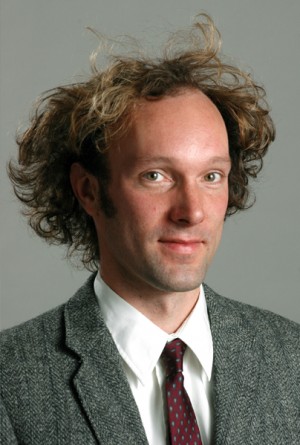 UC Berkeley Professor of Bioengineering Dan Fletcher has been working to accelerate NTD diagnosis and treatment with a device so ubiquitous it’s probably in your hand: a smartphone. Fletcher, with a group of interdisciplinary scientists from in and outside his lab, have steadily proved that smartphone cameras can be repurposed as microscopes to identify disease-causing pathogens, such as the bacteria that cause tuberculosis and the parasites that cause River Blindness.
UC Berkeley Professor of Bioengineering Dan Fletcher has been working to accelerate NTD diagnosis and treatment with a device so ubiquitous it’s probably in your hand: a smartphone. Fletcher, with a group of interdisciplinary scientists from in and outside his lab, have steadily proved that smartphone cameras can be repurposed as microscopes to identify disease-causing pathogens, such as the bacteria that cause tuberculosis and the parasites that cause River Blindness.
“Phones have enormous imaging and processing capabilities,” explained Fletcher at a recent faculty salon of the Blum Center, where he serves as chief technologist. “Our work has been to harness these consumer electronics to do the complex imaging and image interpretation tasks. We add lenses and automation to the mobile devices; then we capture, geotag and upload the image data we collect, giving us greater information about the spread of disease.”
By removing the need for a laboratory and highly trained technicians to perform image-based processing, the Fletcher Lab’s CellScope, as the family of devices is called, can dramatically expedite NTD treatment by enabling patients to receive rapid, low-cost, and highly accurate diagnoses, even in remote regions. Fletcher and others believe the device has enormous potential to contribute to NTD elimination efforts, because while the drugs to treat NTDs already exist–an efficient, systematic, and affordable diagnosis and treatment method does not.
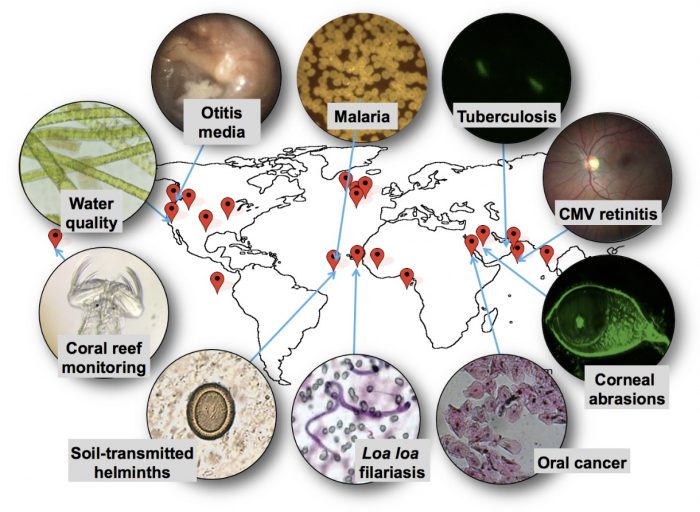
“Thanks to the London Declaration, major pharmaceutical companies have pledged to contribute the drugs needed to treat many NTDs,” said Fletcher. “CellScope will help us tackle the missing ingredient: the way to identify those in need. For effective treatment and monitoring, we must know who’s infected, where they are, and whether there is reemergence. That’s where technology comes in.”
The latest version of CellScope, called LoaScope, has proven effective in Cameroon, where it is being used to combat a NTD called River Blindness or Onchoceriasis. Endemic in Sub-Saharan Africa, Onchoceriasis is a severely debilitating disease that results in human blindness. Although the antiparasitic drug, Ivermectin, is readily available, treatment via mass drug administration has been halted in some regions due to serious adverse effects caused by co-infection with a worm call Loa loa. Treatment in Loa-endemic regions is complex because if Ivermectin is administered to someone who is simultaneously infected with Loa Loa, the drug can lead to fatal complications.
To safely relaunch mass drug administration of Ivermectin, Fletcher and a team of medical professionals from NIH in the U.S., IRD in France, and CRFilMT in Cameroon launched a pilot project in Okola District of Cameroon, with funding from the Bill and Melinda Gates Foundation. Local healthcare workers collected small blood samples from patients and inserted them into the LoaScope to measure the number of parasites; if the number was below a certain safety threshold, then the patient was treated with Ivermectin. Patients with parasite loads above a certain threshold did not receive Ivermectin to reduce the possibility of complications from treatment.
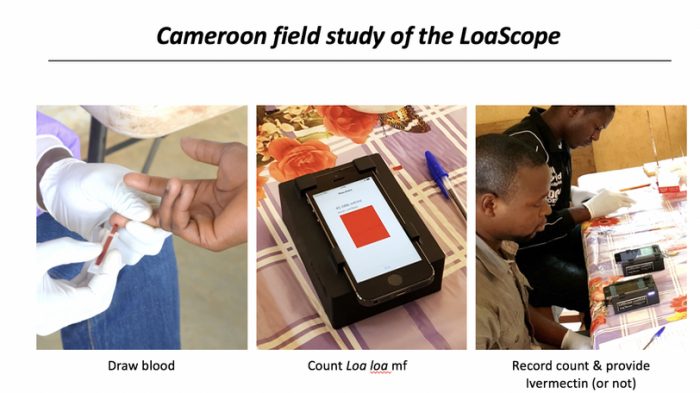
With this approach, 96 percent of the 16,000 people examined in the Okola District pilot study had Loa loa levels below the safety threshold and were treated for River Blindness, while only 2 percent had to be excluded because of Loa loa levels that put them at risk of complications from treatment (the remaining 2 percent could not receive Ivermectin for other reasons such as pregnancy or illness). Findings from the Cameroon pilot were published in 2017 in the New England Journal of Medicine.
The Cameroon Ministry of Health approved the study and backed the use of the LoaScope technology to restart mass administration of Ivermectin for control of River Blindness. Prior to the pilot study, a public health education campaign to encourage citizens to seek safe diagnosis with LoaScope was carried out–including public testing of the Minister of Health with the LoaScope.
Although the Cameroon pilot was a success, the next challenge is scaling the technology so that the millions of people living in Loa-endemic regions can benefit from safe treatment of River Blindness with ivermectin.
“The problem is no longer that we don’t have the tools. We now do,” said Fletcher. “The problem right now is the funding, manufacturing, and distribution gap–how do we best scale this device and get it to the people who need it?”
Funds are needed to mass produce the device, establish a support infrastructure, and develop an IT system. Yet the cost benefits could be significant. For example, currently the cost of a single capillary for the LoaScope is $2; if the process was automated, the cost would decrease to just 30 cents. A similar reduction in cost of the device is possible.
In addition to River Blindness, the Fletcher Lab has identified five other NTDs for which CellScope could be applied. Schistosomiasis is the next disease the lab hopes to test and treat. Like River Blindness, schistosomiasis is a worm-based disease, but the parasites that cause it are detected in urine or stool samples. Thus, instead of taking a blood sample, CellScope would be adapted to analyze filtered urine and stool that is loaded into the same capillary and imaged with the same device.
“The basic technology–a mobile microscope with image processing capabilities–is already there, and with a few modifications we can adapt it to new diseases,” said Fletcher. “Increasing access to high-quality disease diagnosis is beginning to be within reach for low-resource settings with technologies such as these. But the same challenge remains: scaling.”
2018
2013 – 2014
2012
2010 – 2011
2009
December 2018
ZestBio Continues Innovation with Waste-based Products
By Tamara Straus
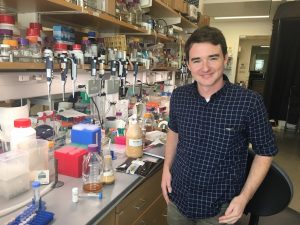 Early in 2017, Ryan Protzko, then a doctoral student in biochemistry at UC Berkeley, was working on research to turn orange peels into eco-friendly bottles and contacted a citrus juicer in California’s Central Valley. Would the company be able to spare some orange peels? Yes, responded the representative, the juicer could truck “a couple tons” of wet navel peel to Protzko’s lab free of charge.
Early in 2017, Ryan Protzko, then a doctoral student in biochemistry at UC Berkeley, was working on research to turn orange peels into eco-friendly bottles and contacted a citrus juicer in California’s Central Valley. Would the company be able to spare some orange peels? Yes, responded the representative, the juicer could truck “a couple tons” of wet navel peel to Protzko’s lab free of charge.
Protzko, co-founder of the green chemistry startup ZestBio, tells this story to widen people’s eyes to the gargantuan amount of agricultural waste produced on Earth. Up to 50 percent of citrus fruit, potato, sugar beet, and grape weight is made up of wasted matter: peels, pulps, and pomace—and that matter comprises only 10 percent of the crops’ value.
In numeracy, citrus pulp and peel alone generate 10 million metric tons of waste worldwide every year. Much of it is reused as feed to cattle, but this requires an energy-intensive process. Peels that are not dried can end up in piles of putrefying waste that cause environmental damage to local waterways and release greenhouse gases, particularly methane. It makes one guilty to drink a glass of orange juice.
Nonetheless, the free citrus pulp offer was confirmation for Protzko and his ZestBio partners—Luke Latimer, who received his PhD in chemistry from Cal in 2017, and UC Berkeley Bioengineering Associate Professor John Dueber—that the raw materials they needed were more than available. What they also soon discovered was that agricultural producers are keen to collaborate on green chemistry products which repurpose their waste, increase their crop value, and reduce emissions by repurposing peel, pulp, and pomace for viable and especially non-oil-based products.
“Just the idea of taking agricultural waste and turning it into something else was exciting to producers,” explained Protzko to the sound of a whirring fermentation shakers in his lab at Berkeley’s Energy Biosciences Building. “It took us some time to figure out what we should do and what might be economically viable—but that eventually came from talking to big chemical manufacturers and from the industry responses to our academic paper.”
That academic paper demonstrated the possibility of using engineered yeast to convert pectin-rich orange peel waste into plastic bottles. It is an advance enabled by the last 10 years of metabolic engineering, says Protzko. ZestBio’s goal is to use yeast to make chemical building blocks, which include the plastic polyethylene furanoate (PEF)—a bio-based plastic produced from agricultural waste. The team is one step closer to that goal, as demonstrated in a November 2018 Nature Communications paper, in which the researchers solved challenges associated with engineering a microbial strain to convert pectin-rich hydrolysates into commodity and specialty chemicals.
The Nature Communications paper lands a week after one of California’s most extreme environmental disasters—the Butte County fires, which have been attributed to fossil fuel-driven climate change and which covered the Energy Biosciences Institute in smoke the day of the ZestBio interview. Among the advantages of PEF, says Protzko, is reducing reliance on its chemical cousin, polyethylene terephthalate (PET), found in food packaging and plastic drink bottles. Indeed, when it comes to bottles, an environmentally sustainable solution is in demand. A Pacific Institute study found that approximately 17 million barrels of oil equivalent were needed to produce the plastic water bottles consumed by Americans in 2006—enough energy to fuel more than one million cars for a year.
“Waste causes environmental issues,” says Protzko. “If we can create sustainable products then we’re actually replacing oil and other unsustainable resources.”
ZestBio is part of an increasing number of bioscience startups in the Berkeley area—including Zymergen, Lygos, Amyris, Zymochem, Sugarlogix, Visolis, and Bolt Threads—that have received support from the Energy Biosciences Institute (a BP-funded partnership of UC Berkeley, Lawrence Berkeley National Lab, and University of Illinois Urbana-Champaign) and the U.S. Department of Energy’s Joint BioEnergy Institute, a research partnership led by Lawrence Berkeley National Laboratory. Since 2007, more than 1,000 researchers have been supported, creating what Protzko calls a “thriving community of Berkeley-based startups involved in bioscience for environmental solutions.”
The cell and molecular biologist from Baltimore did not always see himself as an entrepreneur. It was his co-founder and fellow doctoral student Luke Latimer who pushed him to see their PEF research as a business. Their first step, says Protzko, was to apply to the Big Ideas student innovation contest in the fall of 2016.
“Big Ideas was what jump-started everything for us,” says Protzko. “It forced us to think through step by step what everything would look like and develop a foundation for the company. It was our first time transitioning from being just graduate students to thinking about the bigger impacts we could have.”
Latimer and Protzko submitted their pre-proposal in November 2016 and were assigned an advisor, Tony Kingsbury, from the plastics industry, “who was really great about letting us know what challenges we’d be looking forward to. He forced us to think about different products.” The ZestBio team won first place in the Energy & Resource Alternatives category in May 2017.
Since that time, ZestBio has received pre-seed capital from the National Science Foundation’s SBIR/STTR program and is participating in Berkeley’s Skydeck accelerator program.
“NSF really pushes customer discovery and commercialization. They go after high risk, high reward for Phase 1. What we’re proposing—we definitely know it’s high risk, high reward, because it’s never been done before.”
The ZestBio team is in conversation with Method and other green products formulators to share research information on its bottle composition process and household cleaning ingredient possibilities. The team aims to have its bio-based bottle on the shelf in five years. In 10 years, says Protzko, the team wants to expand its production beyond eco-friendly bottles to include different vegetable processing and products for multiple producers.
“This is also a global issue,” says Protzko. “Over 60 percent of oranges that are juiced are in Brazil. That would be an incredible market to tap into when we have a refined process to do it.”
The Future of Collaboration in the Future of Work
By Rachel Dzombak
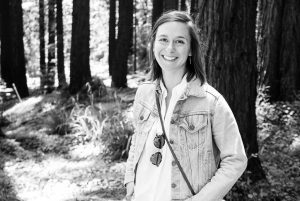 At the 2018 Autodesk University conference, a weeklong event bringing together representatives from the building, design, manufacturing, and construction industries, the skillsets required for the future workforce were a heavy focus. In her keynote speech, Beth Comstock, the former CEO of GE, discussed how multinational companies are reorganizing around digital information flows, asserting, “We can’t control change, we can’t predict the future, but we can be more adaptable.”
At the 2018 Autodesk University conference, a weeklong event bringing together representatives from the building, design, manufacturing, and construction industries, the skillsets required for the future workforce were a heavy focus. In her keynote speech, Beth Comstock, the former CEO of GE, discussed how multinational companies are reorganizing around digital information flows, asserting, “We can’t control change, we can’t predict the future, but we can be more adaptable.”
Throughout the conference, others asked: How do we build an adaptable workforce? How are educational needs shifting in response to emergent industry changes? What are the initial steps that we need to take to prepare for the transition?
These critical questions are being asked not just by industry leaders but by faculty and senior administrators at universities. The conversation at UC Berkeley is near constant, especially in engineering and business. Students and faculty alike want to know: How will companies operate? How will industries evolve? And how should socio-political systems best adapt to workforce changes?
There are pessimists and optimists. Among the optimists is UC Berkeley Robotics Professor Ken Goldberg, who argues that forecasts of mass unemployment are unfounded. He believes new jobs will replace old ones and even imagines, echoing Maynard Keynes, that automation will lead to elimination of mundane tasks, giving people time to be more creative.
A technology-infused world that abets humans must be a goal. We may even be on the brink of a golden age of intelligent collaboration—enabling new inventions and ways of thinking that come from the melding of disciplines, cultures, and fields. As Fei-Fei Li, a Stanford University computer science professor and former chief scientist at Google, points out, bringing technology to bear on societal issues will “require insights derived from fields beyond computer science, which means programmers will have to learn to collaborate more often with experts in other domains.” In other words, workers, especially those in the cutting-edge fields, will be compelled to integrate computation with linguistics, behavioral science with physics, economic development with history, and so on.
Historically, universities provided access to knowledge and skillsets that was hard to reach otherwise. Knowledge was held by faculty experts who achieved mastery in narrow subjects, and delivered material to students via lectures. With the rise of the Internet, content is now available at an unprecedented level. Students are learning to prove fluid dynamics proofs through YouTube, skipping economics class in favor of learning through Khan Academy, and asking Google or Wikipedia “How do I design a gray-water system?”
If students are then learning traditional material through other forums, what is the value of the university today? And what do students need to learn that cannot be taught online? The World Economic Forum cites the top six skills needed in 2020 as: 1) complex problem solving, 2) critical thinking, 3) creativity, 4) people management, 5) coordinating with others, and 6) emotional intelligence.
In this first article on the future of work, I want to underscore that three of the top six skills on this list—and many others—focus on collaboration. This is unsurprising, as work increasingly happens in teams regardless of industry. However, few (if any of us) have ever been explicitly taught how to work in teams. We learn through sports and project work, but team-based experiences often lead to frustration (“oh, I’m stuck doing all the work again”), confusion (“we’re all on different pages”), or conflict (“it’s really hard to work with people who are so different from me”).
Teaching students to collaborate across diverse teams will be a key priority of universities in the coming years. Speaking on cultivating the next generation of students, Ruth Simmons, former president of Brown University and current president of Prairie View A&M University, commented in a recent New York Times article about the role of teaching students to collaborate. She said, “If we’re doing what we should be doing, we are acclimating students to an environment in which they have to learn to work with others who are very different from themselves. And that seems to me to be the first requirement of leadership. To actually learn to work with people in a respectful and inclusive way is inordinately important.”
At Berkeley, Professor Sara Beckman and I developed a toolkit called “Teaming by Design” for teaching students how to collaborate in teams. We provide tools and research grounded in human-centered design, organizational behavior, and systems engineering to educate on building self-awareness, working collaboratively with others, and growing capacity to achieve innovative outcomes.
In the toolkit, we outline four phases: Team Formation, Team Launch, Team Check-in, and Team Celebration. Within each phase, we give exercises teams can conduct to improve their dynamics and research to ground the importance of the phase as well as raise consciousness of common issues. We additionally provide guidance on what work should be done in teams. Too often in school, team work is confused with group work. Students quickly divide the work among themselves and meet only to staple the elements together.
A team, by definition, is a collection of people who are committed to a common purpose, whose interdependence requires coordinated effort, and who hold themselves mutually accountable for results. While in some Berkeley classes, teams are comprised of a mix of different students from the same majors (e.g., a mechanical engineer and civil engineer working on the design of a sensor), other teams cross the spectrum—bringing together students from business, art, history, and dance to address, for example, homelessness. Both experiences represent deep learning opportunities for students to become exposed to different ways of thinking and doing.
Our work aims to create change on several levels. First, it is a resource for faculty who may be unfamiliar with how to coach teams. Despite the changes coming to education, faculty (particularly at research universities) are still largely hired for expertise in a narrow field. A fluid dynamics professor who wants students to work in teams within her class may be great at coaching on mathematical modeling issues yet far less equipped at structuring projects that require interdependence or coaching on the socio-emotional challenges that come up within project teams—such as issues of mutual accountability, trust, and conflicts stemming from varied personalities. We work with faculty in business, engineering, art practice, and biology to teach them how to collect feedback and how to debrief the feedback with students, so that it becomes a learning mechanism and not only a tool for grading.
During the Autodesk University conference, advanced machines, XR headsets, and 3D digital models were prominently on display. But even more prominent were the opportunities that technology could enable. For example, advanced lighting systems that provide Internet, mood, music, and safety features—in addition to light—could lead cities to rethink public services. The role of the lighting designer will shift from thinking about delivering light to imagining ways people might navigate their environment. This new frame increases the importance of knowing how to draw out insights from residents and collaborating with relevant stakeholders. Advancing technology forces individuals and organizations to rethink the systems in which they are working, and who they are working with. The more diverse the collaboration, the higher chance for creative problem solving.
We need to start ensuring that students are equipped with the ability to collaborate across untraditional boundaries, because collaboration will be critical for their success in the rapidly evolving workplace.
Rachel Dzombak is a Research Fellow at the Blum Center for Developing Economies. She researches and teaches design, innovation, and system thinking.
SACEPI: Bridging College Food Insecurity and Waste
By Sara Tsai
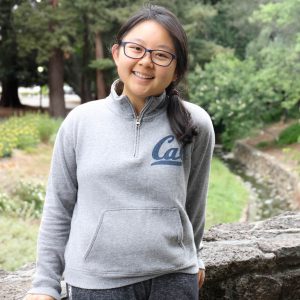 The UC system is often lauded for its ability to cultivate socioeconomic mobility. A 2015 New York Times study placed UC campuses in six of the seven top spots in its index of economic diversity, and the UC system performed the strongest in this year’s U.S. News & Report Ranking on social mobility.
The UC system is often lauded for its ability to cultivate socioeconomic mobility. A 2015 New York Times study placed UC campuses in six of the seven top spots in its index of economic diversity, and the UC system performed the strongest in this year’s U.S. News & Report Ranking on social mobility.
However, the UCs are struggling to support their low-income, working class, and now middle-income students once they arrive on campus. The UC Office of the President’s Global Food Initiative found that, as of 2017, 44 percent of undergraduate and 26 percent of graduate UC students lack consistent access to nutritious food and 5 percent of UC students report experiencing homelessness. These rates are even higher among marginalized communities, such as people who are first-generation, LGBTQ+, or former foster youth.
What does this mean on the ground level? At UC Berkeley, which was ranked the most expensive college town in the country, the campus food pantry has seen usage increase tenfold over the past two years. It means that 40 percent of undergraduates are struggling to put food on the table. It means that students are having to choose between paying rent or eating full meals, and more often than not, skipping class to work part-time jobs that enable them to pay for class.
At the Student Action Committee for the Eradication of Poverty and Inequality (SACEPI), the student arm of the Blum Center Network, student representatives from each of the UC campuses are brainstorming how to activate solutions for these poverty-related issues. As the UC Berkeley undergraduate representative, I have been working with campus partners to address this crisis.
First, it is important to recognize that increases in the cost of living have outpaced the cost of tuition, and non-tuition expenses can account for over 60 percent of the total cost of attendance. While efforts have been made to provide financial assistance to support students in need, over half of the students who reported experiencing food insecurity also had paying jobs or received financial aid. Therefore, to address the landscape of basic needs insecurity, we need to look not only at the cost of tuition (which has has tripled and over the past four decades) but also at the cost of living.
Second, while there is support through programs such as CalFRESH, the Food Assistance Program, and the Food Pantry, these programs are not funded to serve all students in need. There are efforts underway to increase funding and expand policies, but a core issue is simply the lack of affordable food around campus. It is not practical to expect students to transition from free food offered by the pantry to, say, $10 meals at Chipotle. At the same time, despite initiating comprehensive efforts to curb food waste and being consistently named one of the most sustainable dining halls in the country, Cal Dining still sees hundreds of pounds of food wasted daily. After recognizing this gap in food waste and insecurity, we decided to step in.
Currently, financial aid is given based on need. However, there is little flexibility to accommodate for unique and changing circumstances. Why not reshape this model, and apply it to food? The pay-what-you-want was piloted at the Berkeley Student Food Collective, a student-run nonprofit grocery store, where student members repurpose older or damaged produce into meals, sold on a sliding scale of $2 to $5. Customers who can afford to pay $5 subsidize the cost for those who can pay only $2.
Now, we’re launching this into a larger platform—channeling all the dining hall food waste into a centralized kitchen right at the heart of campus, where students volunteers will repurpose leftover grains, meat, and vegetables into affordable, healthy meals for other students. For me, this is what the Berkeley spirit looks like: community members coming together and taking action to serve neighbors in need. While the long-term future is uncertain, we are excited to shift towards this more accessible model—one meal at a time.
Sara Tsai is majoring in Business Administration and Interdisciplinary Studies and serves as UC Berkeley’s undergraduate representative of the Student Action Committee for the Eradication of Poverty and Inequality and chair of the Basic Needs Security Coalition.
“Governments Don’t Want the Academic Paper, They Want Tailored Advice”: Daniel Kammen on Communicating Scientific Research
By Tamara Straus
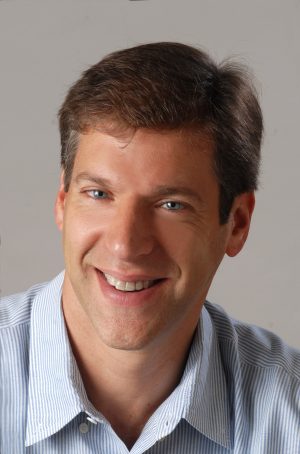 Daniel Kammen asserts that everything he has learned about communicating scientific research to a lay audience has been “by accident.” Yet Kammen, chair of the Energy and Resources Group at UC Berkeley who also holds parallel appointments in the Goldman School of Public Policy and the Department of Nuclear Engineering—is for all intents and purposes a master communicator to the press, government, and non-scientists in general.
Daniel Kammen asserts that everything he has learned about communicating scientific research to a lay audience has been “by accident.” Yet Kammen, chair of the Energy and Resources Group at UC Berkeley who also holds parallel appointments in the Goldman School of Public Policy and the Department of Nuclear Engineering—is for all intents and purposes a master communicator to the press, government, and non-scientists in general.
First, Kammen is not afraid of the mainstream media. He is a frequent contributor on the subjects of climate science and clean energy to The New York Times, The Guardian, and other news outlets and has appeared on 60 Minutes (twice), NOVA Frontline, and hosted the six-part Discovery Channel series “Ecopolis.”
Second, he is a prolific academic and government contributor, having authored or co-authored 12 books, written more than 380 peer-reviewed journal publications, testified more than 40 times to U.S. state and federal congressional briefings, provided governments with more than 50 technical reports, and served the State of California and U.S. federal government in expert and advisory capacities. In terms of academic appointments, Kammen is also is founding director of the Renewable and Appropriate Energy Laboratory (RAEL).
Third, Kammen has worked (and communicated) outside of university. He has served as the World Bank’s Chief Technical Specialist for Renewable Energy and Energy Efficiency and as the U.S. State Department’s Environment and Climate Partnership for the Americas Fellow and later as Science Envoy for President Obama and Secretary of State John Kerry. He also has founded or is on the board of over 10 companies.
At an InFEWS lecture at the Blum Center for Developing Economies on Nov. 14, Kammen argued that although many scientific researchers may loathe to translate their work for non-scientists, they need to learn how to do it—individually or preferably in teams, as working with the press and reaching government can be difficult.
“If you’re not intentional about how you’re communicating your science, what you’re saying is someone else should write your narrative,” said Kammen. “And generally, you don’t want someone else writing your narrative.”
Kammen gave the example of his research on corn-based ethanol. In the Jan. 27, 2006 issue of Science, he and his co-authors provided an analysis of six previous corn ethanol studies. By reverse-engineering a suite of models and studies, the team concluded that ethanol can be seen as renewable energy if the source of biomass is sustainable and that many important environmental effects of biofuel production are poorly understood. The first conclusion pleased the corn ethanol industry, especially when they read articles stating ethanol can replace gasoline with big energy savings. Other articles highlighted the problem of finding sustainable biofuel resources, such as organic urban waste. However, the main finding of the paper was that the transition from gasoline to ethanol would be worth it only if the ethanol could be produced not from corn but from woody, fibrous plants: cellulose.
For Kammen, the varied press reaction to his Science paper underscored the need to frame the discussion. In fact, he worked closely with Berkeley’s Public Affairs department on a press release to make the paper’s points clear.
“We then worked with the media as they came to us,” he said. “I went on 60 Minutes to clarify that cellulosal ethanol is the only one that is climate reducer. This effort paid off, as our paper was one useful element of a campus/LBL/University of Illinois effort that resulted in winning the $500 million grant for the bioscience industry.”
Kammen said another communications pitfall for scientific researchers is overemphasizing new results. As exciting as they are, he counseled, they can get taken as an end point. He referenced an Oct. 31 Nature paper that was rushed out to follow the publication of the “Global Warming of 1.5 °C” IPCC report. The researchers reported that ocean temperatures had warmed 60 percent more than outlined by the United Nations’ Intergovernmental Panel on Climate Change. However, this conclusion was proved incorrect by mathematician Nic Lewis, who is also a critic of the scientific consensus around human-induced warming. When Ralph Keeling, the coauthor of the Science paper, redid the calculations he was forced to admit the ocean warming calculation was vastly overstated.
Kammen may wring his hands over such science communications errors, but he is adamant there’s no such thing as science that’s too complicated to translate for a non-technical audience.
“You hear scientists say, I’m working on a really interesting, esoteric topic and hence I can’t communicate it in 90 seconds,” he griped. “I don’t believe that at all. If you can do some sort of the bumper sticker or elevator pitch of what you’re doing—you don’t know what you’re doing.”
Like many, Kammen feels overwhelmed by social media, and asserts he is not adept in the self-publishing platforms. Yet he has scored one major social media coup. On August 27, 2017, he resigned from his position at the State Department’s science envoy to protest President Trump’s comments on white supremacist violence, stating on twitter (@dan_kammen): “Your response to Charlottesville enables racism, sexism, & harms our country and planet.” Kammen’s letter had a not-so-subtle message: the first letter of each paragraph spelled out the word “IMPEACH.”
Kammen’s release of this acrostic-laden resignation was highly strategic. He posted it on Twitter at 6 am PT—so it would be read in multiple time zones that day—and he asked his friend with the largest Twitter following to retweet it. That friend was J.K Rowling, author of the Harry Potter series, who helped his message go viral, eventually logging 42,000 retweets and 120,000 likes.
Kammen is better positioned than many researchers to attract public attention because his field is what he calls “solutions science,” combining science and economics to solve problems of climate change. But no one can accuse him of not working around the clock to develop and communicate technological solutions to global warming. One of his favored tactics is easily understandable visuals. At Blum Hall, he presented a video rendering of ice cover reduction based on satellite images of the North Pole over almost 40 years.
“This kind of visualization gives you a theory-free picture of where we’ve gone,” said Kammen, adding: “For me, communicating with these visualizations are massively more useful than the scientific blocks.”
Words he finds trickier, though he is willing to appropriate others. He explained that he borrowed the term “green jobs dividend” from a U.S. Senate Committee meeting on clean energy chaired by Senators John Kerry and John McCain. And he admitted his word choice is not always the wisest, referencing the time he got behind the moniker “Berkeley First” for a national clean energy investment plan for property owners.
“This was poorly thought out. Nobody outside Berkeley wants to do what Berkeley does,” he said, explaining the program eventually was called PACE (Property Assessed Clean Energy), a term coined by a New York financier.
Among the questions from the audience at the Blum Center was one often asked: What to do about the clunker term “global warming”? Kammen admitted it’s been a communications disaster, as “global warming sounds like a good thing—rich people in poor countries make most of the world policy, and for most of the cities global warming sounds good.”
Still, Kammen believes climate change is the right term, even though “everyone in communications says it’s too nerdy. Change doesn’t have a direction, and climate is something that’s all around us. What we’re trying to say is that we are relatively well adapted to the world we live in today, but deviations from that are likely to be more costly than beneficial. That doesn’t work on a bumper sticker.”
Though Kammen has been disappointed by some of his press interactions, he is firm that the “press process” is the best way to interact with and influence government. He has come to that conclusion through his work enabling the approval of a $1.26 billion transmission project linking renewable energy resources in Kenya and Ethiopia and in communicating the need for a major transportation loan to China for the 10-fold expansion of electric vehicles.
“Governments don’t want the academic paper,” said Kammen. “In fact, if they say we like your vehicle policy for China, even if you wrote a paper with that exact title—they don’t want to read it and they’re not going to read it. They actually want you to write that press release and say, based on this paper, which was peer-reviewed, we recommend the following….”
The InFEWS program is supported by the National Science Foundation (infews.berkeley.edu ; DGE # 1633740).
October 2018
DOST— Fostering Early Childhood Development in India
By Veena Narashiman ’2020
Early years of childhood form the basis of intelligence, personality, social behavior, and capacity to learn and nurture oneself. Increasingly, child development researchers are also finding that brain development during the first eight years is the most rapid, with children who receive attention in their early years achieving more success in school.
Sneha Sheth (Berkeley Haas MBA ’2016) knew these facts, having designed international programs for women’s empowerment and education for Dalberg, Education Pioneers, and Teach For India. She understood that early education in India was often neglected due to high rates of poverty and illiteracy–and that the nation holds many of the 200 million children in developing countries at risk of not reaching their full potential.
“I met hundreds of mothers, who had never gone to school,” said Sheth of her time working in a Mumbai slum. “They were willing to do whatever it took to get their kids a great education, but they weren’t really sure how. They would often ask me, ‘Well, I didn’t go to school, what can I really do about this?’”
While pursuing an MBA at Cal, Sheth began to think about an education technology project that could serve low-income Indian parents. During the summer of 2015, she and Sindhuja Jeyabal, who was completing a master’s degree at the UC Berkeley School of Information, piloted DOST, meaning friend in Hindi.
Sheth and Jeyabal then turned to the Big Ideas student innovation contest for development and feedback. Their Big Ideas mentor, Anthony Bloome, a senior education technology specialist at USAID, encouraged their ambition to come up with a solution for early childhood development in India. Big Ideas allowed Sheth and Jeyabal to iron out their implementation plan. In May 2016, DOST won in the Mobiles for Reading category.
Soon after, DOST was named one of the Top Three Edtech Startups in 2016 by the Unitus Seed Fund, followed by an invitation to join Y Combinator. In 2017, the team returned to Big Ideas, winning third place in the Scaling Up competition. The nonprofit’s supporters now include the Mulago Foundation, the David Weekley Family Foundation, and the Chintu Gudiya Foundation, among others.
The path to creating DOST was iterative, said Sheth. “At first, we talked to parents about how those who can’t read can still have a lot of weight in early childhood education. We had to show parents that playing, singing, and talking with their kids was a form of education.”
Sheth and Jeyabal recognized a major challenge was getting busy families to come to DOST early education classes. “You can’t change behavior in one session, and you can’t see changes penetrate in a community in just one session,” said Sheth. Even if one parent was able to attend sessions—and it was often the mothers—DOST wanted to involve fathers, grandparents, aunts, and other extended family members in lesson plans. When the team was brainstorming ideas for a practical approach to this problem, they finally asked, What if we just call them?
Due to the widespread use of Nokia cellphones, Sheth and Jeyabal began to consider a technological approach to parent learning. Sending podcasts to parents, they realized, would allow DOST to serve many families and grow rapidly. Parents also wouldn’t need to make the tough decision of deciding between attending a parenting class or cooking dinner.
DOST began to develop 1- to 2-minute daily lesson plans and verbal activities as podcasts deliverable to parents’ phones, allowing busy mothers and fathers to integrate their child’s early development into their daily lives. The audio programs instruct parents to teach basic literacy and numeracy. The first audio program is 24 weeks long, and is targeted at parents of children who are two- to six-years of age. As of October 2018, there are 20,000 Indian caregivers using DOST every day, a figure that has grown 100 times in the last two years.
One of the first lesson plans featured how parents could speak to their children without intimidation. By trying a collaborative approach rather than a violent one, parents reported their children were more receptive to instructions and guidance. One of DOST’s most popular mini podcasts encourages mothers to make rotis in different shapes for dinner—fostering pre-numeracy skills at a young age.
To build awareness for DOST, the nonprofit has hired mothers from the communities it targets. “DOST Champions see the untapped potential in their own community and know how to convince their neighbors to join DOST,” said Sheth. “It’s also a plus to create employment in the areas we work in.”
Ultimately DOST’s mission is to provide uneducated parents with the resources to enable their children to excel. “Whether it’s by categorizing rotis as big or small during cooking or naming the colors in a sari,” said Sheth, “these kids will be more prepared for their future.”
InFEWS Fellows Take on Sustainable Development Goals
By Tamara Straus
The goal of the PhD is to do original research in a specific discipline. That means in-depth and often narrow inquiries that build on academic knowledge. But for many STEM and social science graduate students, the great draw of the PhD is developing research that can have wide societal benefit—in clean water or pollution reduction, for example—and be implemented through government or business.
Since 2017, the Blum Center for Developing Economies has been enabling graduate students to develop societal benefit research through the InFEWS—Innovations at the Nexus of Food, Energy, and Water Systems—program funded by the National Science Foundation. InFEWS provides fellowships and travel stipends for students whose PhD research aims to provide lasting environmental solutions and alleviate poverty in the world’s poorest regions. The program’s mandate is to train a new generation of interdisciplinary STEM researchers and practitioners who can improve the living standards of Americans and meet the United Nation’s Sustainable Development Goals.
The requirements are broad. InFEWS Fellows must address challenges at the intersection of food, energy, and water systems. Their research must take into consideration climate variability, water, and pollution, along with changing demographics in a world where the poor and rural have insufficient access to basic resources. To meet these challenges, InFEWS Fellows are asked to engage in interdisciplinary research activities and course work, including human-centered design and lean start-up approaches, as well as pursue immersive lab and field training. Students are also expected to gain experience in needs assessment, analysis of qualitative and quantitative data, and concept testing.
This year’s cohort of InFEWS Fellows includes 37 students from 13 schools and departments at UC Berkeley, including the School of Information, College of Natural Resources, Haas School of Business, College of Engineering, and Goldman School of Public Policy. Sixty five percent of the fellows are women and 25 percent are under-represented minorities, which is typical of STEM programs that address global challenges. In addition, 25 of the 37 fellows are also in the Blum Center’s Development Engineering program, which has similar goals in terms of training engineers who want to use technological innovations to address poverty.
Below are Q&As with four current InFEWS Fellows.
Sara Glade
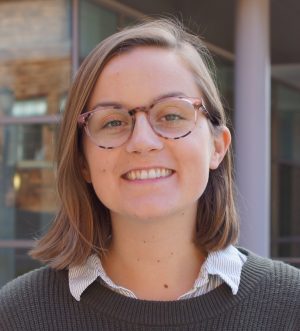 Sara Glade is a PhD student in Environmental Engineering whose InFEWS work focuses on drinking water treatment technology development and implementation.
Sara Glade is a PhD student in Environmental Engineering whose InFEWS work focuses on drinking water treatment technology development and implementation.
Why did you seek to become an INFEWS Fellow and Development Engineering student?
My exposure to Development Engineering began during my undergraduate career when I was introduced to the organization Engineers Without Borders. I became deeply invested in the chapter, working on a water supply project in Haiti and a bridge project in Nicaragua. My passion for water came to fruition in the field in Haiti, after seeing children walk miles to collect polluted water. Here I learned the potential of engineering and water to improve the quality of people’s lives, which inevitably drew me to be interested in researching water treatment technologies for disadvantaged regions.
At UC Berkeley, I have been part of many social impact driven engineering projects. In the course DE 200, I worked with Sanivation, a container-based sanitation company located in Kenya. In CE 209, I worked with Berkeley-based startup SimpleWater to survey rural communities in California with arsenic contaminated drinking water about their water and point of use treatment. I learned first-hand the challenges communities throughout the Central Valley and the U.S. face with drinking water contamination. This ignited a strong interest in using Development Engineering to work on U.S. water issues, which I carried into my research. All of these experiences, before and during Berkeley, ultimately led me to the Development Engineering program.
Throughout my time at Berkeley, I have also grown to better understand and appreciate the link between food, energy, and water systems, and this drew me to the InFEWS program. My current research has also pushed me to think critically about these connections as well.
Tell us about your current research.
My current research started in quite a unique way. A UC Davis professor visited a community in the California Central Valley, in Allensworth, and met several community members looking for appropriate arsenic treatment technology solutions. This professor then contacted my advisor, Ashok Gadgil, because the Gadgil Lab has over 10 years of experience working on a novel arsenic treatment technology called ElectroChemical Arsenic Remediation (ECAR).
On our first call with several community leaders, we were asked to help treat water on their farm for a livestock application. The development of ECAR at small scale on this farm site would be a unique opportunity for economic development in the community, for fresh food to be available nearby, and could also enable next steps of a demonstration plant and community treatment plant for drinking water. I knew this project would be perfect for my interests in U.S. water, treatment technology development, and implementation.
Thus far, I have conducted lab scale tests to understand parameters useful in designing the field trial, have developed design constraints unique to the U.S. context, have discussed the field trial design with our community partners, and have presented our work to a number of stakeholders, including local nonprofits. The next step of this work is to finish raising funds, and then implement and operate the field trial. Alongside the field trial, I plan to conduct interviews with community members to understand their perception of this new technology. Overall, I hope to increase knowledge around appropriate drinking water treatment technology development and implementation in small, low-income communities in the United States.
What are your long-term goals?
After my PhD, I would like to continue working on development and implementation of water treatment projects, either in the U.S. or internationally, and could see myself working in low-resource regions on projects that are in between basic science and commercialization. It seems amazing technologies and research that could serve the needs of disadvantaged populations sometimes get stuck in papers or at small scale. I hope to work on bridging this gap throughout my future career, with the hopes of bringing to fruition many technologies that otherwise would stay trapped in a text. I am also considering doing a policy fellowship after my PhD. From the work I have done on U.S. water thus far, I have become very interested in how policy can prohibit or enhance access to safe drinking water in affected regions.
Christopher Hyun
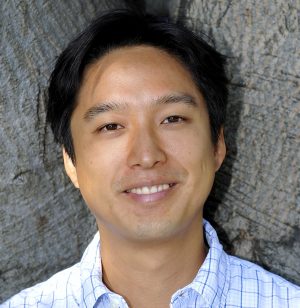 Christopher Hyun is pursuing a PhD from the Energy and Resources Group with a designated emphasis in Development Engineering; his InFEWS work focuses on water and sanitation planning.
Christopher Hyun is pursuing a PhD from the Energy and Resources Group with a designated emphasis in Development Engineering; his InFEWS work focuses on water and sanitation planning.
What drew you to the InFEWS Fellowship?
What drew me to InFEWS is its community of learning. I’ve been working in the development sector for over a decade, gaining experience in income generation, capacity building, and water- and sanitation-related research. I’ve had the privilege of working with environmental organizations and institutions on water and sanitation, such as the Centre for Science and Environment, Banaras Hindu University, IIT-Bombay, and CDD Society in India. Sanitation is not often considered an important sector at the nexus of food, energy, and water, although FEW systems thinking has the potential to help solve sanitation’s challenges; so this is an opportunity for me to learn from other scholars in the InFEWS community. Also, I am currently observing a sanitation revolution occurring in the development sector about which I am excited to share with the community as innovations unfold, integrating with an increasing number of FEW systems. Furthermore, I enjoy contributing to discussions about the relationship between technological innovation and social structures as well as general social and governance perspectives of FEWS.
What are your overall research interests?
I recently completed a research project, working with water valvemen to help improve intermittent water systems and partnering with NextDrop and the Bangalore Water Supply and Sewerage Board. As I continue with my PhD research, I hope to uncover pro-poor sanitation solutions that have long-term impacts on food, energy, and water systems in urban contexts of low- and middle-income countries. I focus on the governance of sanitation in urban India, following decision-making by international funders and government officials as well as by the engineers who design low-energy intensive technologies (such as biogas digesters) and the local farmers who reuse the wastewater and fecal sludge. I am particularly interested in capacity building for innovative sanitation solutions and how capacity building is conceptualized and implemented across scales of governance in sanitation.
Why is capacity building so important in your research?
Local officials and engineers often don’t have the capacity to make design decisions, and farmers may oppose new sanitation systems as they would rather obtain fecal sludge directly (but unsafely) from septic trucks. In my research, I aim to understand such local dynamics and to uncover ways to mitigate the gaps between scales of sanitation governance. Capacity building is often considered a solution to such challenges. I partner with the Consortium for DEWATS Dissemination (CDD) in India, internationally recognized for innovations in low-cost sanitation systems, reuse, and capacity building. I have worked closely with CDD, designing and implementing sanitation training focused on CDD’s “toilet to table” philosophy. In research, I utilize an ethnographic approach, conducting observations and interviews with stakeholders, civil society organizations, and government officials. My goal is not only to uncover how capacity building can be more effective, but more fundamentally how capacity building is being defined and implemented, including by whom and for whom. Uncovering capacity building not only informs development practice but it also helps us understand how and why technological transitions may (or may not) happen, which I believe is at the heart of both Development Engineering and InFEWS.
George Moore
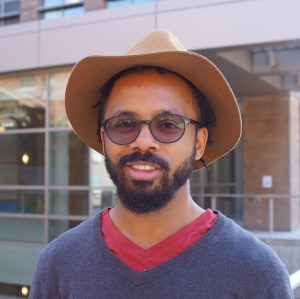 George Moore is a Mechanical Engineering and Development Engineering doctoral student whose InFEWS research focuses on food, energy, water systems with the Pinoleville Pomo Nation of Northern California.
George Moore is a Mechanical Engineering and Development Engineering doctoral student whose InFEWS research focuses on food, energy, water systems with the Pinoleville Pomo Nation of Northern California.
What drew you to research on sustainable energy and water resources?
My first opportunity to work on InFEWS-related research came during my summer research internship at the University of Michigan in 2015. There, I studied a sustainable manufacturing project for an underdeveloped community in Uganda. Reflecting on my own experience growing up as a minority in the rural South, this project made me feel personally connected and empathetic towards underserved communities globally. I read about several case studies where organizations or researchers engaged with communities in developing countries and the original plan of action had to be altered to accommodate for context and cultural values that could not have been foreseen. Although this seems obvious to me now, I was surprised and grew curious about the methods used to design for communities like these in ways that would precipitate not only tangible goods, but also sustainable practices related to the handling of primal needs like food, water, and energy resources.
How did you come to work with the Pinoleville Pomo Nation (PPN) of Northern California?
As a PhD student working with Professor Alice Agogino and two other graduate students, I helped plan field research conducted at the PPN’s annual Big Time festival in Summer 2017. There, we were able to observe and engage with the PPN community in their own sacred environment. In addition, we provided an exercise that encouraged PPN members, and others in attendance, to articulate their opinions of the current problems within the PPN community as well as potential solutions to those problems. We offered five suggestive themes to categorize these responses, in which most of them cater to the vision of the InFEWS initiative: Food, Water, Energy, Education, and Well Being.
Since then, we have continued to work with PPN community leaders to establish how to progress with a project that would align the needs of the PPN community with those of our research goals. The PPN community has expressed interest in STEAM (Science, Technology, Engineering, Art, and Math) Education, and over the past year has started an Academic Success Center, invested in a makerspace, and finished the second year of its annual STEAM summer camp. With this in mind, we have re-framed our research scope to emphasize InFEWS themes within the context of STEAM education and the design of culturally sensitive makerspaces.
What are your long-term goals?
I’m genuinely excited to be working on a project that aligns so much with my personal and academic goals. I think that success for the PPN project requires our roles as facilitators to become obsolete—creating lasting change that will continue long after our presence is removed. Also, we hope that whatever is produced from this collaboration upholds the values of the community. To achieve that goal, we have been careful to minimize the ideas and subtle influences that we might impose as researchers.
Lorenzo Rosa
Lorenzo Rosa 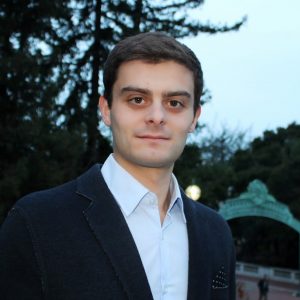 is a PhD candidate in the Department of Environmental Science, Policy, and Management whose InFEWS research investigates where water scarcity may limit energy and food systems.
is a PhD candidate in the Department of Environmental Science, Policy, and Management whose InFEWS research investigates where water scarcity may limit energy and food systems.
How have your academic interests informed your InFEWS work?
My training is in engineering, hydrology, and energetics. Before pursuing a PhD at UC Berkeley, I received master’s and bachelor’s degrees in Environmental Engineering from Polytechnic University of Milan, Italy and studied abroad at KTH Royal Institute of Technology and the University of Virginia. Since 2017, I have been awarded an Ermenegildo Zegna Founder’s Scholarship. Over the years, while studying the chemical processes of engineering as they relate to the environment, I noticed that the biggest environmental polluters are the food and energy sectors. This got me thinking I should focus on energy and food systems and hydrology to develop a framework using water balance.
Why focus on water balance?
An often-overlooked aspect of water requirements for economic activities is that water is a limited resource and some of these activities could be constrained by water scarcity to the point of limiting the development of some assets. For instance, lack of water resources can impede the extraction of some minerals, the generation of electricity from coal fired and solar power plants, the production of biofuels, or the closure of the yield gap in agricultural land. In all of these cases, water scarcity might be a limit to these activities.
While substantial additional water will be required to support future food and energy production, it is not clear whether and where local freshwater availability is sufficient to sustainably meet future water consumption. The extent to which irrigation can be expanded within presently rain fed cultivated land without depleting environmental flows remains poorly understood. It also remains unclear where and to what extent new water demanding energy projects, such as post- combustion CCS and hydraulic fracturing, might be constrained by local water availability.
How does your research on water scarcity differ from other assessments?
Previous efforts have assessed the water footprint of energy and food systems from the life cycle assessment perspective, focusing on a comprehensive accounting of all water costs associated with production and processing, but without examining the availability or source of the required water. The novelty of my research consists in the assessment of the impacts of energy and agricultural systems on the local water balance using a hydrologic approach, identifying the regions in which new forms of potential water consumption from the energy sector could compete with agriculture and other human activities, and areas in which water demand from energy and/or food systems could not be sustainably met because of water scarcity.
I believe neglecting water availability as one of the possible factors constraining the development of economic activities may lead to unaccounted business, social, and environmental risks. By adopting a hydrologic perspective that considers water availability and demand together, my aim is that decision makers, investors, and local communities can better understand the water and food security implications of energy and agricultural production while avoiding unintended environmental consequences.
Tell us about your dissertation work.
My dissertation will provide a quantitative framework to make informed investment decisions involving natural assets that are susceptible to water risks. As such, I am currently investigating where water scarcity may limit hydraulic fracturing and food production–thus creating risks for local populations and investors. My goal is to identify global hotspots of where human activities compete for water allocations, potentially creating social, environmental, and economic risks. My belief is that the limited understanding of the potential impacts of human activities on water resources prevents the implementation of a sound management plan for a sustainable human development. For example, we are depleting ecosystems in rivers because we are taking too much water from them. The classic example is the Colorado River. It runs dry and the water does not reach the ocean. Another example is non-renewable ground water mining. Water that was stored millennia ago is being used unsustainably in India, Pakistan, and Central California, among other places.
They key is understanding where we can increase water production, because we know the population is going to reach 9.5 billion by 2050. We’ll need to add 50 percent of current water production to feed all these people. And so we’ll need to figure out where we can (and cannot) produce more food with water in a sustainable way. In other words, we’ll need to move production where the water is or swap crops or use less water-intensive crops or transport water—so that we can increase food production for 2.8 billion people.
The InFEWS program is supported by the National Science Foundation (infews.berkeley.edu ; DGE # 1633740).
Multiplicity Not Singularity: Ken Goldberg on the Future of Work
By Lisa Bauer
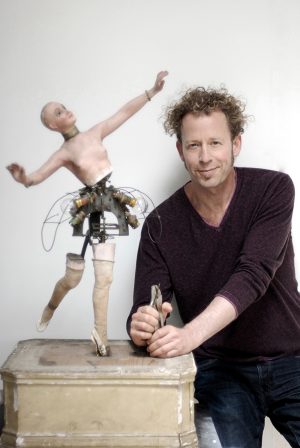
Robotics Professor Ken Goldberg is the first to acknowledge the public anxiety about what automation and AI might mean for future jobs. Singularity—the hypothesis that AI will become increasingly powerful, decimating professions and remaking civilization—is becoming a mainstream concept. All one has to do is read news headlines about robot-driven factories, watch movies like “Ex Machina,” and listen to public figures like Elon Musk stating that AI poses our greatest existential threat.
Yet at a recent Blum Center Faculty Salon on the Digital Transformation of Development, Goldberg, UC Berkeley’s Department Chair of Industrial Engineering and Operations Research and the William S. Floyd Jr. Distinguished Chair in Engineering, argued that such fears are exaggerated. He is among computer scientists and roboticists who believe there is inadequate evidence to support the mass unemployment theories, such as the often cited Oxford University study that estimated 47 percent of U.S. jobs are at risk of computerization.
Rather than replace human jobs, Goldberg believes artificial intelligence and robots will help to diversify human thinking. And rather than worry about a robot apocalypse, he urges a focus on what he calls Multiplicity, in which diverse combinations of people and machines work together to solve problems and innovate.
“Multiplicity is not science fiction. It’s a reality that is already a part of our daily lives,” said Goldberg.
To prove his thesis he references Google search, Amazon and Netflix’s personalized consumer recommendations, Waze navigation, and spam filtering—examples of machine learning that lead to rapid, wide-scale results. One of Goldberg’s points is that the public has long held a fascination with “creative overreach” and mechanized monsters (e.g., Pygmalion, Frankenstein, the Terminator). Yet our greatest AI successes so far have not involved walking, talking robots or even autonomous vehicles—they have involved machine learning for games, such Google DeepMind’s mastery of chess. This is because machines excel when operating in a controlled information system; whereas navigating space is dynamic and uncertain.
Goldberg said the race to develop fully autonomous vehicles exemplifies this misunderstanding. While the public has been led to believe that autonomous cars are just a few years away, engineers and computer scientists say there are many barriers to overcome because driving is not a game with set variables. It involves navigating double parked trucks, weaving bikers, kids playing, and shade and light obscuring vision. A computer program is currently not capable of responding to these myriad, unpredictable situations. Indeed, Goldberg argues we are just as likely to be headed for an “AI Winter” rather than a near future with driverless cars.
Goldberg believes that automation will both eliminate and create new jobs. Quality of work may be improved by decreasing the amount of time spent on mundane tasks. One example of this is the ATM machine, which was initially met with outcry from bank tellers who believed their jobs were doomed. Instead, the lower costs of running a branch allowed banks to open more branches and expand services, ultimately increasing the number of overall jobs while also creating new types of jobs in sales and customer services.
“People are claiming that AI will steal truck driving jobs,” said Goldberg. “but the fact is we have a shortage of truck drivers and there’s demand for more. Technology will make their jobs better.”
Proceeding further, Goldberg compared automation anxiety to anti-immigrant politics, quoting Oliver Morton’s observation that “robots are immigrants, from the future.” Historically, job losses have been blamed on immigrants; today said Goldberg, robots are the latest scapegoats.
“We need a shift in mindset, rather than ‘us against the machines,’” emphasized Goldberg. “let’s focus on ‘us with the machines,’ and explore the potential for machine collaboration—how the combined strengths of diverse humans and diverse machines can enhance the human experience.”
“Cognitive Diversity, AI & the Future of Work,” a study co-authored by Goldberg and Vinod Kumar, CEO of Tata Communications, reports that much of education today emphasizes conformity, obedience, and uniformity, while the skills of tomorrow demand creativity, diversity, and flexibility. Most of the 120 global business executives interviewed for the study believe AI will increase the number of roles in the workplace and have the potential to enhance human collaboration and cognitive diversity within groups. Among the report’s conclusions is that what we need is not new forms of welfare and unemployment, but a shift in education that will better facilitate job transitions.
Goldberg said advances in agricultural machinery at the beginning of the last century prompted a need to train people with non-farming skills, creating what would become the “High School Movement.” The impact was huge: in 1910, only 10 percent of Americans graduated from high school; by 1950, 80 percent held a high school degree.
Given this precedent, Goldberg proposes a “Multiplicity Movement” to foster uniquely human skills that AI and robots cannot replicate: creativity, curiosity, imagination, empathy, human communication, diversity, and innovation. He recommended the U.S. reinforce creative and social skills in high schools and universities, so that Americans are in position to leverage diverse machines alongside diverse groups of people to amplify intelligence and spark high impact problem solving.
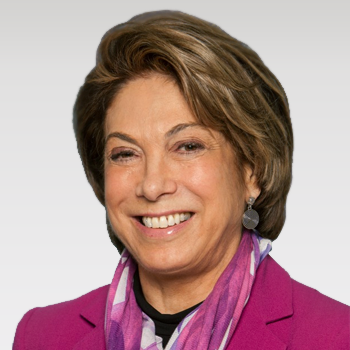
In response, Laura Tyson, Blum Center chair and interim dean of the Haas School of Business, expressed greater apprehension about the effects of artificial intelligence on the future of work. She emphasized that each country and region will experience the digital transformation differently, according to factors like local policies and politics, demographics, and educational attainment. Tyson, who has years of policy experience in the U.S. federal government and international organizations, pushed the group to think more broadly—not just in terms of the future of jobs but also in terms of what she called the “future of livelihoods.”
“Individual workers should not have to bear the costs of transitions from jobs that are eliminated by technology to jobs that are created by technology,” she said. “We need to ensure that livelihoods are not compromised in the transition, and that we are counteracting rather than reinforcing economic inequality.”
Tyson contrasted concerns about the effects of AI on the future of work in the U.S. and other developed countries with the enthusiasm for AI in China where “automation anxiety” hardly exists. As a result of the largest and fastest industrialization and urbanization in history, China has a growing and thriving middle class that is heavily reliant on new technologies. Based on the rapid growth in living standards over the past 30 years, Chinese citizens expect that they will continue to benefit from new AI-based technologies.
The substitution of intelligent machines for low-cost, low-productivity workers poses the greatest challenge to the future of livelihoods in Africa. Such machines threaten the strategy of rapid development through industrialization based on low-labor costs and labor arbitrage. By 2050, Africa’s youth population is estimated to increase by 50 percent to 945 million. The continent will have the largest number of young people in the world. What kinds of work will they do? What kinds of livelihoods will be possible? What will be the place of African countries in global trade and global supply chains when the availability of comparatively cheap labor is no longer a competitive advantage?
Juxtaposing the youth explosion in Africa, the aging demographic patterns in Japan and Germany, the U.S.’s skills and wealth gap, and the success of China in rapid industrialization and global trade, Tyson posed several questions to consider: How will we ensure that all countries and communities benefit from AI and automation? How do mid-career professionals adjust if their job becomes obsolete? How will mid-career professionals gain new skills? Who pays for it? How do we prepare diverse populations for smooth economic and labor transitions?
Tyson advocated that nations develop comprehensive educational and development strategies that support the livelihoods of their citizens—and that share the benefits of intelligent machines broadly.
Autodesk Foundation CEO Lynelle Cameron on Courage, Creativity, and Critical Thinking
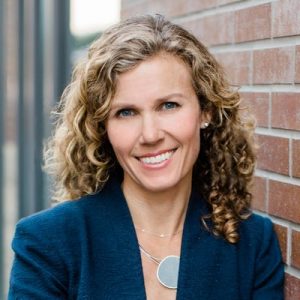
Lynelle Cameron (Haas MBA ’01) has over 20 years of experience helping companies capitalize on market opportunities related to sustainability and climate change. Cameron is currently Vice President of Sustainability at Autodesk and CEO of the Autodesk Foundation. She leads a team transforming the design, manufacturing, and construction industries to capitalize on the business opportunities of a low-carbon economy.
Under her leadership, Autodesk has won numerous awards for sustainability, climate leadership, and philanthropy. Through the Autodesk Foundation, Cameron has invested over $15 million in entrepreneurs and innovators who are designing a sustainable world for billions of people. Cameron is proving that companies can do well by doing good—in ways that strengthen brand reputation, recruit and retain the next generation of employees, and deliver financial results to shareholders.
She sat down with the Blum Center to talk about sustainability, global challenges, and 21st century skills.
How has your perspective on sustainability evolved during your tenure at Autodesk?
Surprisingly, my perspective on sustainability has remained remarkably consistent over the years. As I wrote in a California Management Review article back in 2001 (vol 43, no. 3 Spring 2001), “Sustainability has become a strategic imperative for all businesses in the 21st century. It has become a fundamental market force affecting long-term financial viability and success.” This is as true today as it was back then.
My understanding, however, of what it would take to get the private sector toshare this view and to embrace the business opportunity that sustainability provides, has definitely evolved. I thought by now sustainability would be regarded in the way quality is—table stakes for every business everywhere. And yet, with each passing year, the stakes become higher and the urgency greater.
When I started leading sustainability teams at HP and later at Autodesk, sustainability was barely viewed as a thought leadership opportunity, much less a business driver. Over the years, this has slowly started to change. Companies like Autodesk are reporting about sustainability and climate change in their 10-Ks, embracing the UN sustainable development goals and setting bold targets, setting up board committees on sustainability, and tying executive compensation to sustainability performance. Employees are voting with their feet—joining companies or leaving them based on sustainability performance. This is all progress worth celebrating. And yet, we are far from where we need to be as a global business community.
What are the skills needed for 21st-century changemakers? How can universities best enable those skills?
In a book called 21 Lessons for the 21st Century, Yuval Harare talks about the four Cs that will be needed to succeed in the age of automation: critical thinking, creativity, communication, and collaboration. As automation technology increasingly handles certain tasks, these distinctly human skills are vital. But there’s a fifth one that needs to be added: courage. Courage to look into the future and be honest about what we are up against. Courage to talk about climate change even when people don’t want to talk about it. Courage to be a leader willing to take risks and listen to crazy or unpopular ideas, wherever they may come from.
I am fortunate to have had mentors, advocates, and allies at every stage of my career propelling me forward and boosting my confidence despite the obstacles in my way. During my time at Haas, I benefited from an environment where ideas are explored and nurtured. As a student, I had a professor who agreed to oversee an independent study to develop a business plan for the Center for Responsible Business, which is celebrating its 15th anniversary this year. To pay it forward, I try to pay extra attention to other nascent ideas, and create conditions for them to take root—just as others did for me.
Universities have a vital role to play in nurturing both people and ideas and equipping the next generation with the adaptability, resilience, and stamina to make the world a better place for billions of people.
At the Blum Center, we have documented that when university-based engineering projects are geared to social impact, more women and underrepresented minorities get involved. Have you seen similar trends at the Autodesk Foundation or elsewhere?
Yes, your findings are consistent with my experience at Autodesk. As an example, the Autodesk Foundation has more than 40 organizations in our portfolio and close to 50 percent of them are led by women or have a woman on the founding team. These leaders bring deep sector knowledge across a broad spectrum of industries—from emerging technologies like AI and robotics, to the architecture, construction, and manufacturing fields.
Similarly, we offer an internship program that matches students who have design and engineering expertise with impact-driven organizations in our portfolio. In our most recent cohort of interns, more than 80 percent were women or minorities. Women seem to be drawn to deliver positive impact to the world and pursue careers that allow them to do so.
In contrast, only 9 percent of the construction workforce is female, and a recent study of the top 100 architecture firms showed that only three were led by women. As more companies recognize the opportunity to align their business with solving important global challenges, I believe women will be drawn to the field and recognize engineering and related industries as wildly impactful career paths.
What are some of the most impressive impact design projects you’ve seen in recent years?
This is always a tough question because these days there are many people using their talents and skills to create positive impact. The first that comes to mind is WeRobotics. They’re using robots and drones to deliver snake anti-venom to remote villages or to drop sterile mosquito nets in the rainforest to fight Zika. They also train students on robotics and are inspiring young leaders to solve important problems while giving them employable skills.
Build Change is another one. They are adopting the latest technologies to design and build disaster-resistant homes and schools. Not only are they rebuilding after disasters like the 2015 earthquake in Nepal, but they are also working quickly to prevent future disasters by working with local communities to improve building codes in disaster prone regions of the world. Their teams of designers and architects are using VR and automation to dramatically speed up their ability to retrofit homes and help communities prepare for when disaster strikes.
Every organization in our investment portfolio from Village Capital to Kenya Climate Innovation Center is creating positive impact; I invite you to learn more about them at www.autodesk.org.
For students interested in infrastructure, architectural, and engineering software and the built planet what are the bright spots of the future? What do they have to look forward to?
Despite the global challenges we face, and the increasing urgency of these challenges, I remain an optimist. I am confident that as humans we can and will solve today’s challenges, although it will take a radically different approach than what we’ve used to date. When we look out into the future, we see that in 2050 there will be 10 billion people on Earth, with most living in cities and more than half enjoying middle-class lifestyles. It will require twice as much energy to power these lifestyles. While this is daunting, it is also the most important design challenge of our time.
And the good news is that I believe we have the technology today—with ever-increasing levels of automation and machine intelligence, to provide humans with the knowledge to design and make more things for more people. With sophisticated automation technology, we can now handle complex systems to design and make everything better and with a lot less negative impact on the planet. With computers now as our design partners, we have collaborative intelligence that will be necessary to change the trajectory we are on.
But it will take a new mindset—one overflowing with courage, creativity, and critical thinking to leverage automation technology in a way that ensures we design a better future for billions of people.
-Tamara Straus
Computer Science Has the Power to Impact the Lives of the 99 Percent
By Divya Nekkanti
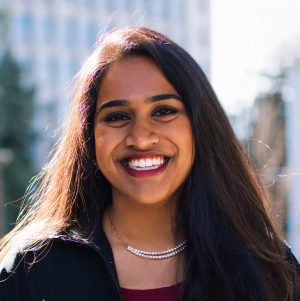 During high school, I looked unquestionably at technology leaders like Bill Gates and his wife Melinda, whose philanthropic foundation aimed to solve every apparent misfortune in the Global South. Even more, I found solace in the “giving back” days that Silicon Valley tech companies employed as a fulfillment of their corporate social responsibility.
During high school, I looked unquestionably at technology leaders like Bill Gates and his wife Melinda, whose philanthropic foundation aimed to solve every apparent misfortune in the Global South. Even more, I found solace in the “giving back” days that Silicon Valley tech companies employed as a fulfillment of their corporate social responsibility.
But increasingly, no matter where I look–in the world, in my community, within myself–tech and development are misaligned. There seem to be two mutually exclusive avenues of engaging with the world–innovating or giving–the only overlap for which involves donating money to admirable causes or engaging in occasional volunteer service. This dichotomy between the fast-paced, disruptive tech world that doesn’t afford engineers the time to fully understand the complexities of social challenges and the slower-moving development sphere, where the redundancy of approaches and lack of human, financial, and tech capital hinder growth, have become more and more apparent to me in my experiences at Cal.
Perhaps this dichotomy was once not so strong, but as an Electrical Engineering and Computer Science (EECS) major today there’s a very distinct path you follow. You take onerous math and programming classes, cease at nothing to get accepted into the engineering or business consulting organizations that flood Sproul Plaza in the semester’s first few weeks, and then embark on a toxic pursuit of software engineering internships at Facebook, Google, Microsoft, Salesforce, Amazon, etc. You attend every info session, stand in hour-long lines to talk to a single recruiter, and apply to hundreds of companies without distinction as to why–all because the sole purpose of your “technical” education is to work at the biggest, most profitable software company in the Valley.
Application of knowledge becomes fixated on the destination rather than the journey, and despite going to a school as economically and experientially diverse as Berkeley, you get so lost in the allure of free T-shirts and food, the glitz and glamour, that social problems–even at the campus level–go unnoticed. Despite having few requirements outside the EECS major, the exhaustion from technical courses prompts you to deliberately pursue humanities courses that offer the highest average grade and lowest workload, rather than taking classes that actually pique your interest.
Disillusioned by this herd mentality and eager to explore a multidisciplinary Berkeley education, I decided to pursue a minor in Global Poverty & Practice. Taking on this minor was the best decision I made at Cal, as it is affording me an evaluative lens not only to examine determinants of poverty, but for the first time to critically analyze the bubble I have been living in for my entire life in Silicon Valley. A productive hiatus from my homogenous computer science courses, GPP is allowing me to daily interact with students from a broad array of majors and backgrounds, whose perspectives challenge my own and elevate every classroom discussion.
Yet despite the minor’s longstanding diversity, I see few engineers, even fewer computer scientists, in my GPP classes. At the same time, across campus I see few engineering and computer science students willing to confront the economic misfortune and inequality of access that exist beyond Soda Hall. With my eyes more open than ever been, I can now critically assess a variety of complexities: the tax evasion benefits and occasional alternate agendas behind philanthropic donations; the dependencies that result from inconsistent foreign aid; and the millions of laptops donated by the tech community’s One Laptop Per Child program, which never reached children in need.
Unlike the abundance of engineering courses that posit innovation must be accelerated to be disruptive (thus often fabricating problems to “solve” and oversimplifying ones that already exist), GPP courses are making me careful about my language, as I “practice” how to effectively address people in poverty (rather than naively think I can “serve” them).
Never anticipating the ability to reconcile my passions for tech and development, last summer I intentionally took on two very different internships: one with an NGO that focuses on education, economic empowerment, and equality for women and girls in developing regions; and the other an analytics consulting company.
At the NGO, I actively tried to refrain from imposing my software skills, as I was wary of oversimplifying the problems the nonprofit inwardly faced and outwardly worked on with redundant tech solutions. Yet day after day, the need for tech internally to scale the organization and externally to enrich the organization’s education programs, felt glaringly critical.
My most surprising discovery was the NGO’s high turnover, which appeared to engender bottlenecks like lack of data standardization. As employees came and went on their own volition, they stored years of donor and program information on different online services, in independent accounts, and with inconsistent formats. The irregularities on this scale of data made communication with donors and tracking of scholarship students nearly impossible, with half the incoming mail consisting of emails undeliverable as addressed. Seeing as the NGO was primarily funded by donors, the gravity of mismanaged data heightened by the day.
Even more of a hurdle was the lack of technology for educational programming and outreach. While the organization received Chromebook donations from Google, low electricity in the areas where the NGO work prevented deployment of the laptops. And while the girls finishing high school requested technical curriculum in robotics and web development, there was no one with the bandwidth to structure the programs. Meanwhile, in my second internship at the analytics consulting company, the resources seemed endless. If I didn’t like the size of my Mac, with a few clicks I could instantly order a new one. Unlike at the NGO, where I knew the faces and names of the women my work was directly affecting, working on software projects at a large tech company felt like coding in a black box. I was assured there were huge companies on the other end, transforming their businesses with the firm’s services, but my role in delivering this value was largely ambiguous and concerns were cursorily dismissed.
It was only during my practice at the nonprofit that I began to view challenges of sustaining an NGO and achieving development goals as technical opportunities. Sourcing data from all accounts, I wrote scripts to parse CSVs and standardize entry formats, transitioning the entire organization onto Salesforce’s nonprofit success pack for centralized donor and program management. I researched solar chargers and the historical reception of robotics and web development curricula in the NGO’s target regions, wrote cost/benefit analyses, and developed technologies for later deployment in schools.
With every task I completed and every proposal I pursued, I realized how invaluable technology in the social sector has the potential to be, especially in streamlining internal processes and scaling external facing projects. Connecting the two disparate dots in my life, I have felt fulfilled and inspired. I have realized innovation isn’t solely synonymous with the next iOS update, computer science has the power to impact the lives of the 99 percent, and the “technical vs. nontechnical” mentality we unconsciously employ fails to represent the very multifaceted and interdisciplinary approaches requisite in development.
As an engineer, I have gleaned that it is possible to transcend the stereotypical boundaries of a traditional tech job, that it doesn’t take the philanthropic capital of a billionaire to change the world, and most importantly that I don’t need to compromise my technical background to alter paradigms in the development sector. Instead, I can actionably address the assemblage of social issues that keep me up at night with the skills I learn during the day.
Divya Nekkanti ’20 is a UC Berkeley Electrical Engineering & Computer Science major and a Global Poverty and Practice minor from San Jose, California.
Can There Be A National Security and Development Agenda for the U.S.? Michael Nacht at the Blum Center
By Tamara Straus
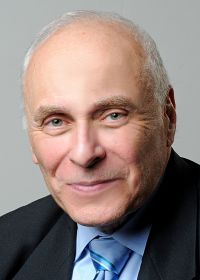 On October 10 at the first Blum Center Faculty Luncheon devoted to “Digital Transformation of Development,” Michael Nacht, the Thomas and Alison Schneider Chair in Public Policy, presented on “The Nexus of National Security, Diplomacy, and Development”—and gave a sober assessment of what that nexus might produce under the Trump administration.
On October 10 at the first Blum Center Faculty Luncheon devoted to “Digital Transformation of Development,” Michael Nacht, the Thomas and Alison Schneider Chair in Public Policy, presented on “The Nexus of National Security, Diplomacy, and Development”—and gave a sober assessment of what that nexus might produce under the Trump administration.
Nacht, who has served three tours of duty in government, most recently as Assistant Secretary of Defense for Global Strategic Affairs (2009-2010), provided an overview of government investments in the defense and development sectors. He reminded the group of Blum Center-affiliated faculty that the research which led to the atomic bomb was entirely government funded and led through national labs, including Lawrence Livermore National Lab.
“Thinking about it now years later,” said Nacht, “the community that makes up Lawrence Livermore National Lab understands things have really changed. There has been a proliferation of technologies and the vast majority of the innovative work is being done by the private sector. In fact, 85 percent of the research and development in this country is being funded by the private sector, not the government. It has spillover effects, not just in national security, but in development.”
Nacht was referencing a 2018 LLNL book on this shift he co-edited entitled Strategic Latency: Red, White, and Blue—Managing the National and International Security Consequences of Disruptive Technologies. The book looks at the implications of artificial intelligence, bioengineering, and other technological advances and underscores the consequences of disruptive paths are never straight. “We appreciate the seeming contradictions that can lead life-saving technologies in unintended negative directions, or prompt military technologies toward peace and prosperity through spinoffs or war-avoiding defenses,” Nacht and his co-editor Zachary Davis write in their introduction.
Yet Nacht has become a pessimist. He said that national security and international development interests don’t have much current geopolitical overlap. That is because national security interests are focused on Russia, China, Iran, North Korea, Islamic terrorism, cyber threats, and space-related work—and international development interests are focused on areas of high poverty, particularly Sub-Saharan Africa and Southeast Asia. “Really, the only two [developing] countries that transcend to the national security community are India and Iraq,” he said.
Also, Nacht is adamant that the current presidential administration is making defense, diplomacy, and development intersections unlikely because of what he called “the Trump team’s tremendous rejection of multilateral instruments.” He added: “There may be outright hostility in trying to apply national security interests to international development interests.”
Nacht did point out the Department of Defense under former Secretary of Defense Ash Carter (2015-2017) focused on strengthening ties between the DoD and the tech community. In August 2015, DoD established the DIUX, the Defense Intelligence Unit Experimental, with headquarters in Mountain View, to help the U.S. military make faster use of emerging commercial technologies, promote joint appointments, and imbue the defense department with a more entrepreneurial culture. Nacht said those efforts have not ceased, but it is unclear whether they are, or can be, a priority under Secretary of Defense James Mattis.
Still, Nacht pointed out that we will continue to see areas of confluence between defense, technology, and even development, especially in academia. He cited the example of UC Berkeley Bioengineering Professor Jay Keasling, whose research on the metabolic pathways inside cells led to a semi-synthetic version of the antimalarial drug artemisinin, which has driven down the cost of treatment and saved lives in Sub-Saharan Africa, creating greater equity and stability.
Yet Nacht expressed concern that new technologies, particularly AI and machine learning, could devastate the developing world. Citing a September 17, 2018 Bloomberg article on the subject, he said China has been able to leverage its large population and low costs to build a manufacturing sector that is producing better and more technology-intensive goods—while India, with its large English-speaking population and low costs, has become a hub for outsourcing low-end, white-collar jobs in fields like business-process outsourcing and software testing. Now, however, with AI’s accelerating automation of factories and customer service, corporations will bring many of these jobs back to where they are based, leading to a potentially explosive crisis.
“It’s a complicated pattern,” said Nacht. “Using technology to improve lives sometimes works and sometimes doesn’t.”
At the same time, Nacht noted that China’s investment in African and Latin American infrastructure in exchange for natural resources is a phenomenon that the U.S. cannot afford to ignore, especially as China does not proffer democracy building, human rights, or other political carrots as a condition for investment. This purely economic transaction, Nacht said, is one that the Trump administration might follow, ending decades of foreign policy initiatives.
Nacht concluded that the U.S. needs more strategic interaction between its economic and foreign policy positions in developing countries, but said reading the Trump administration’s tea leaves in this regard is next to impossible.
Among the discussants to respond to Nacht’s presentation was Joshua Blumenstock, assistant professor at the School of Information and director of the Data-Intensive Development Lab. His research lies at the intersection of machine learning and development economics, and focuses on using novel data and methods to better understand the causes and consequences of global poverty. Blumenstock noted that resource challenges arising from climate change should bring together the national security, technology, and development communities. But that the cultures of these communities are quite distinct and often at odds. He would like to see more efforts like DIUX to find commonalities between the communities.
Alice Agogino, professor of mechanical engineering and the Blum Center’s education director, said that one research effort combining climate change, development, technology, and national security is the center’s InFEWS (Innovations at the Nexus of Food, Energy, and Water Systems) program, supported by the National Science Foundation. InFEWS recognizes that food, energy, and water systems are under increasing stress, and it is thus becoming imperative to integrate social, ecological, physical, and built environments to meet growing demand for food, energy and water in the short term while also maintaining appropriate ecosystem services for the future. The Blum Center’s program is supporting graduate students working in these systems and helping them master interdisciplinary skills to create research that can be transferred out of the lab and into the field. “In essence,” said Agogino, “we are already supporting the very people who can serve at the nexus of national security and development. We call them Development Engineers.”
Brad DeLong, the Blum Center’s chief economist, ended the session with a long view of the history of war. Bringing the group to the present times, he said: “Now we find ourselves in a world with many security threats to us and to others, with a military that does not have a history to deal with the threats we face and the missions it is going to be asked to undertake. To amplify our problems, we have little idea about the form that the social practice of war will take in the 21st century. We do not expect to see the industrial total wars, the national liberation wars, the imperial little wars that we saw in the 20th century. But what will we see? What kind of U.S. military would best deal with what we are likely to see? And how can the U.S. government’s power—military, diplomatic, development—be deployed to eliminate as many 21st century war threats as possible?”
DeLong concluded: “A great deal of the potential causes of 21st-century war as a social practice, whatever form it turns out to take, are rooted or are aggravated by problems of development. And the U.S. military—with its tradition from the Black Hills-stealing army of the post-Civil War on up to the fast-moving powerful force of Desert Storm where we were tasked with being military police in a place where we did not speak the language—is not well-equipped to think about the force structure and the doctrine needed for the 21st century. Here I think we can really, genuinely help.”
